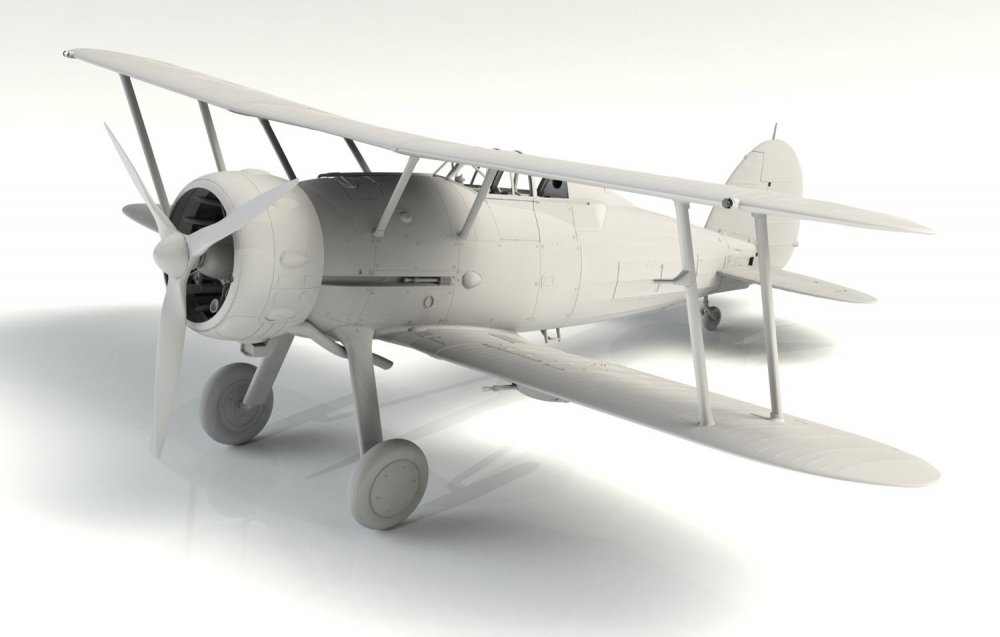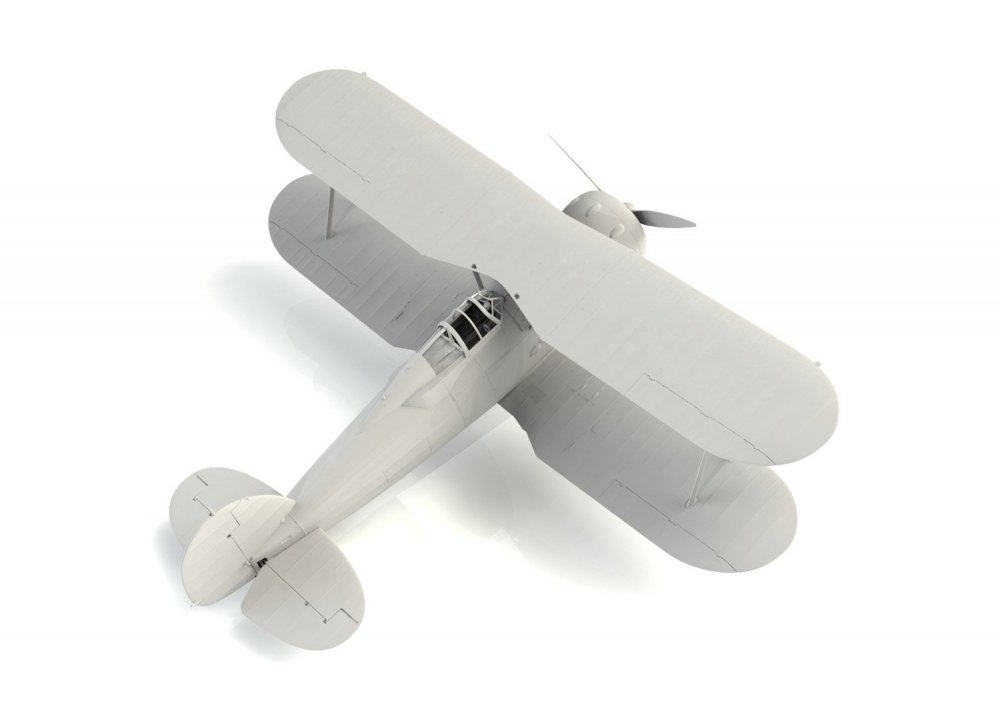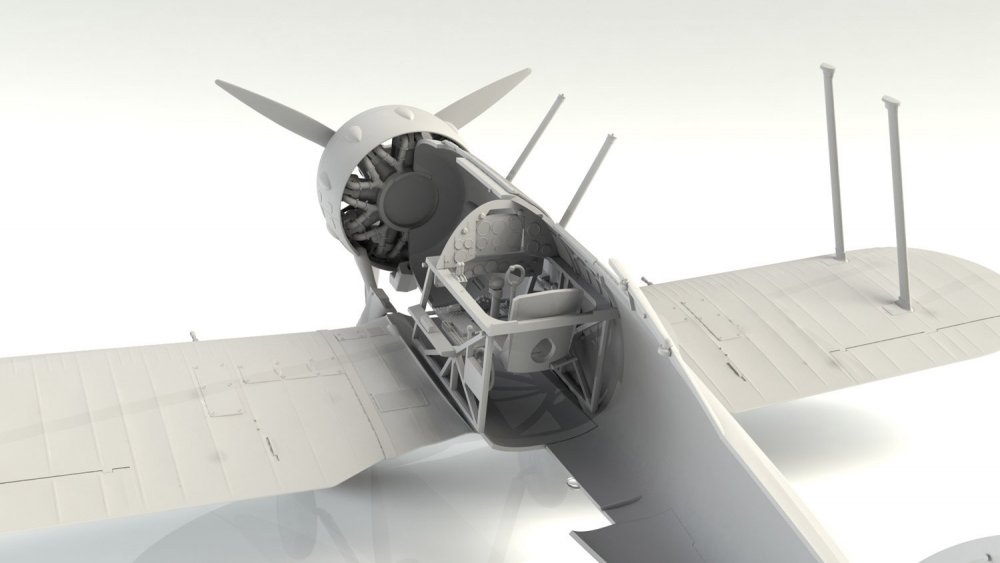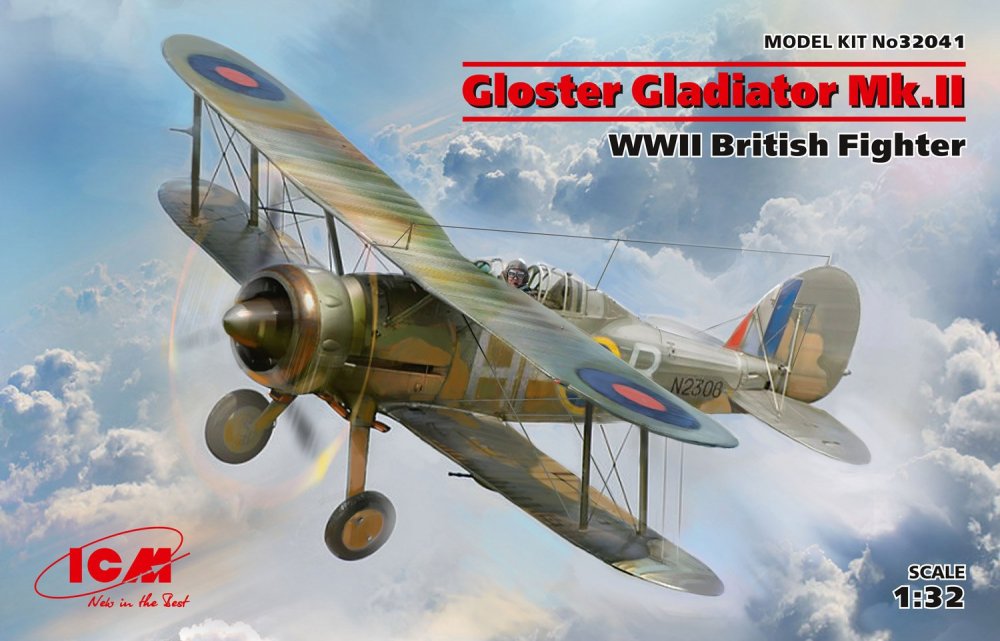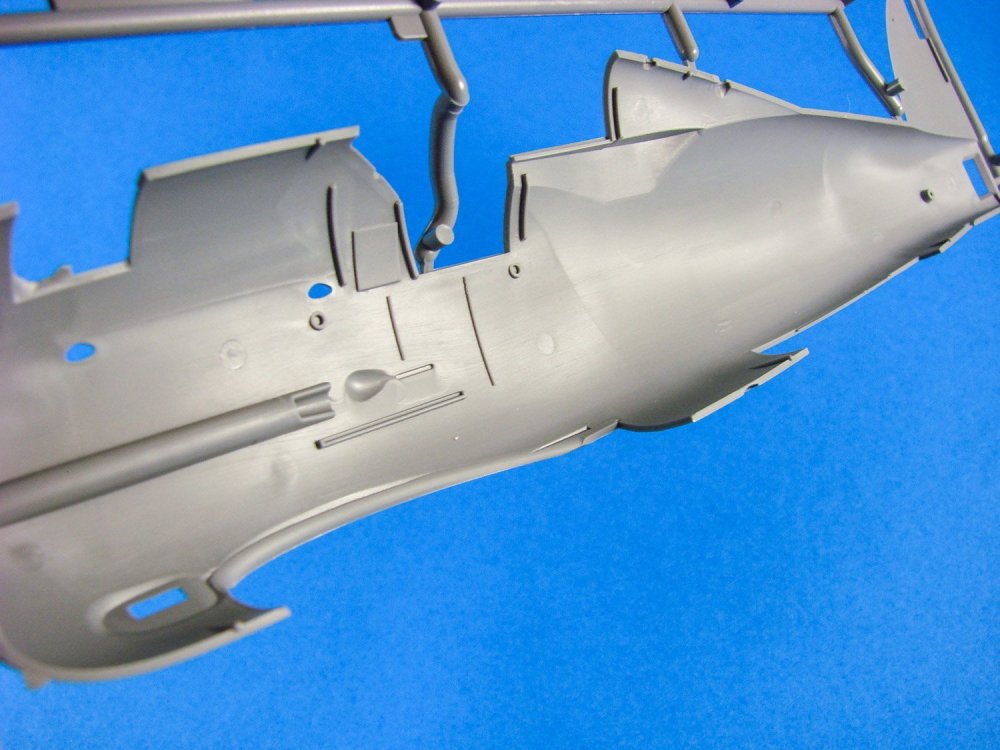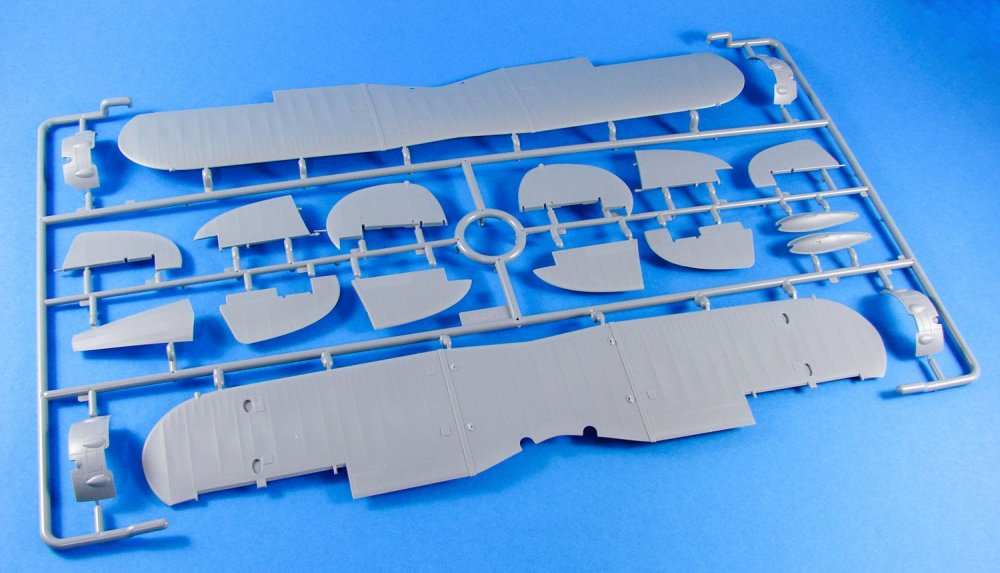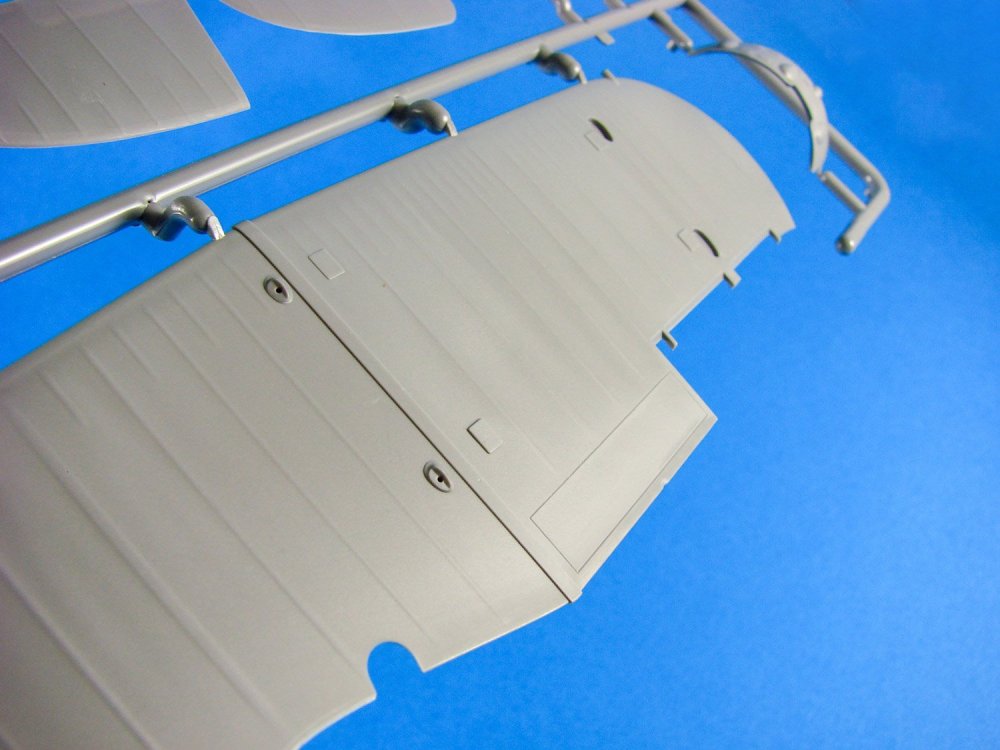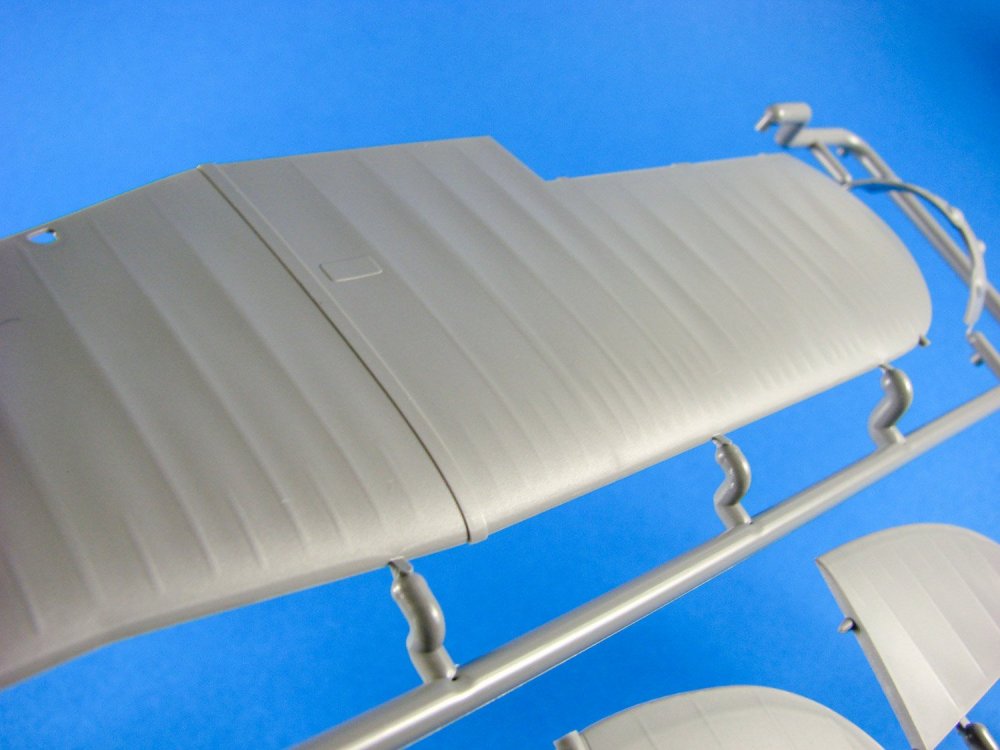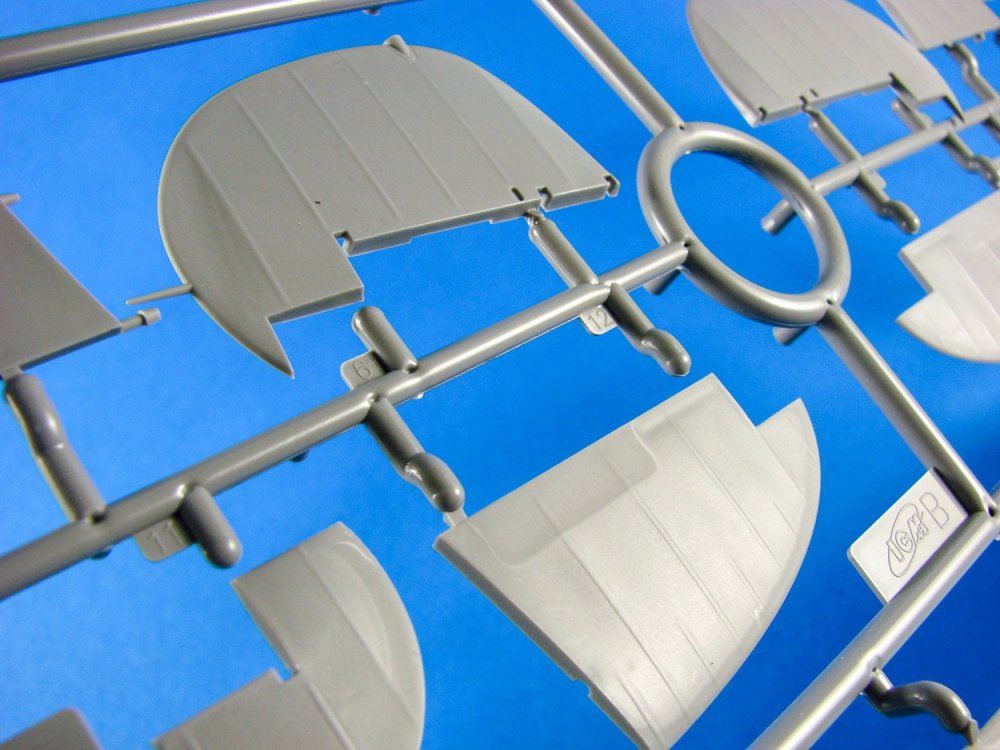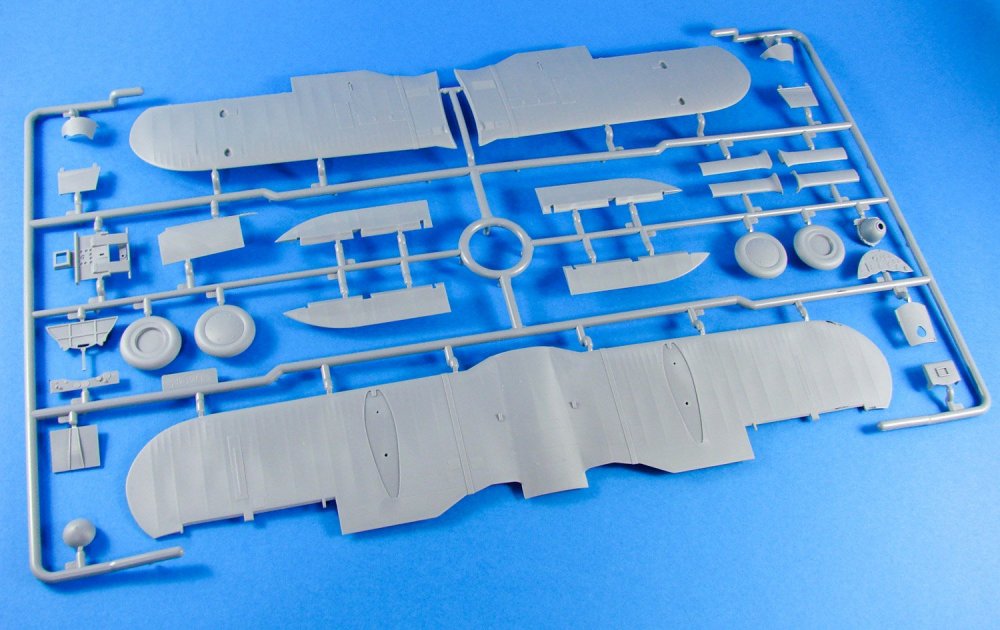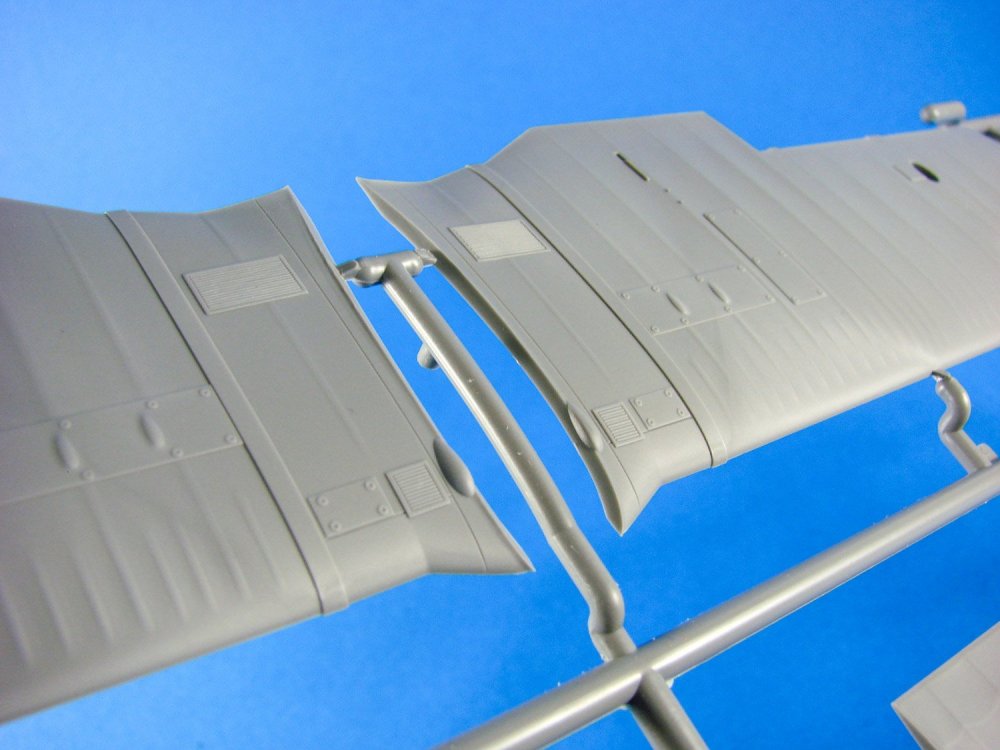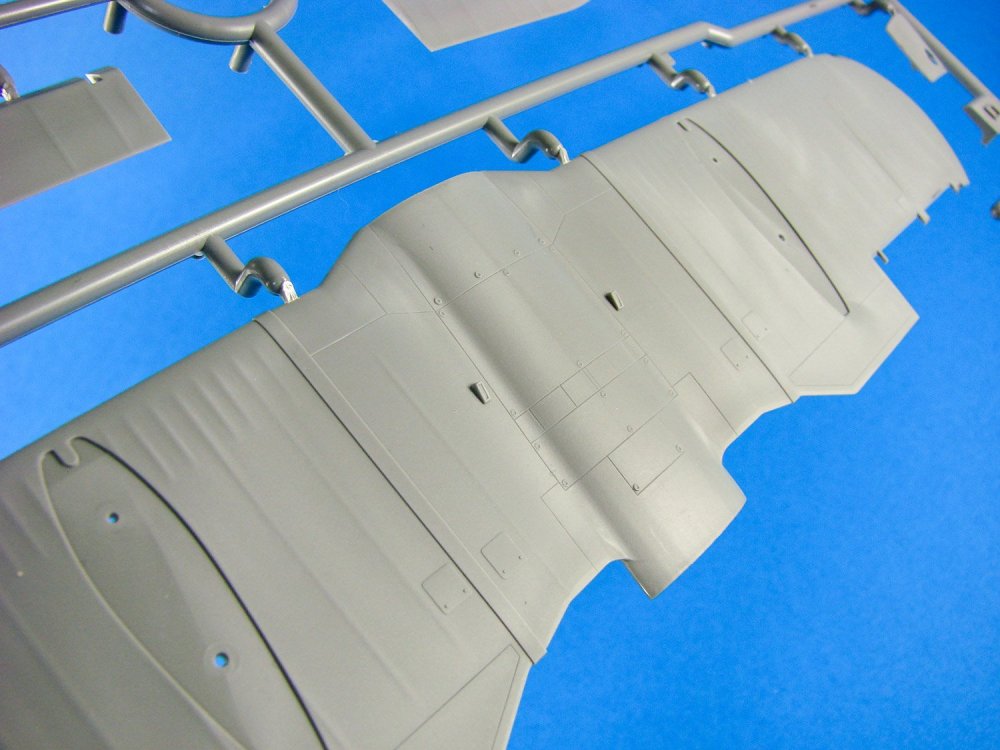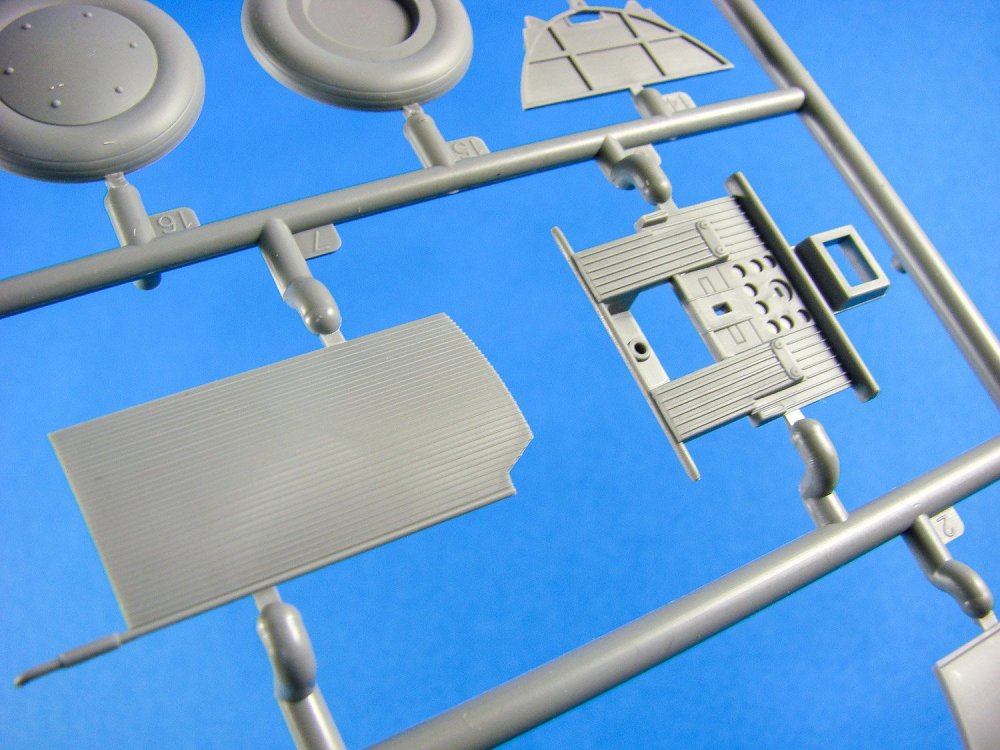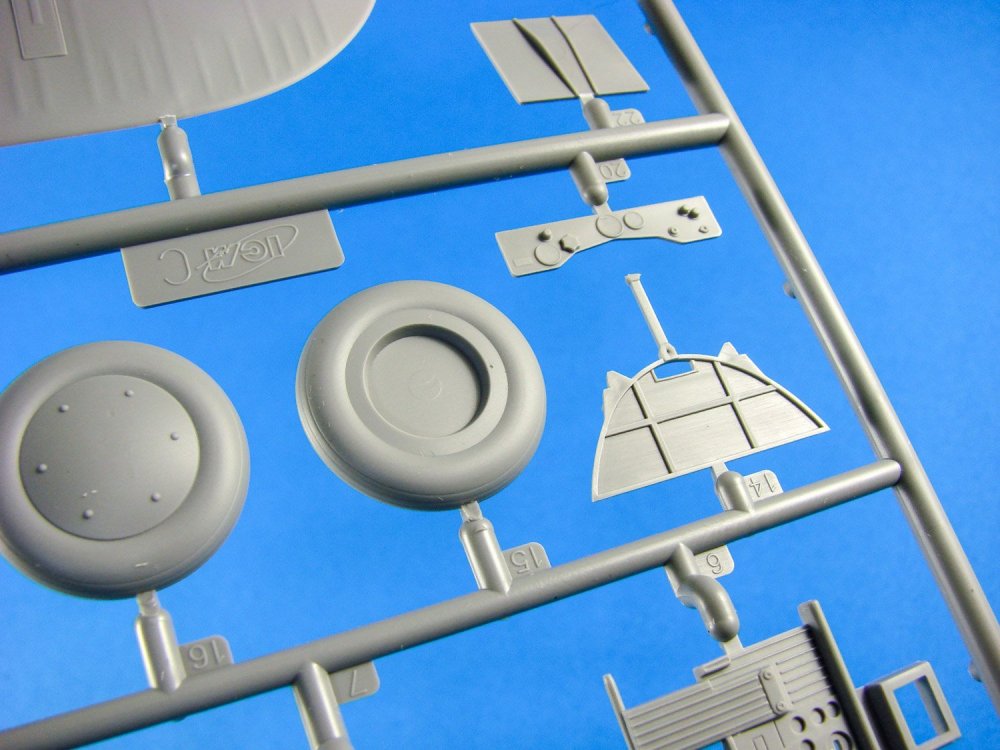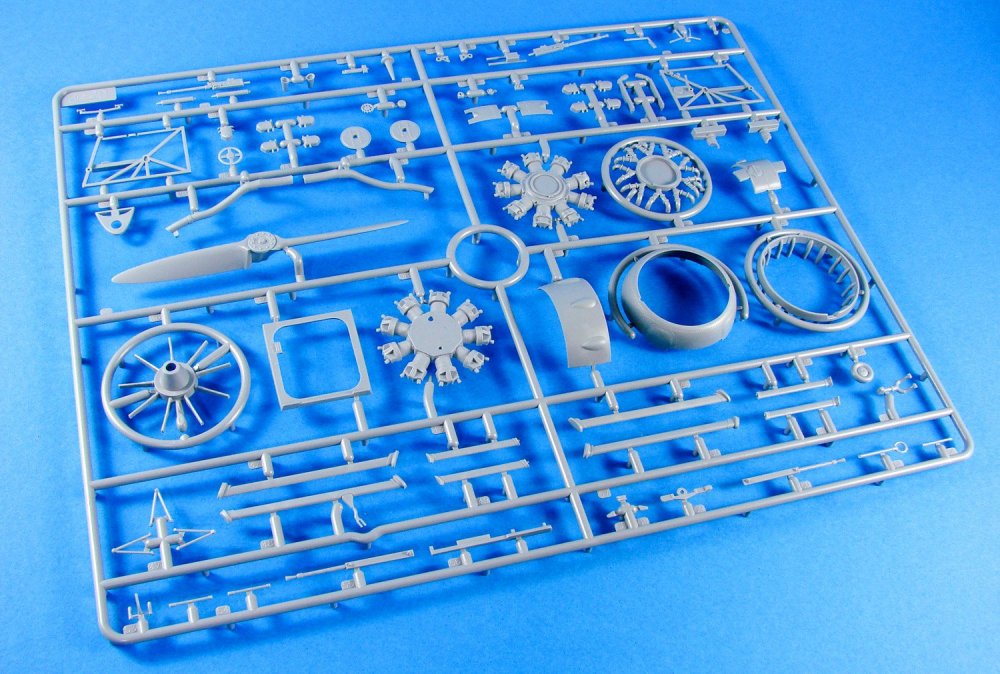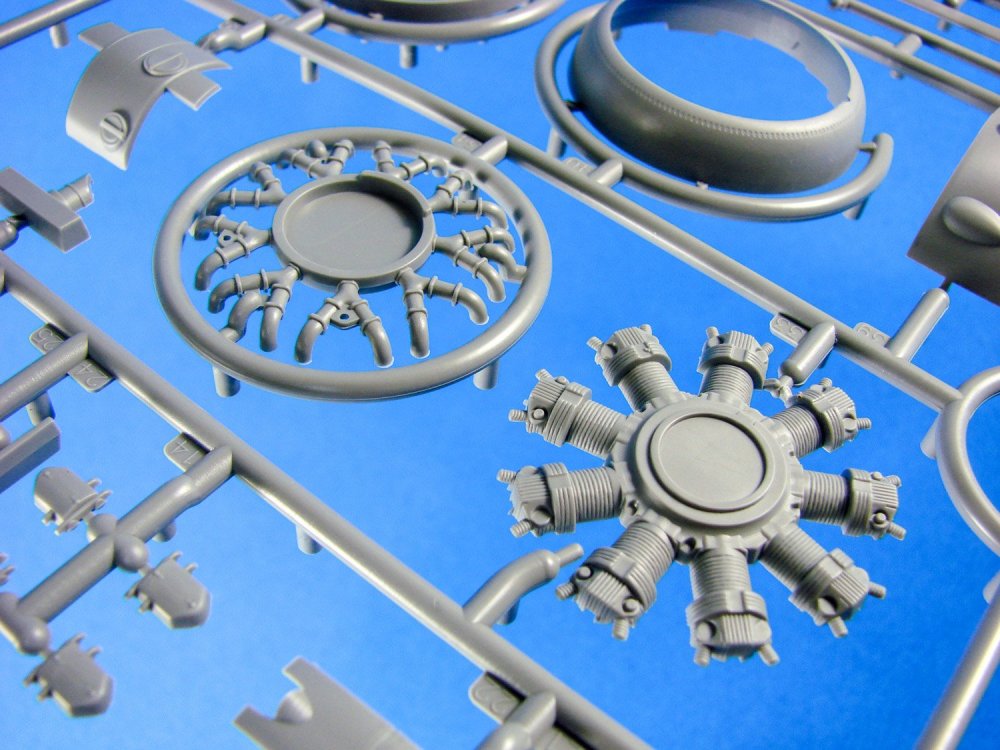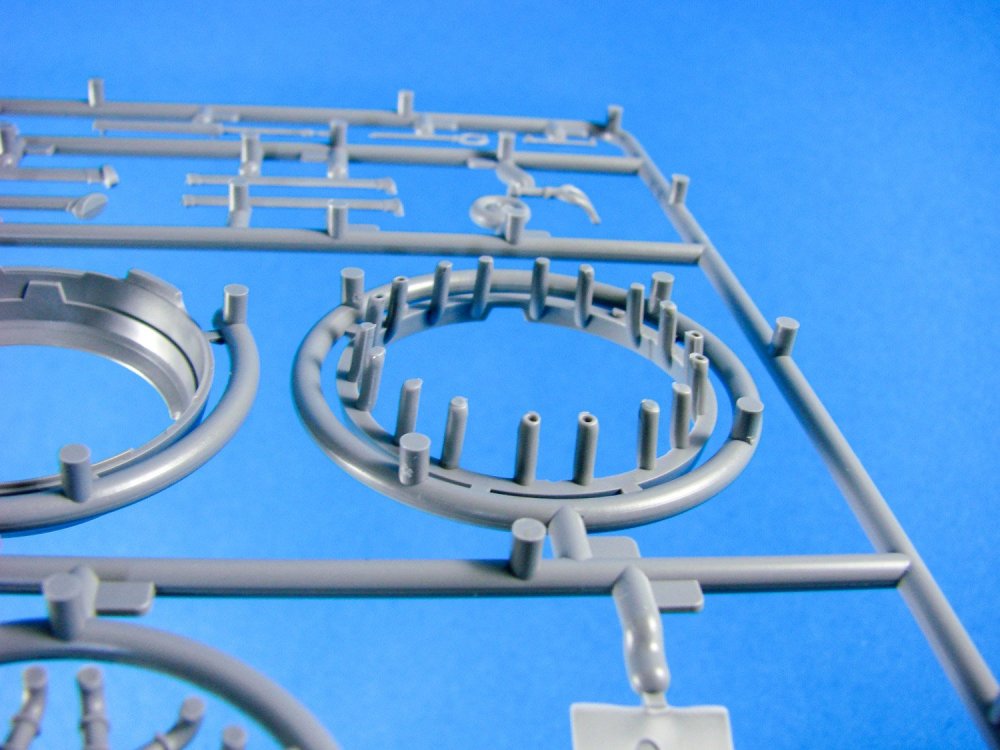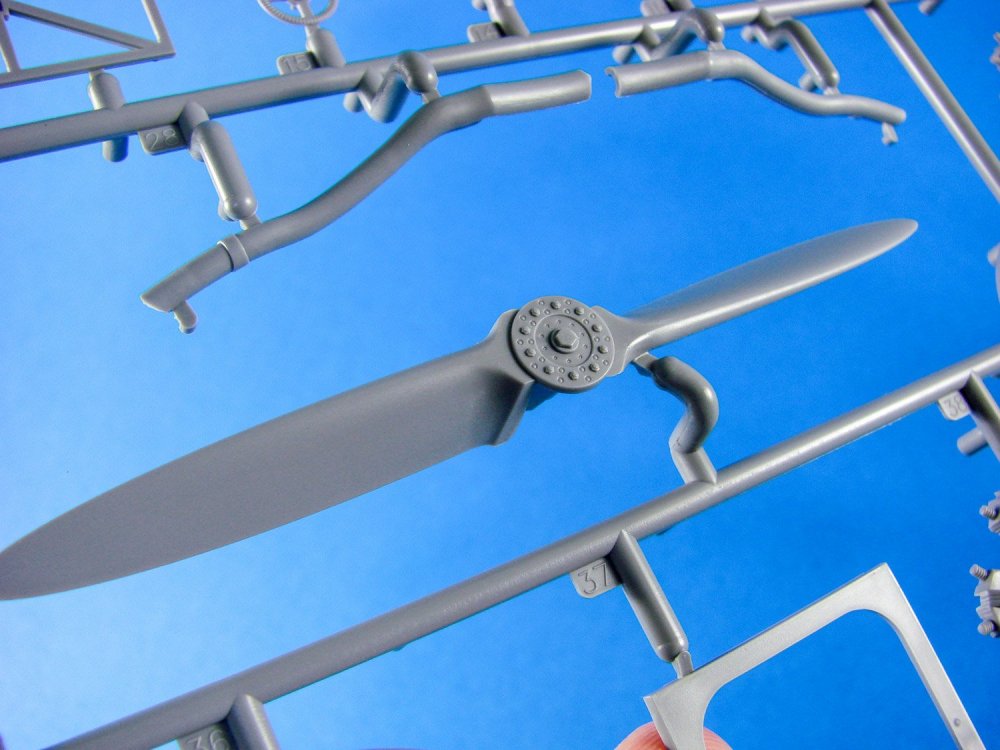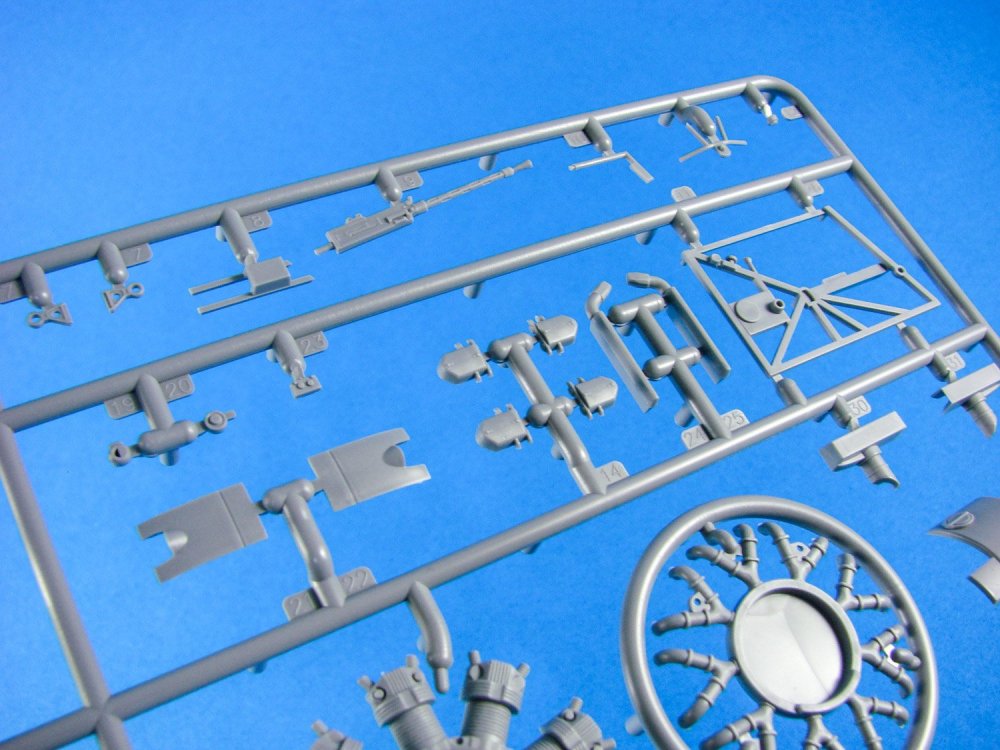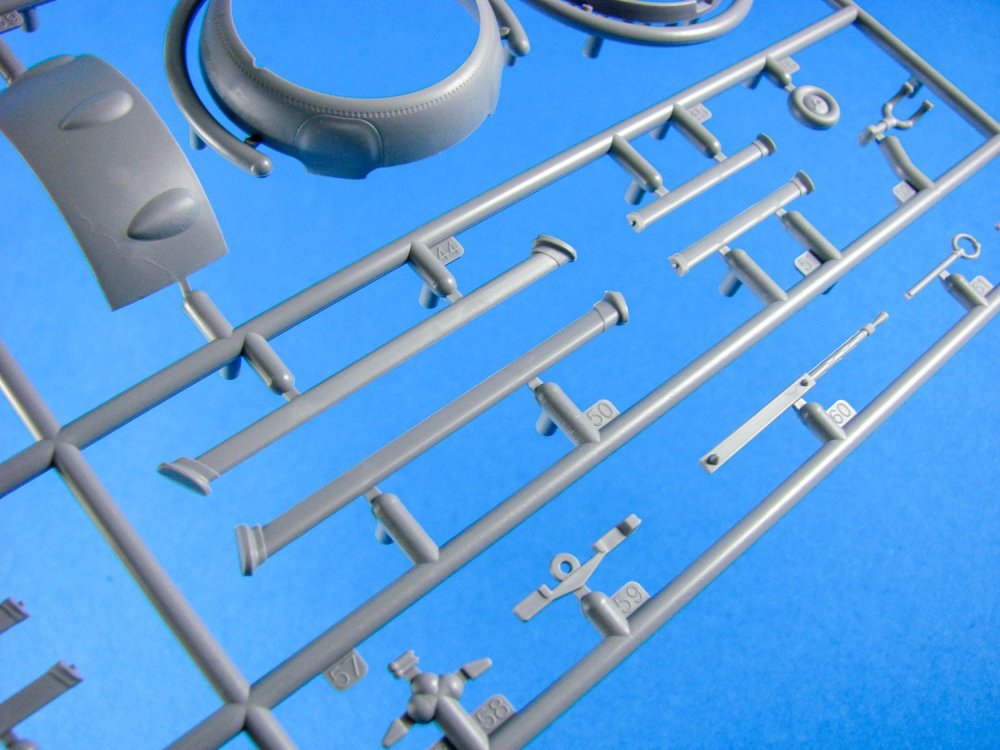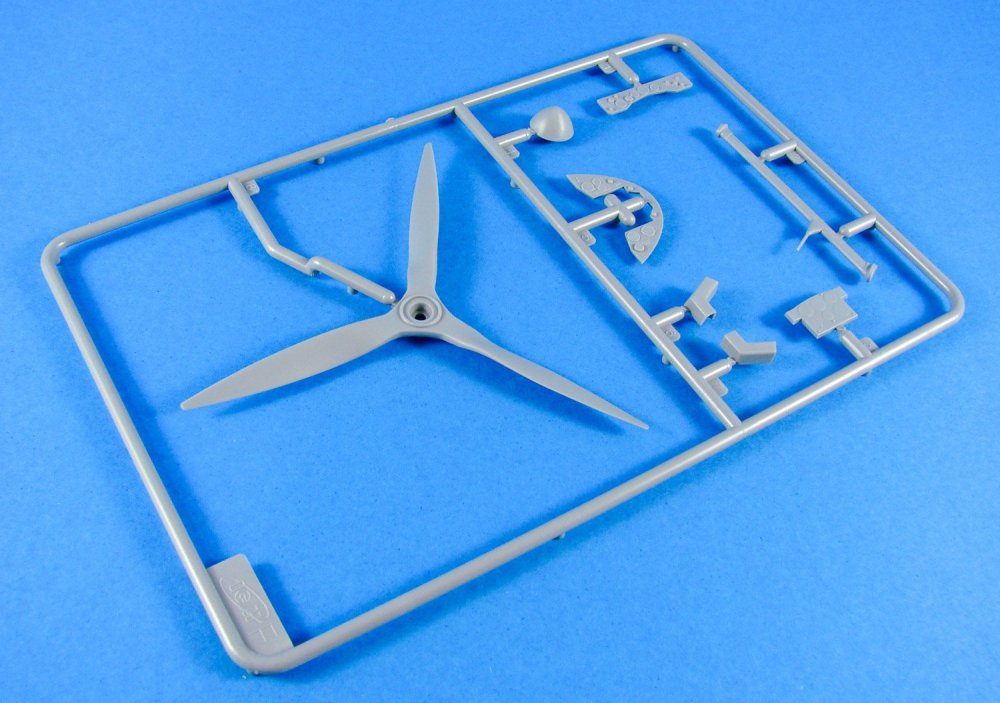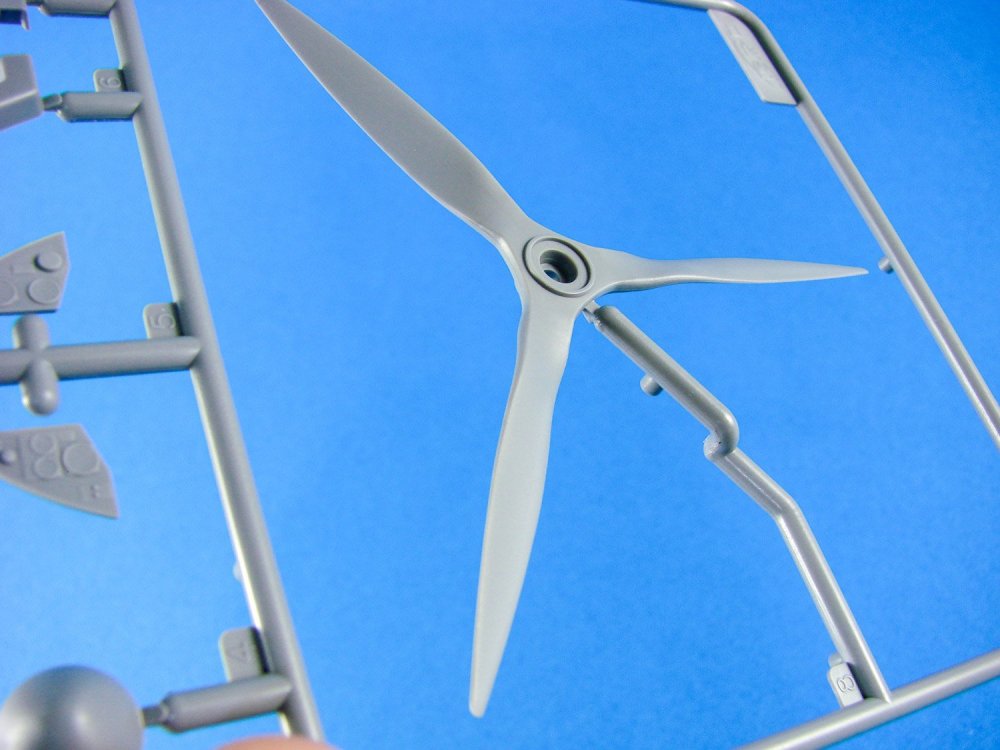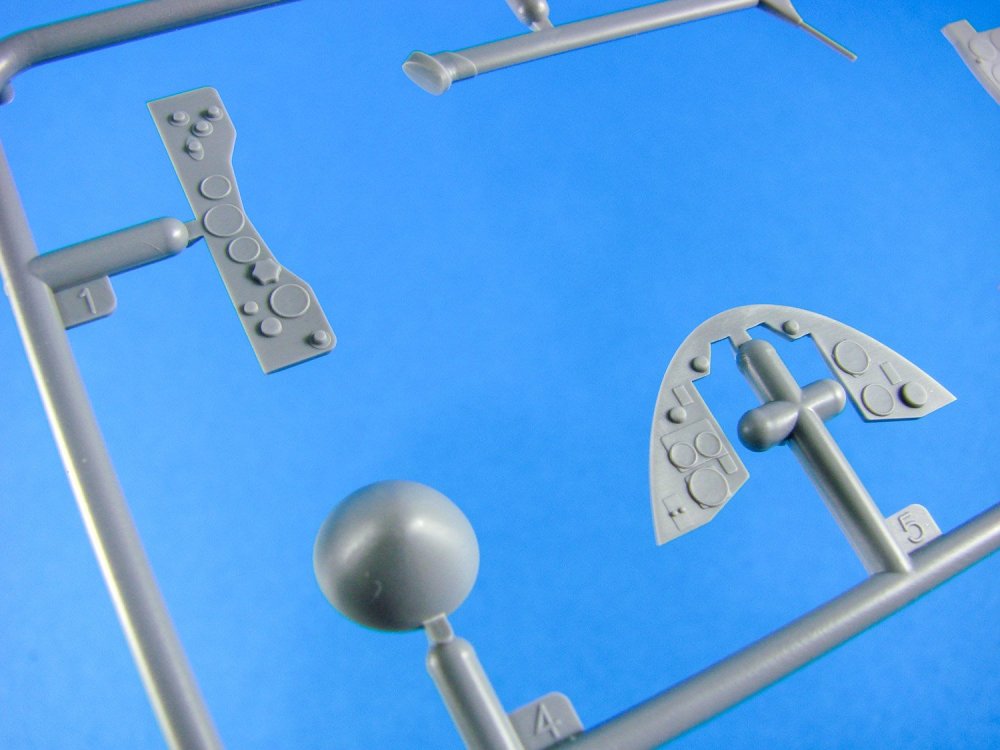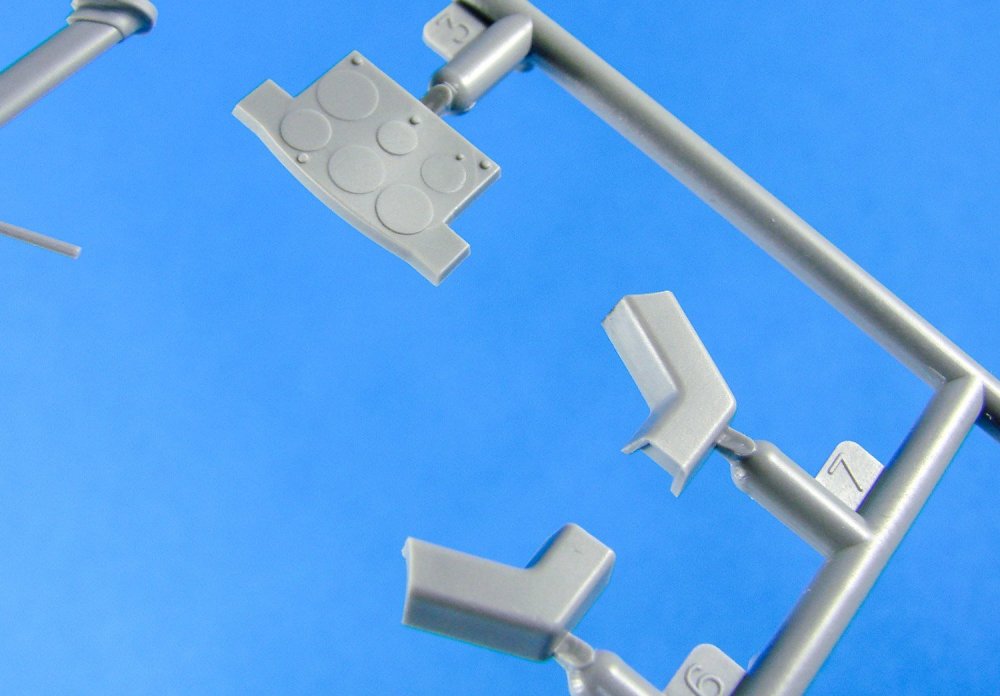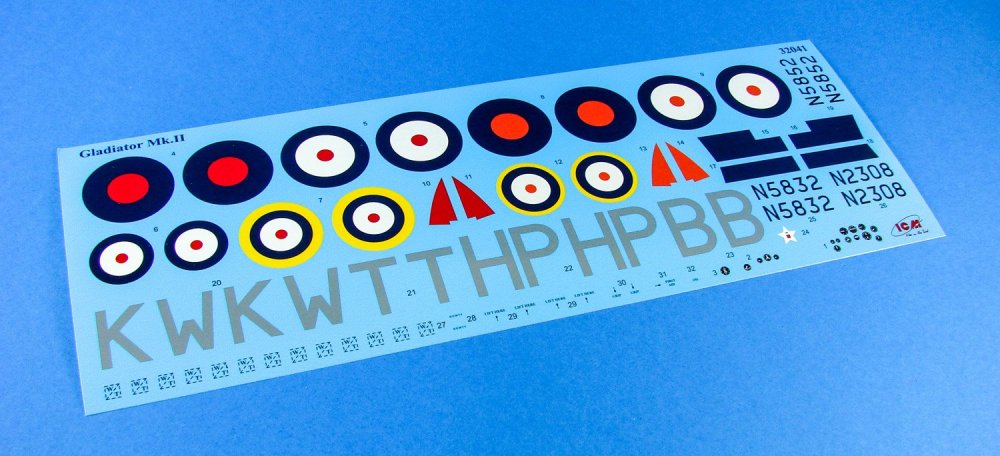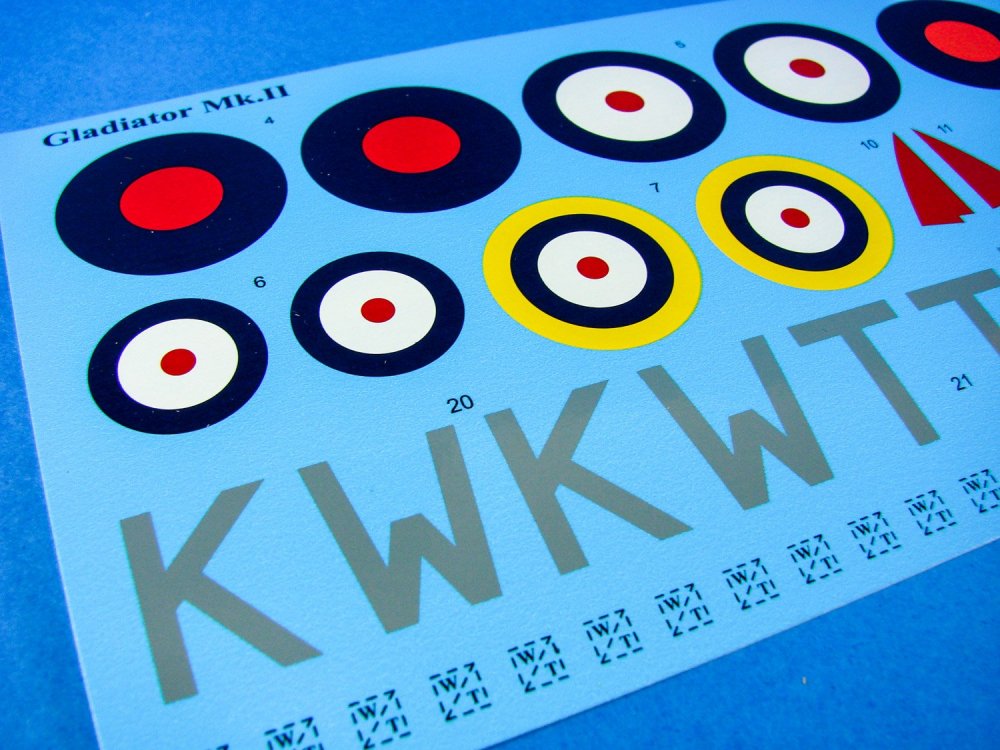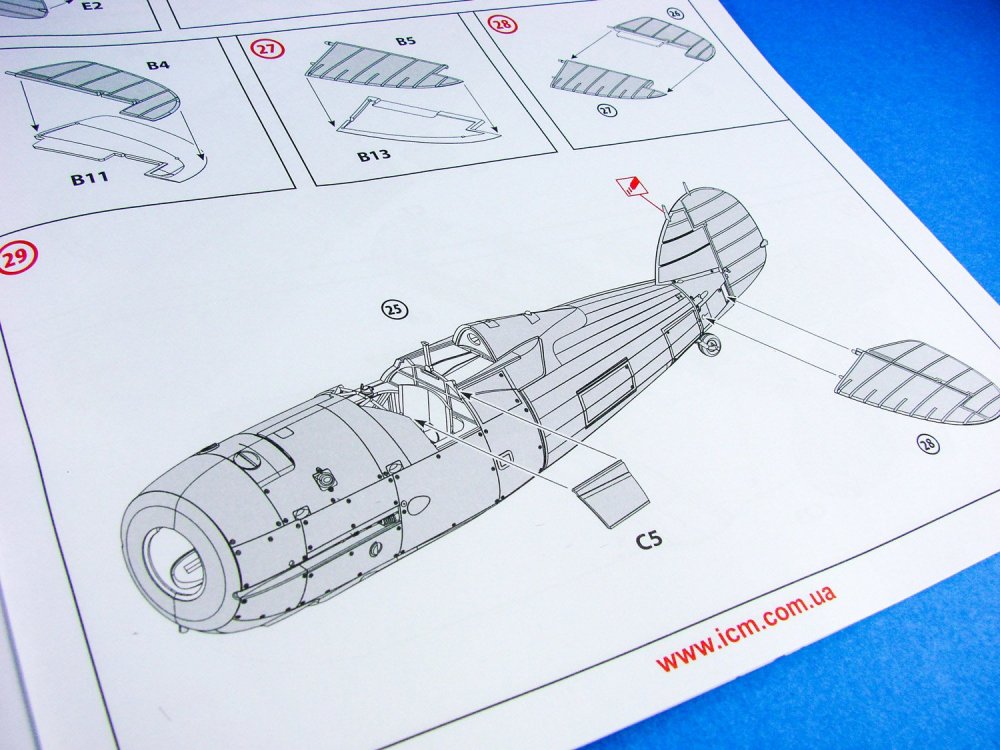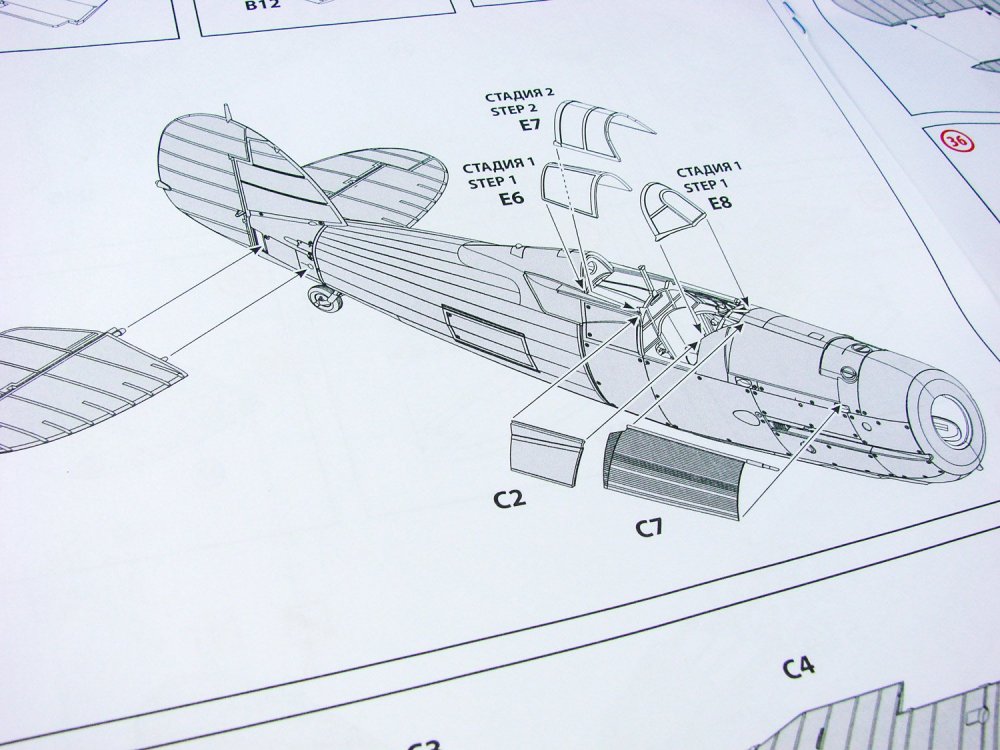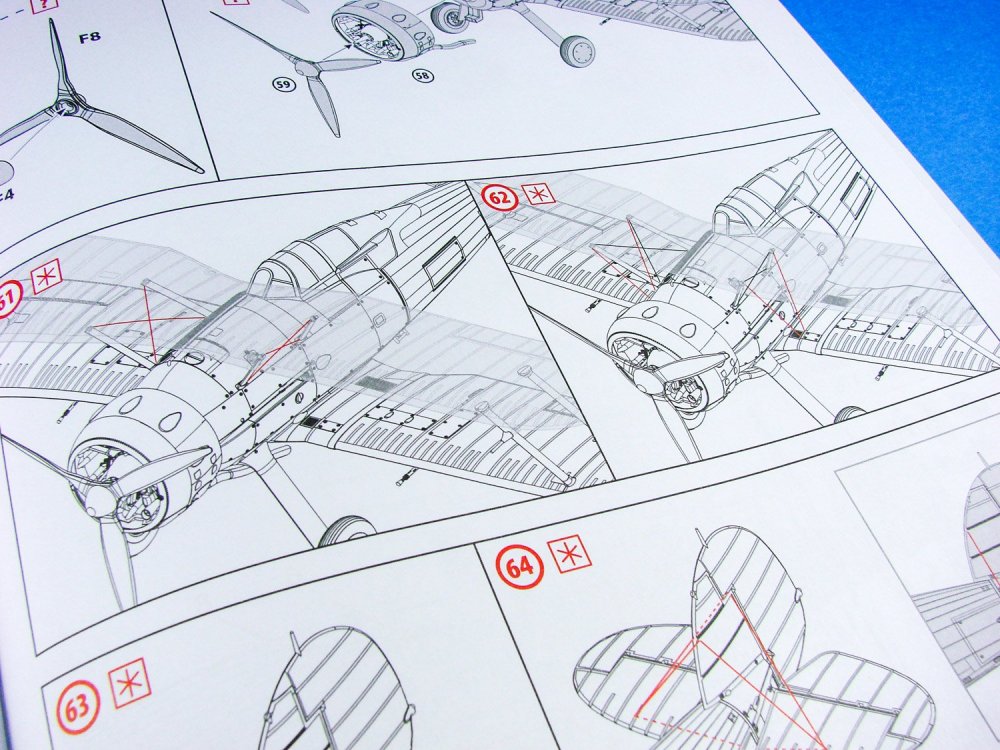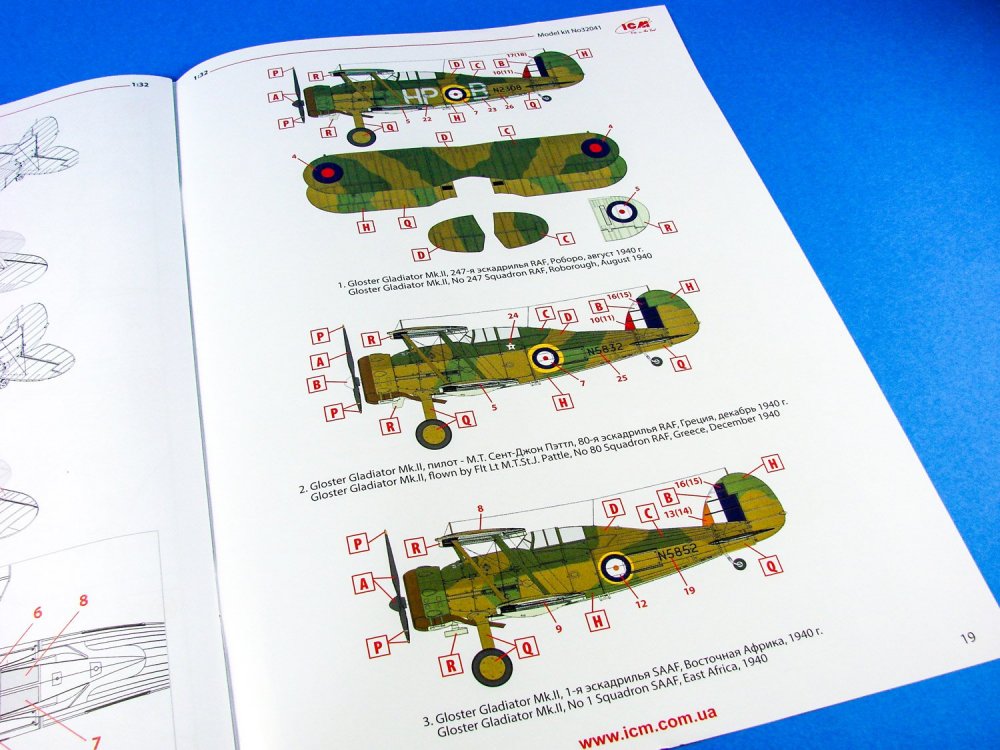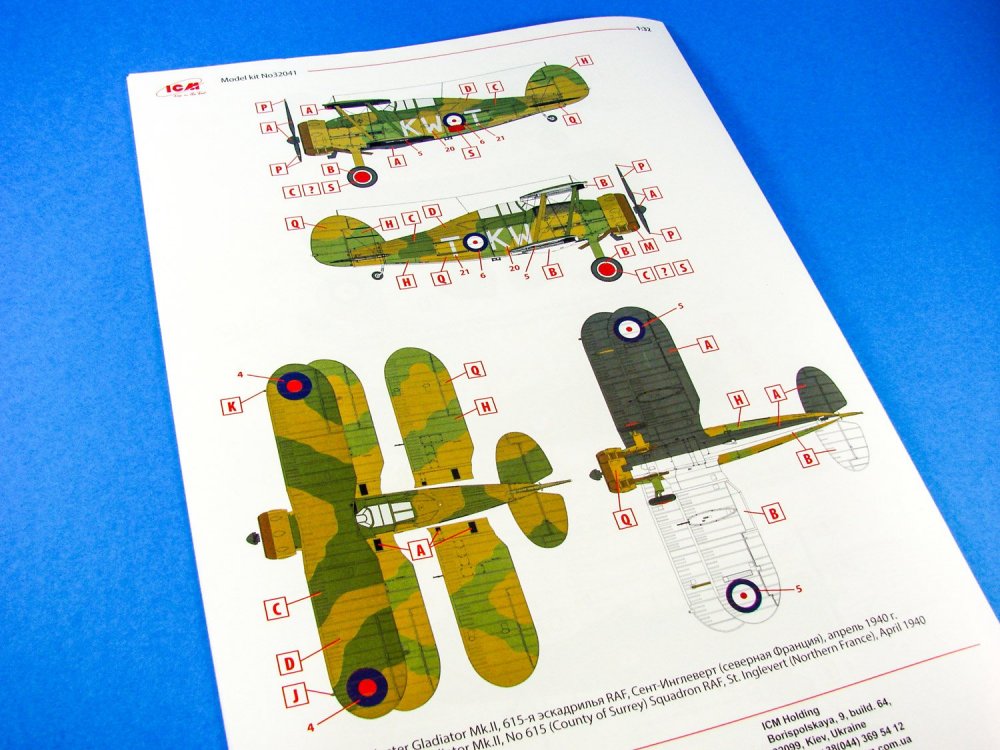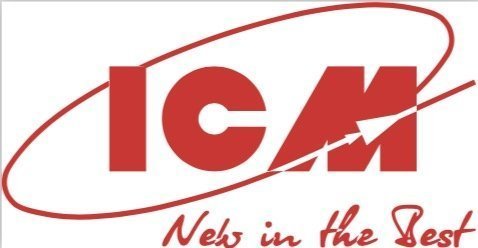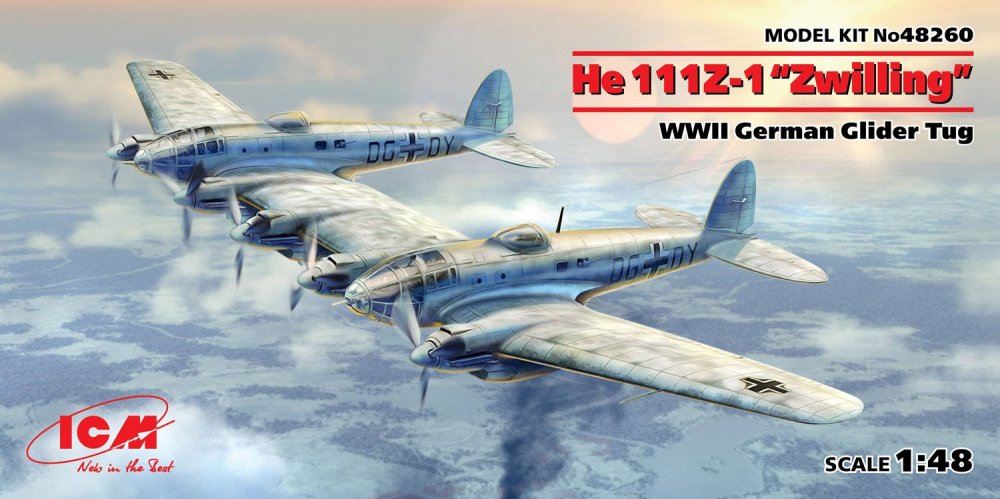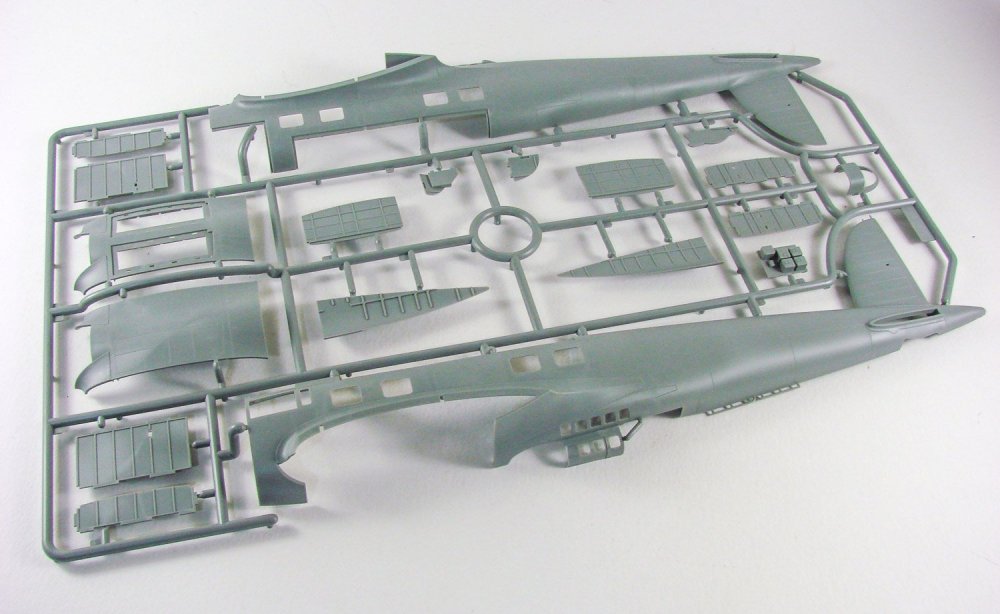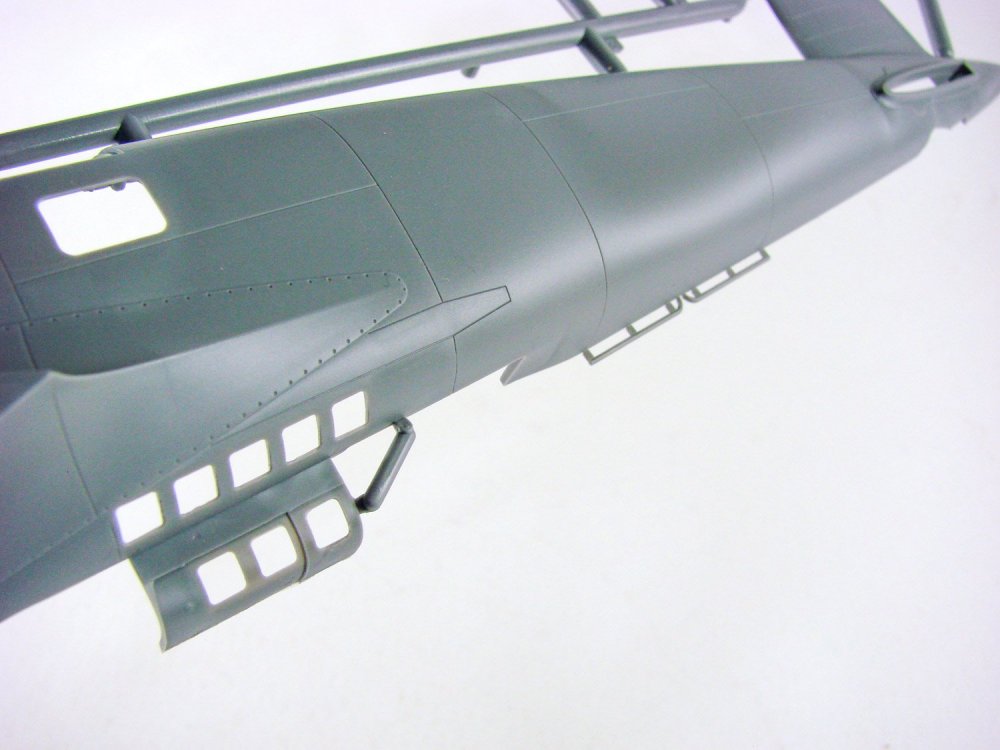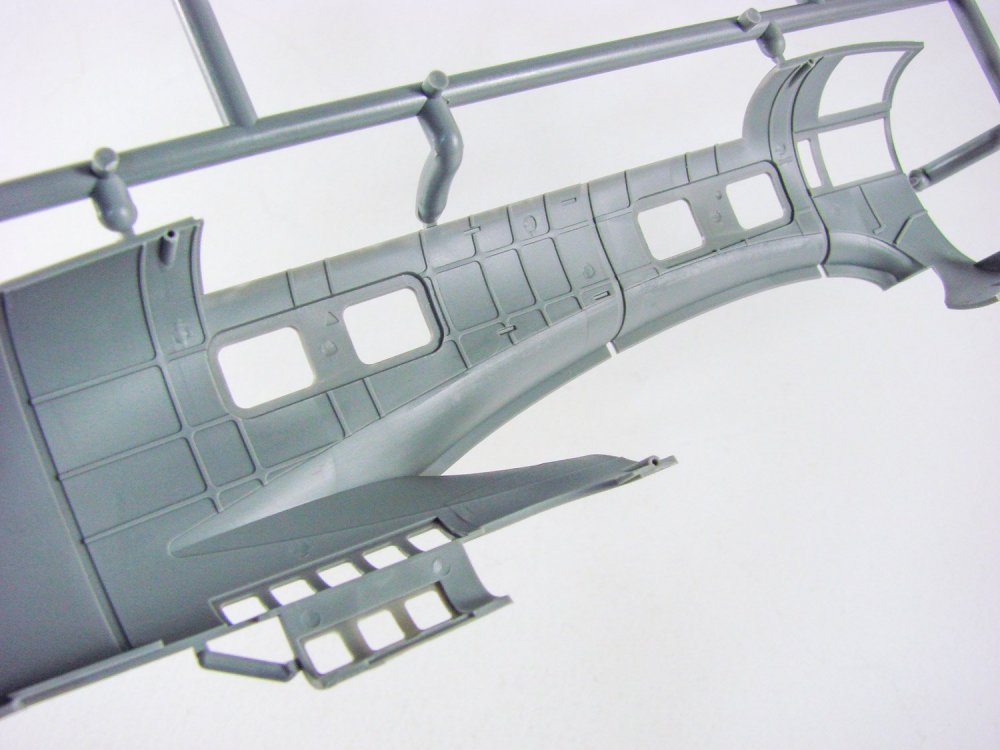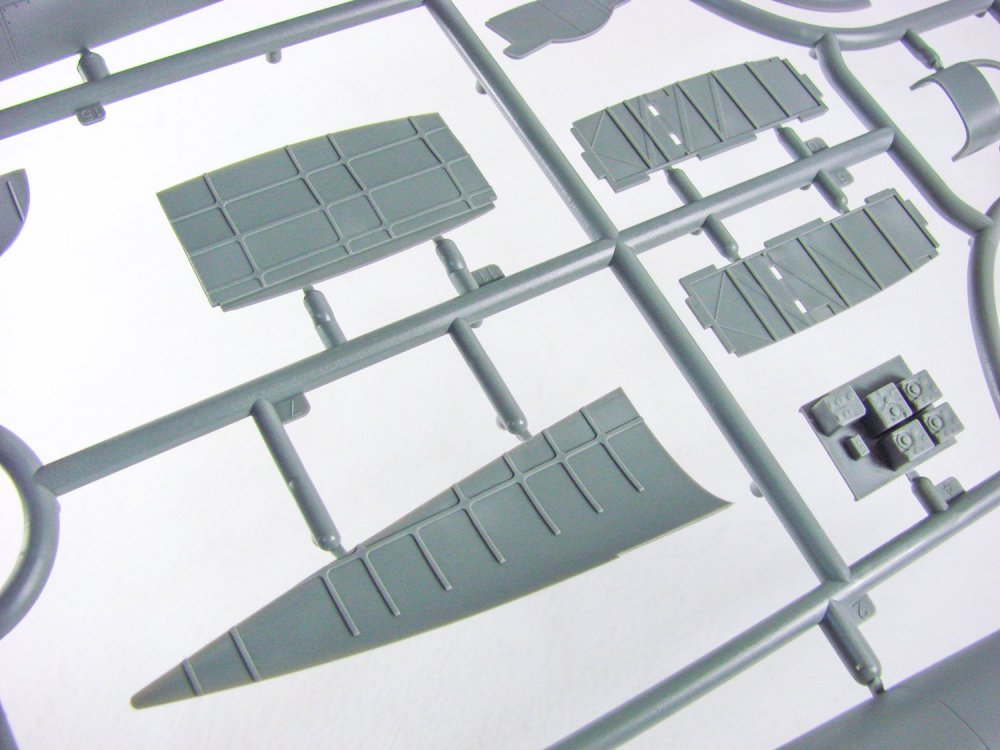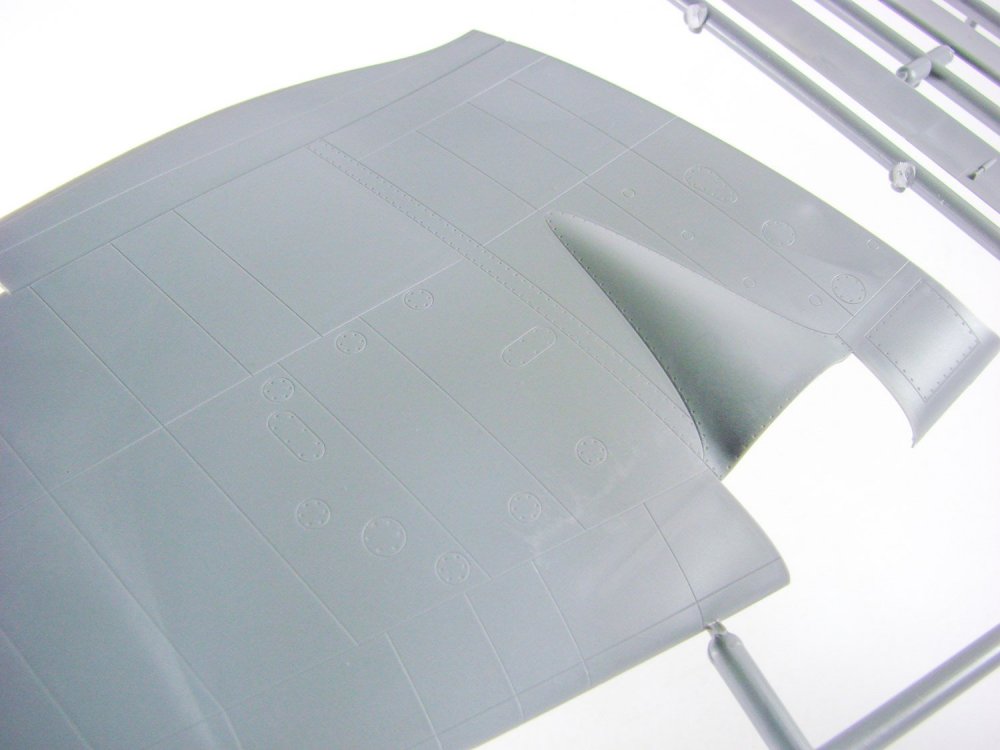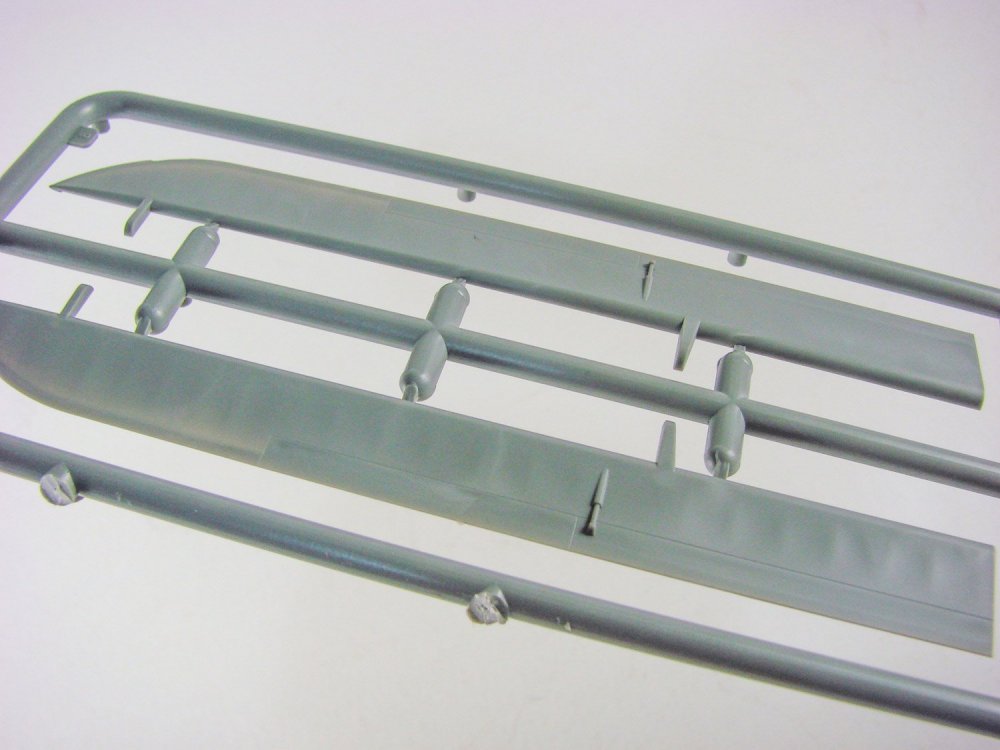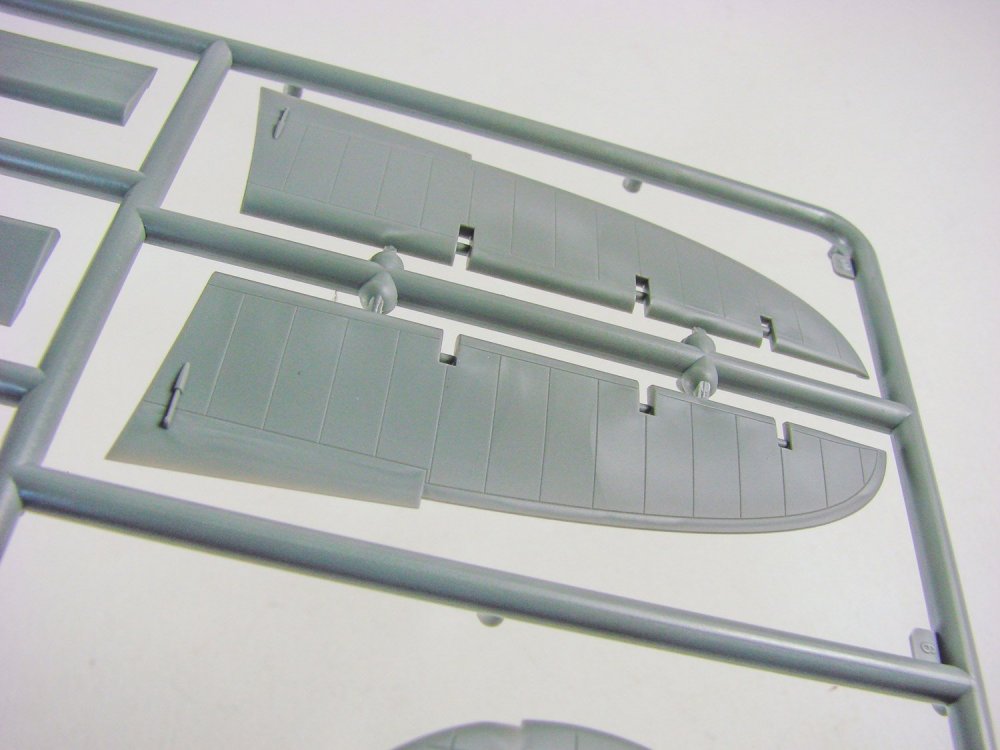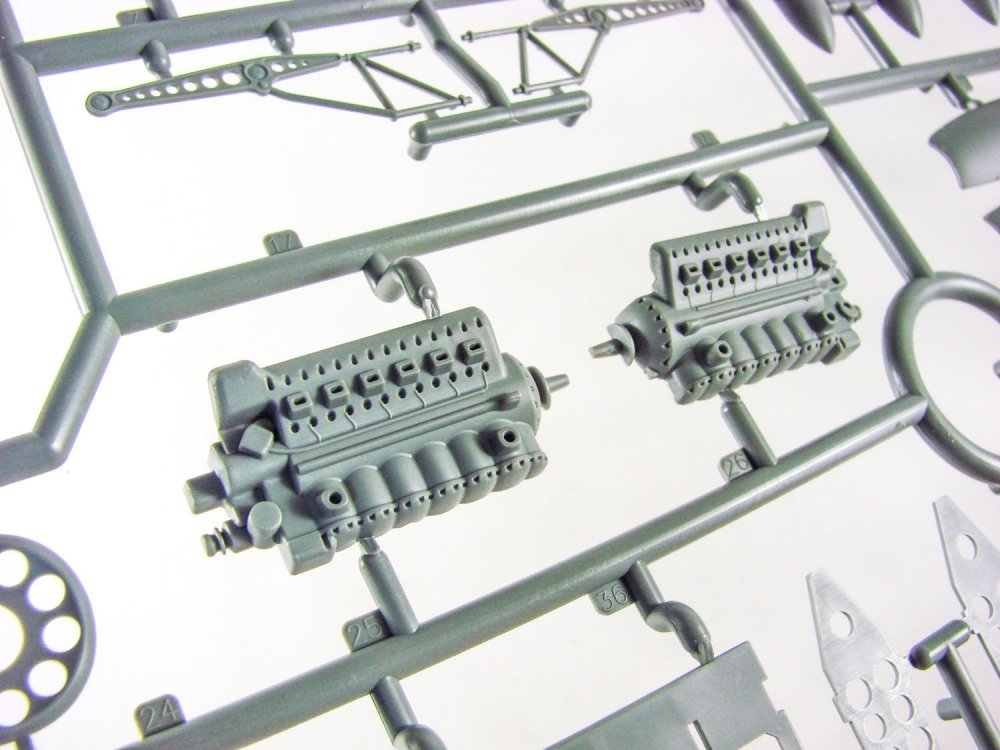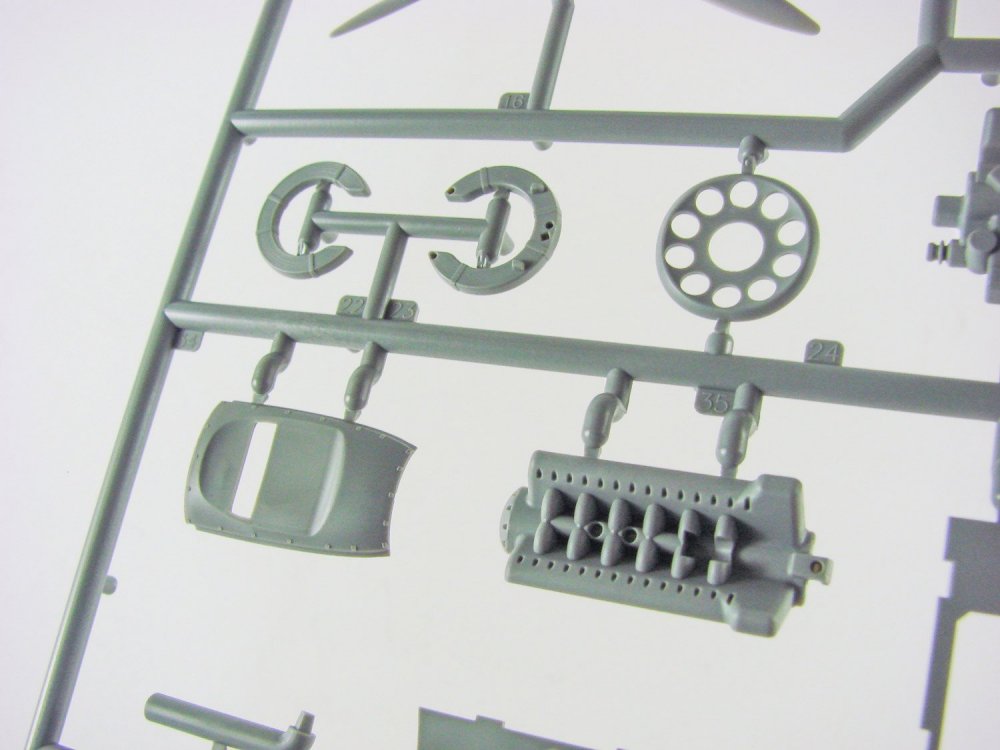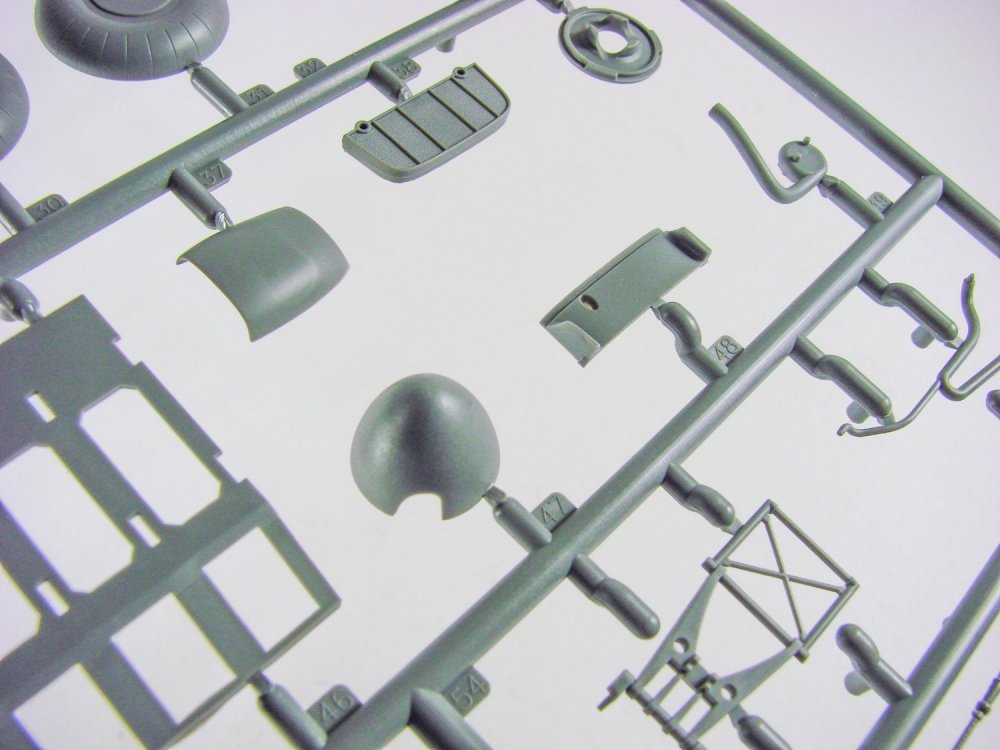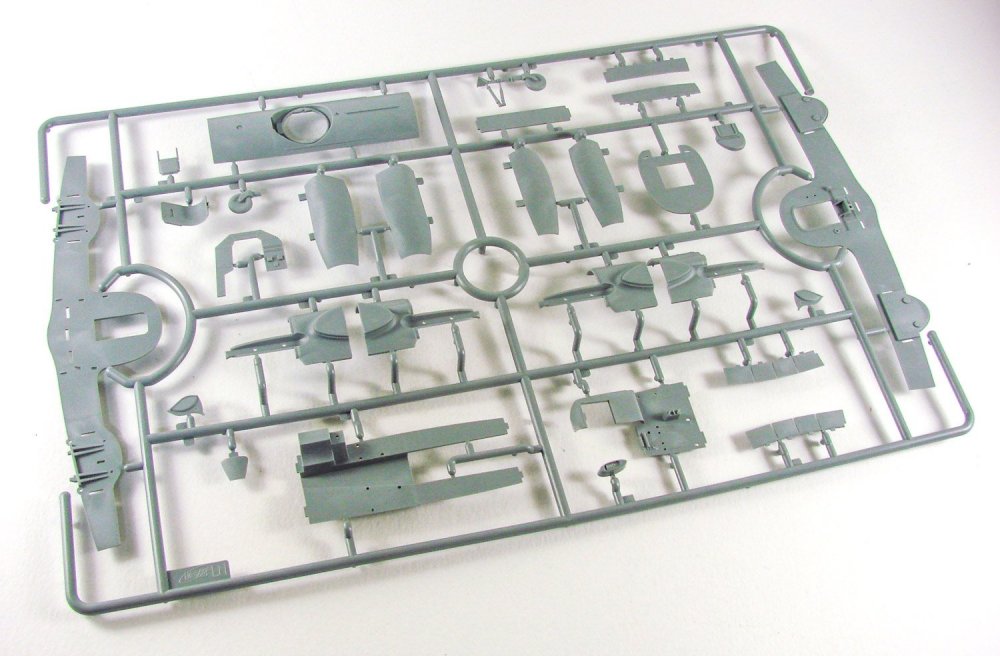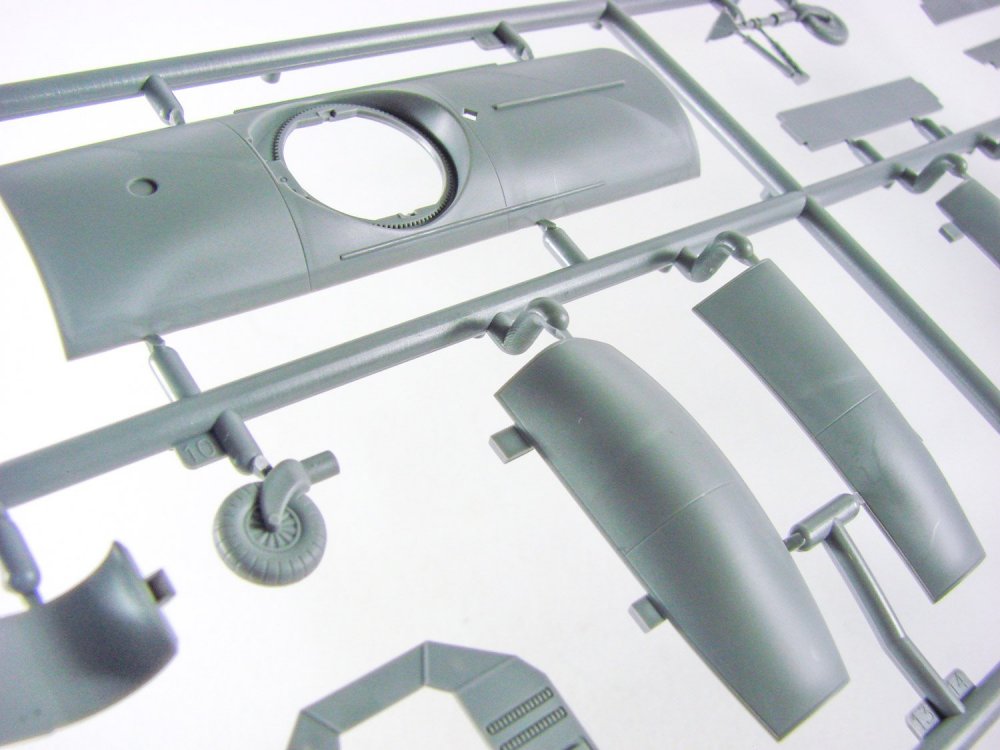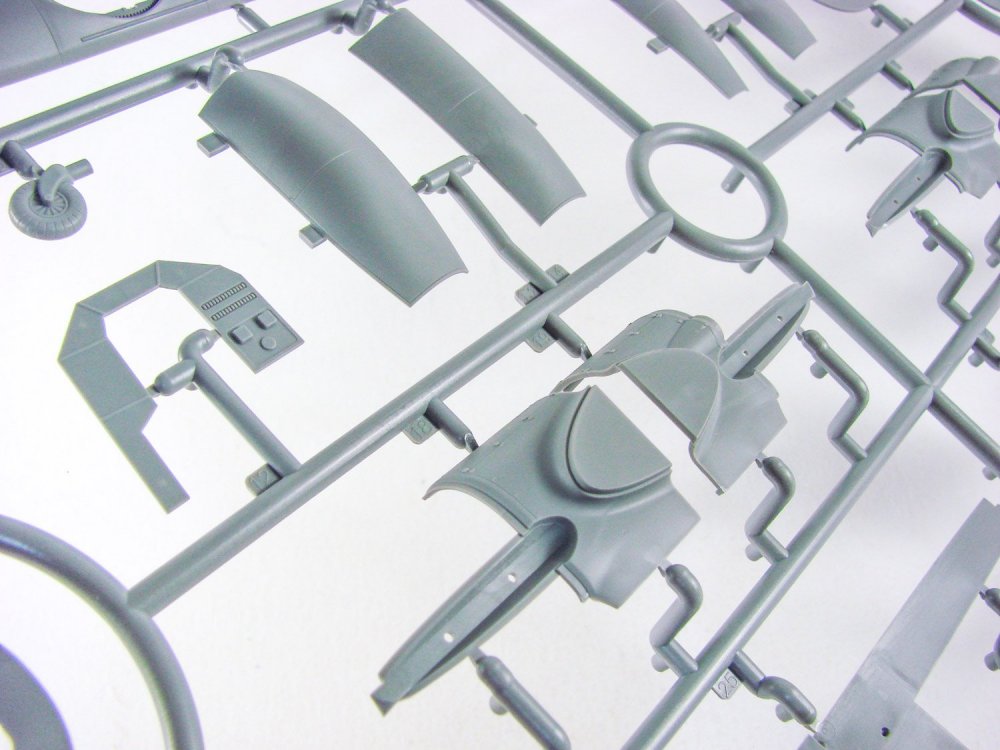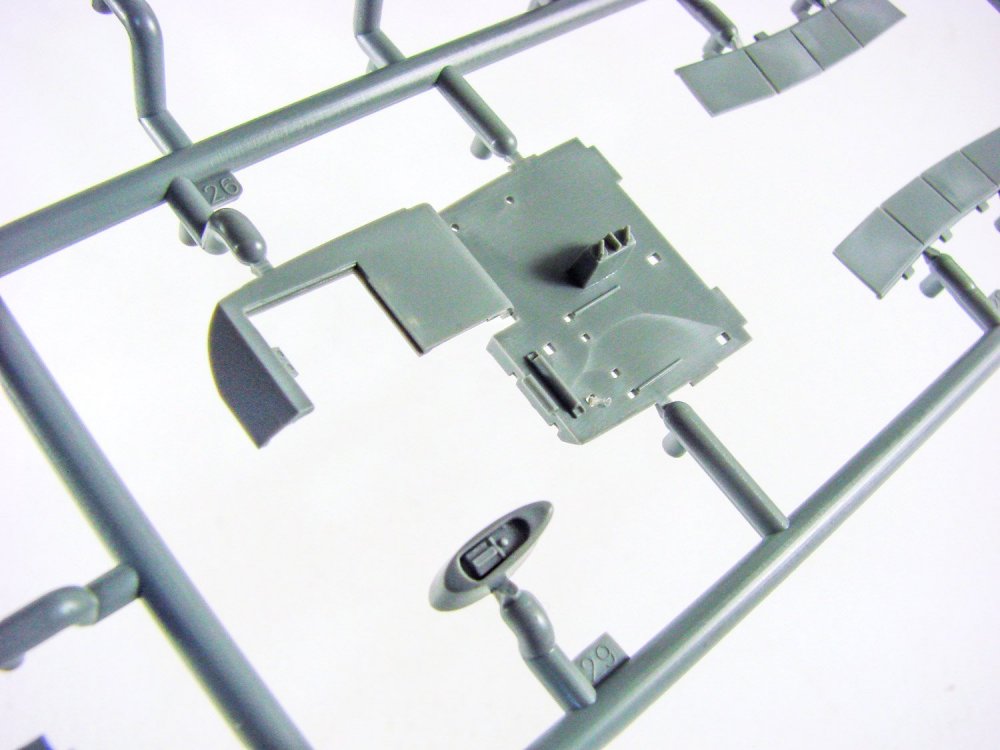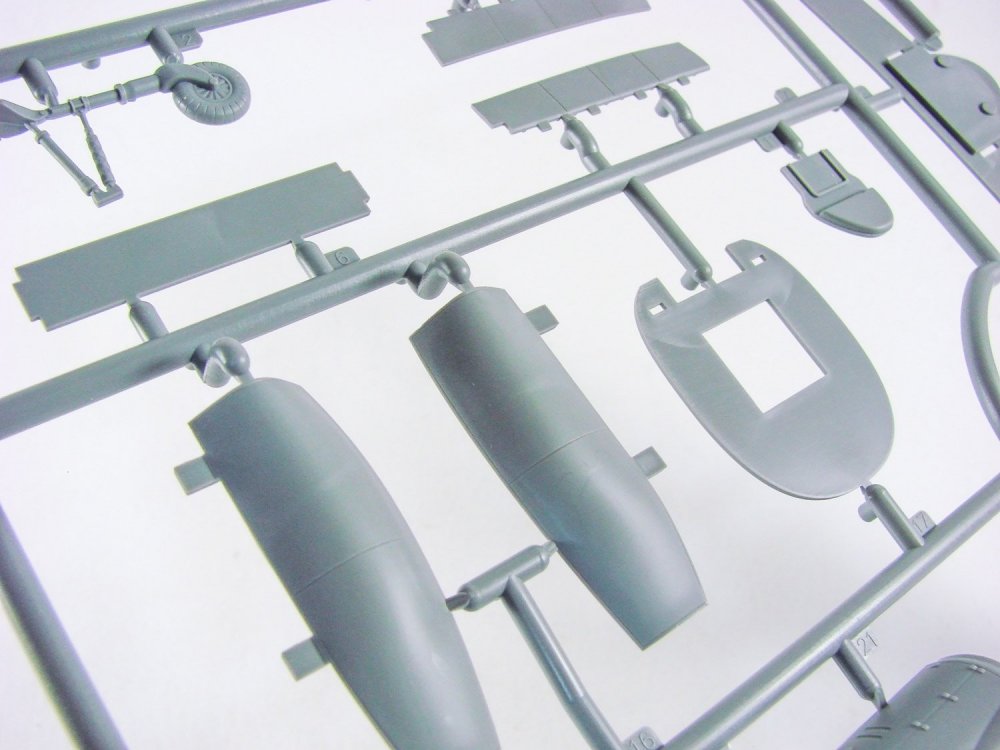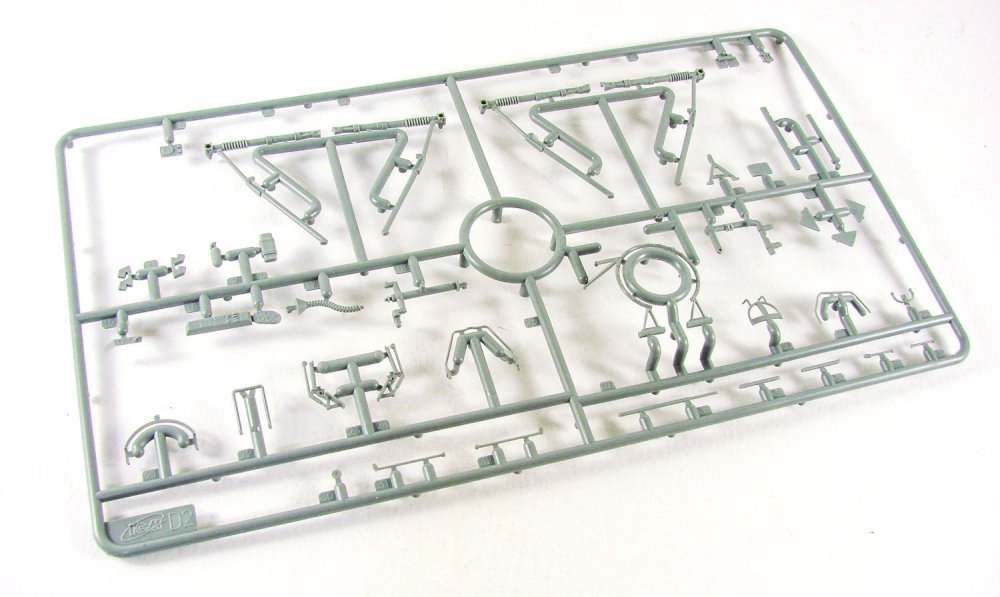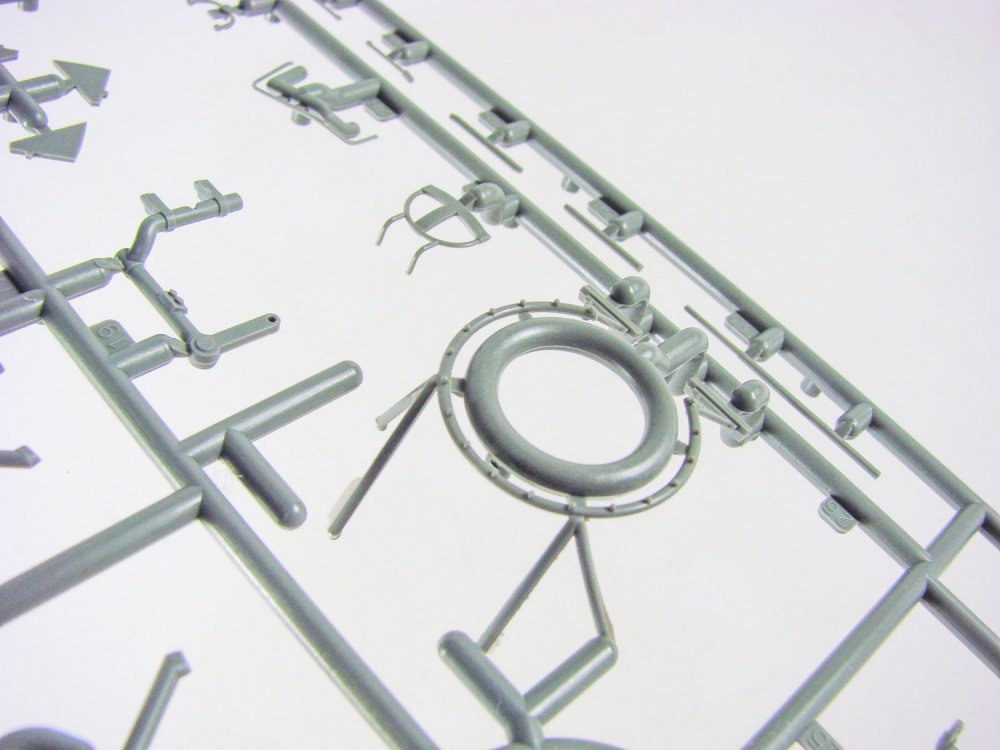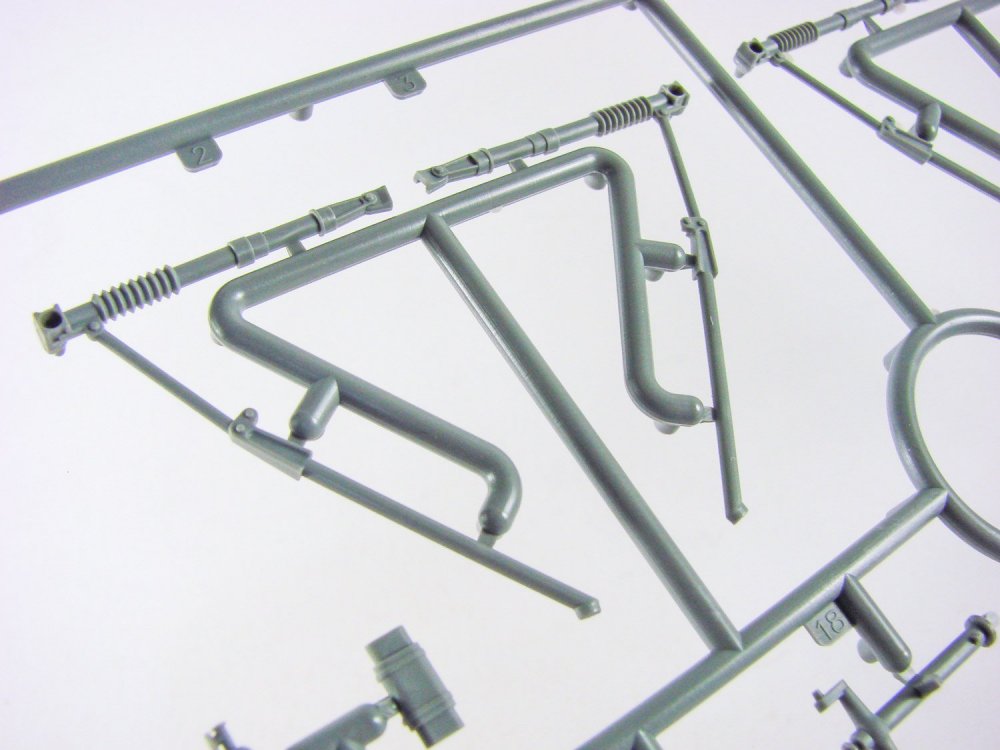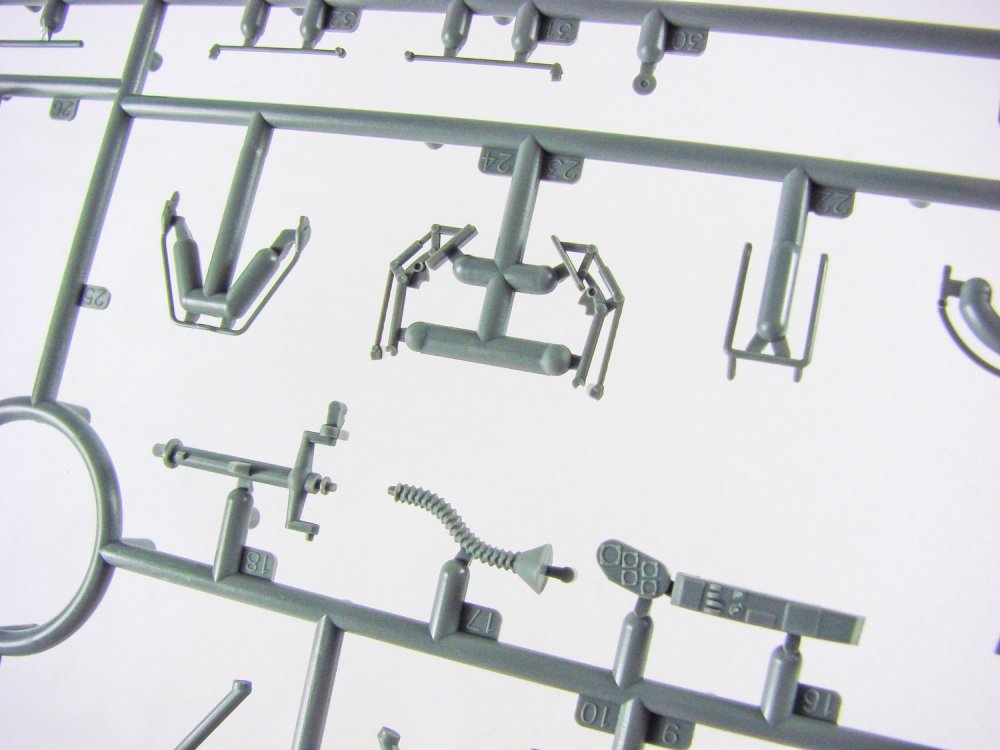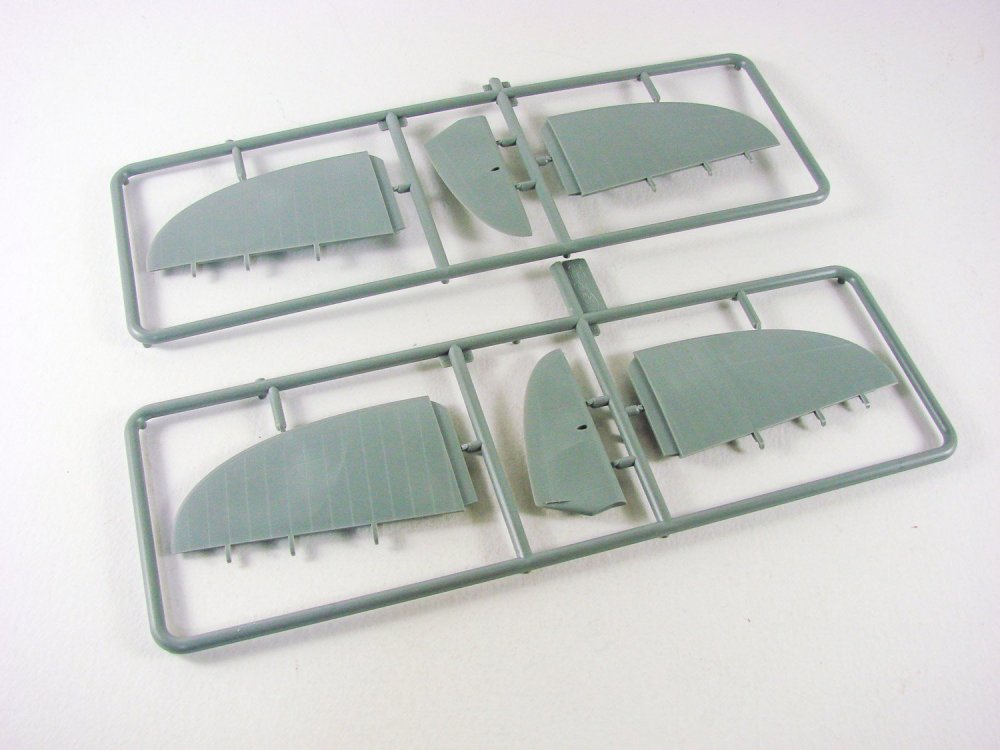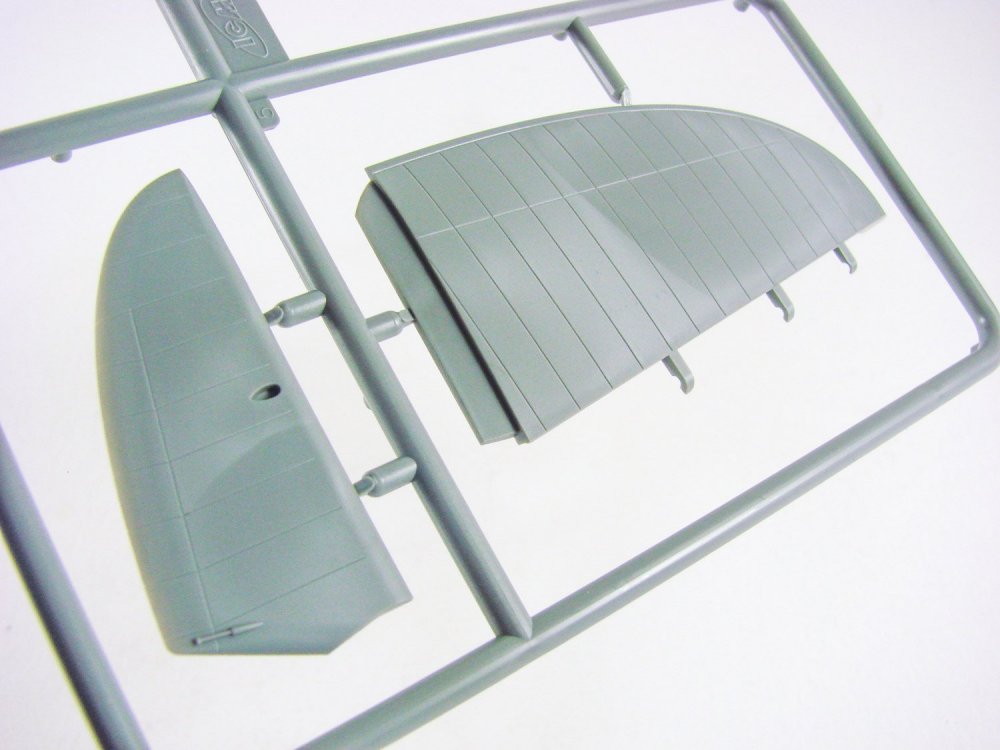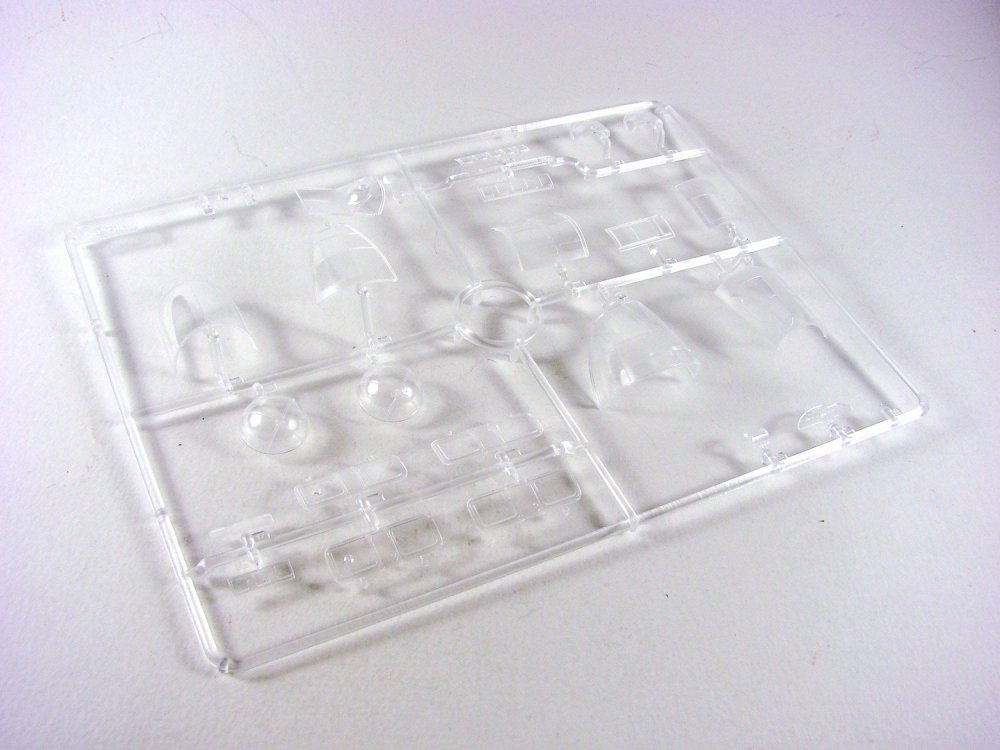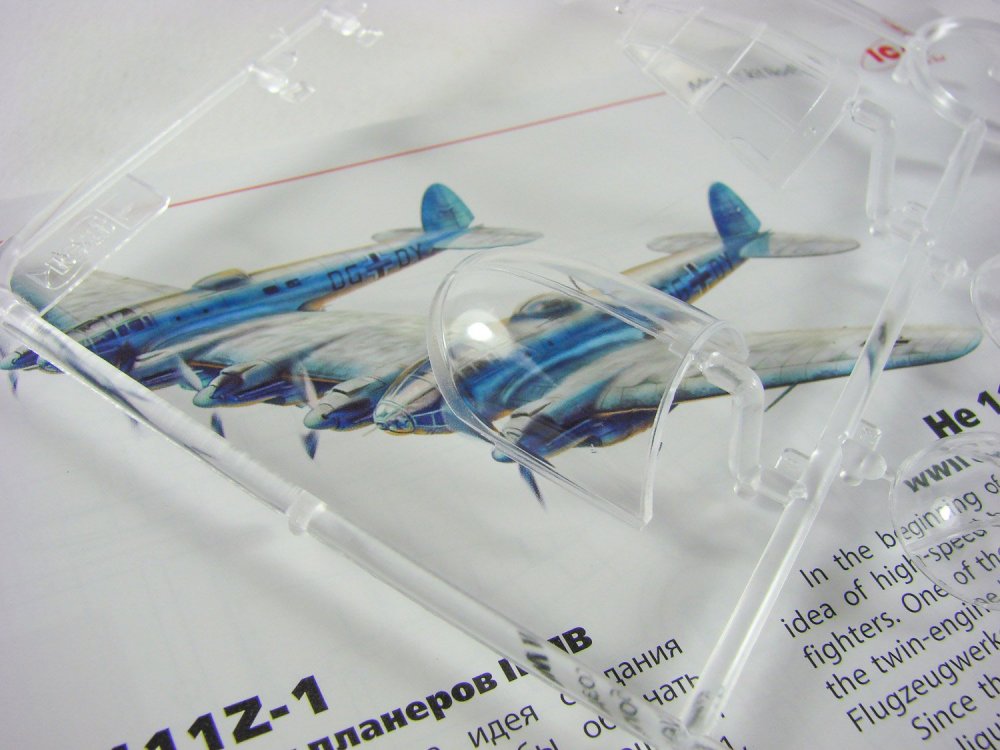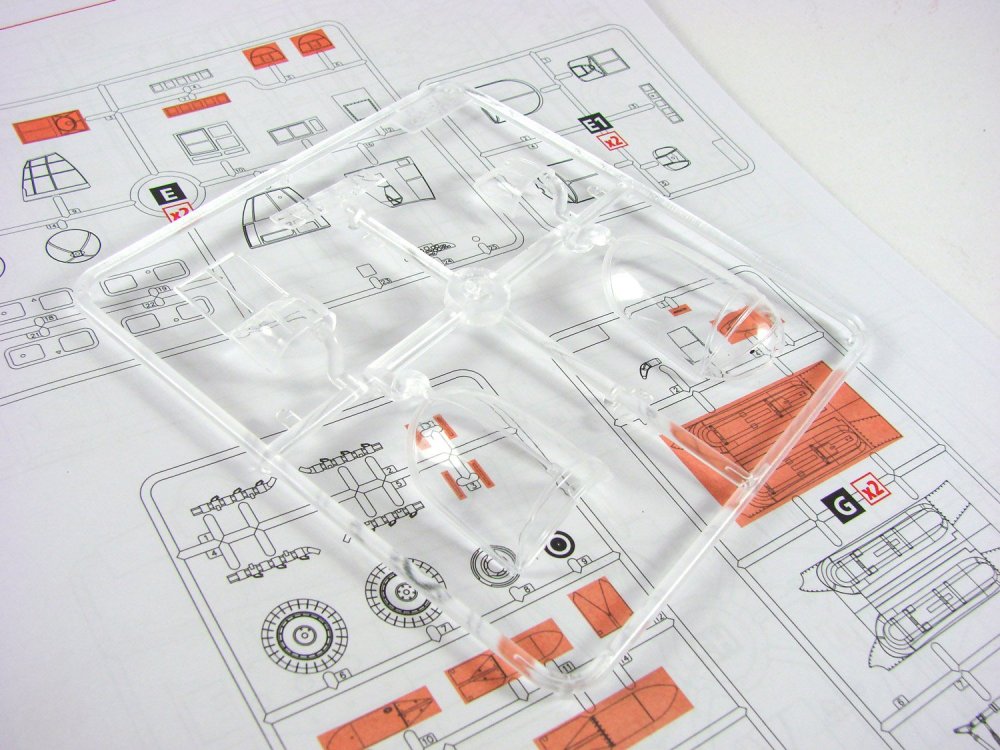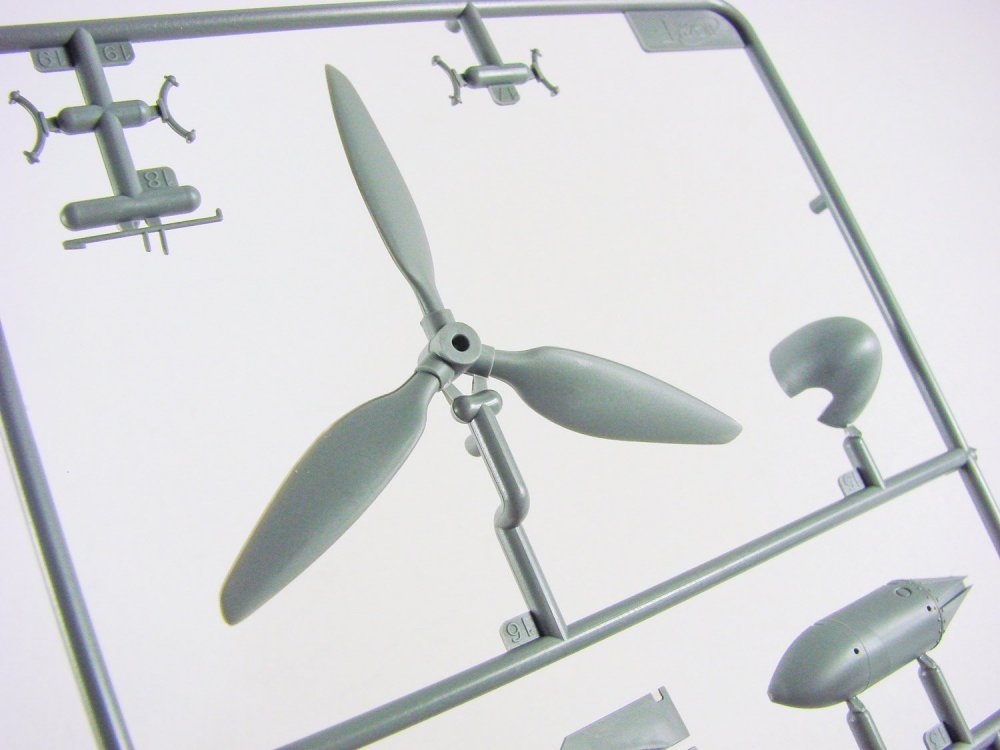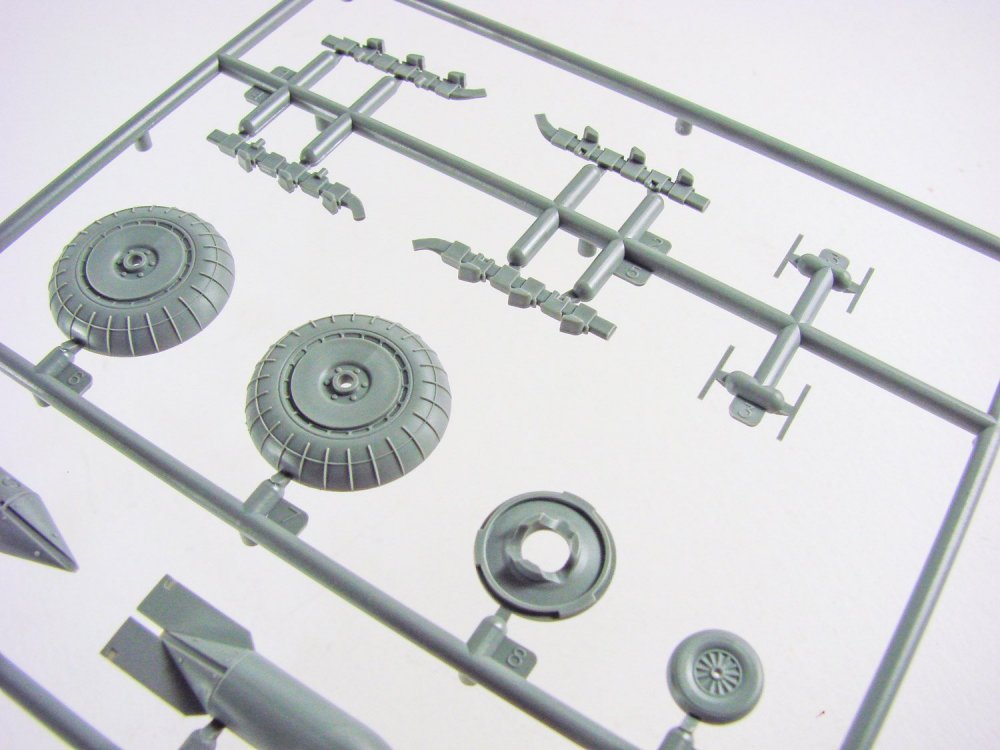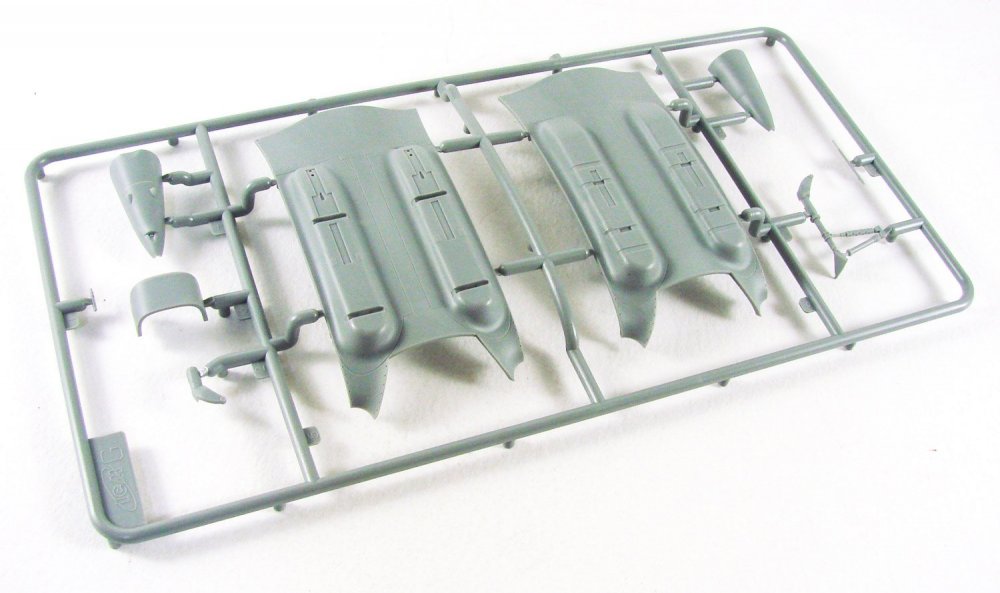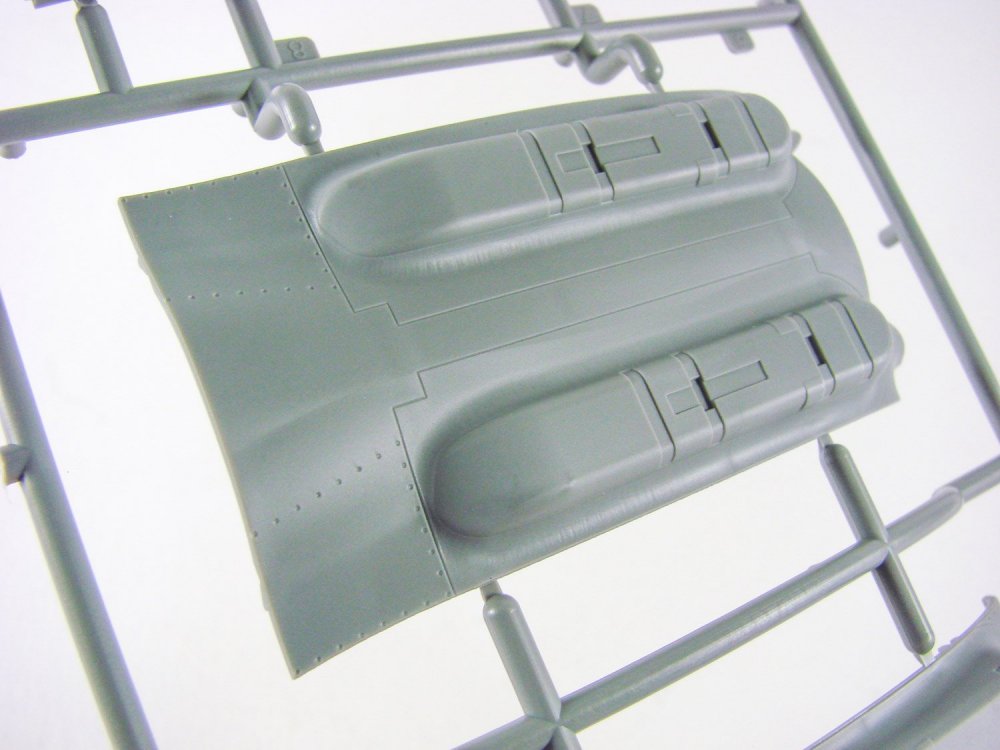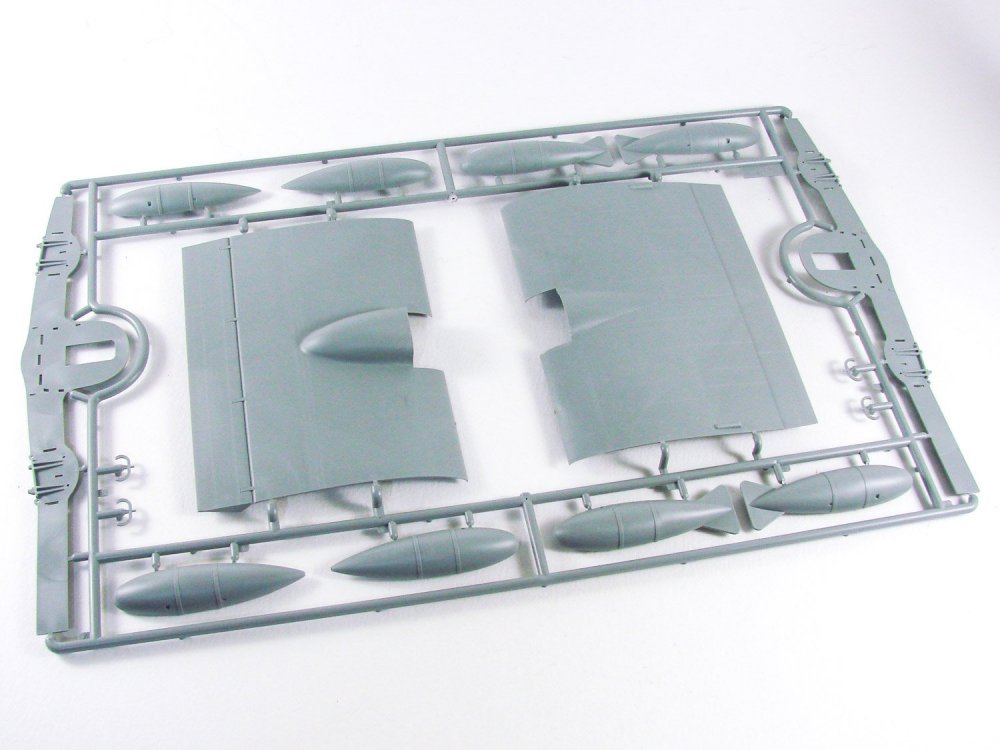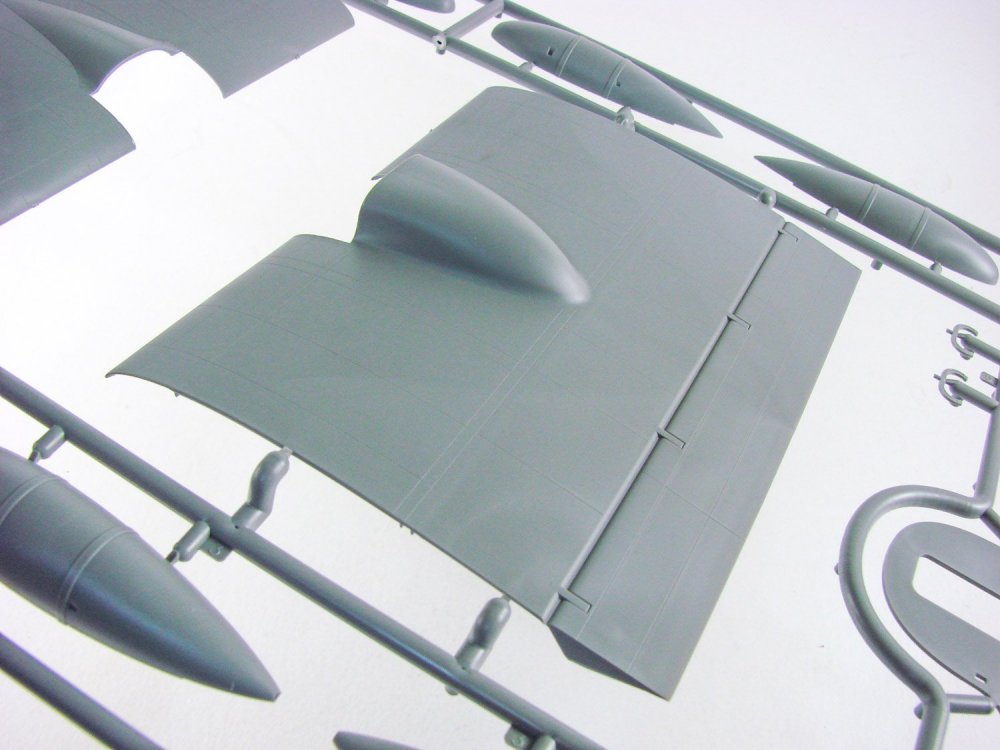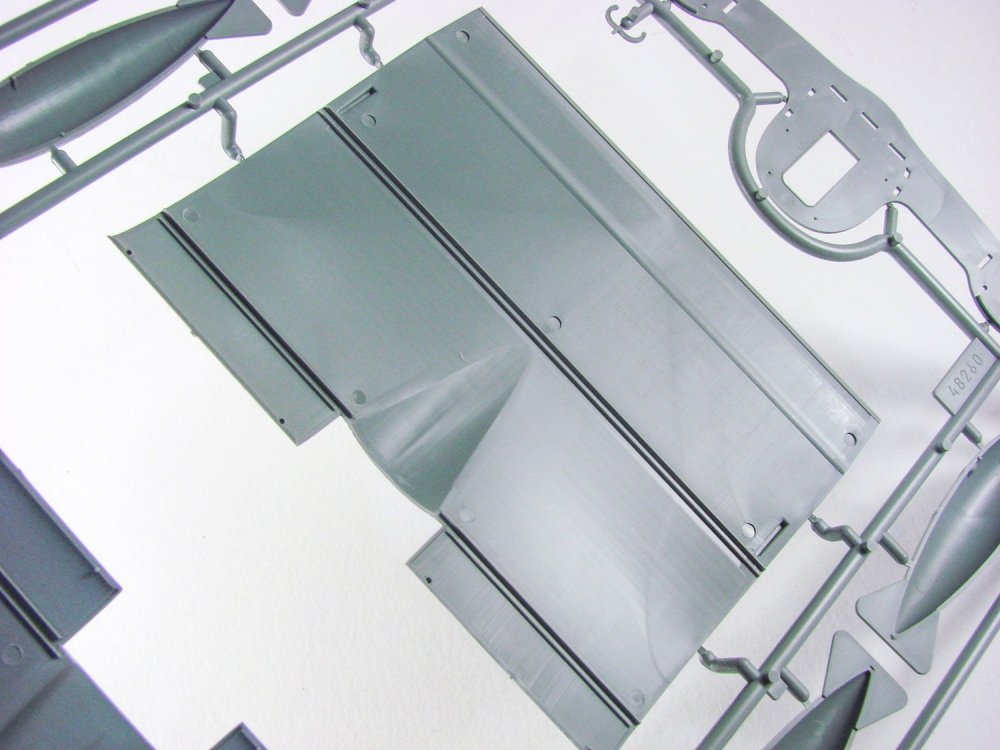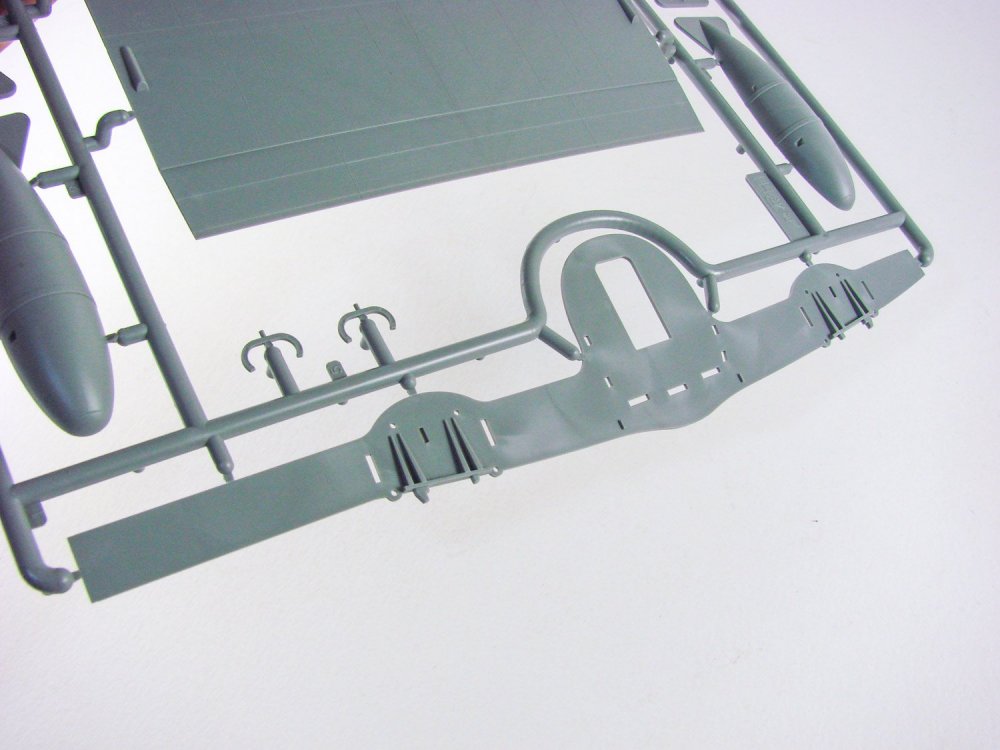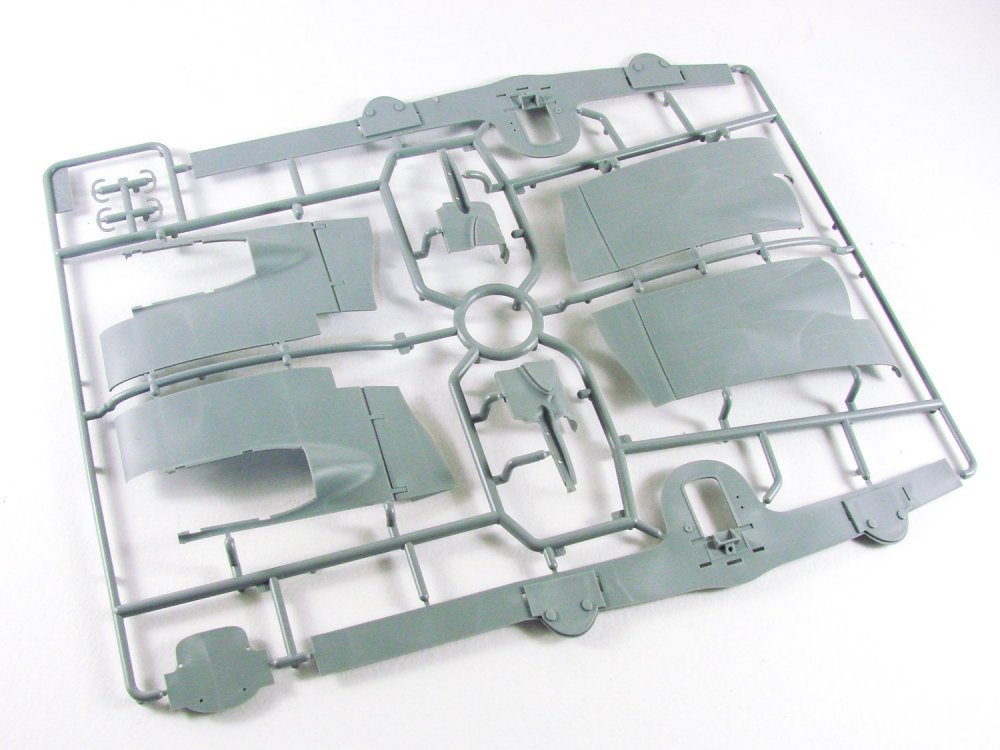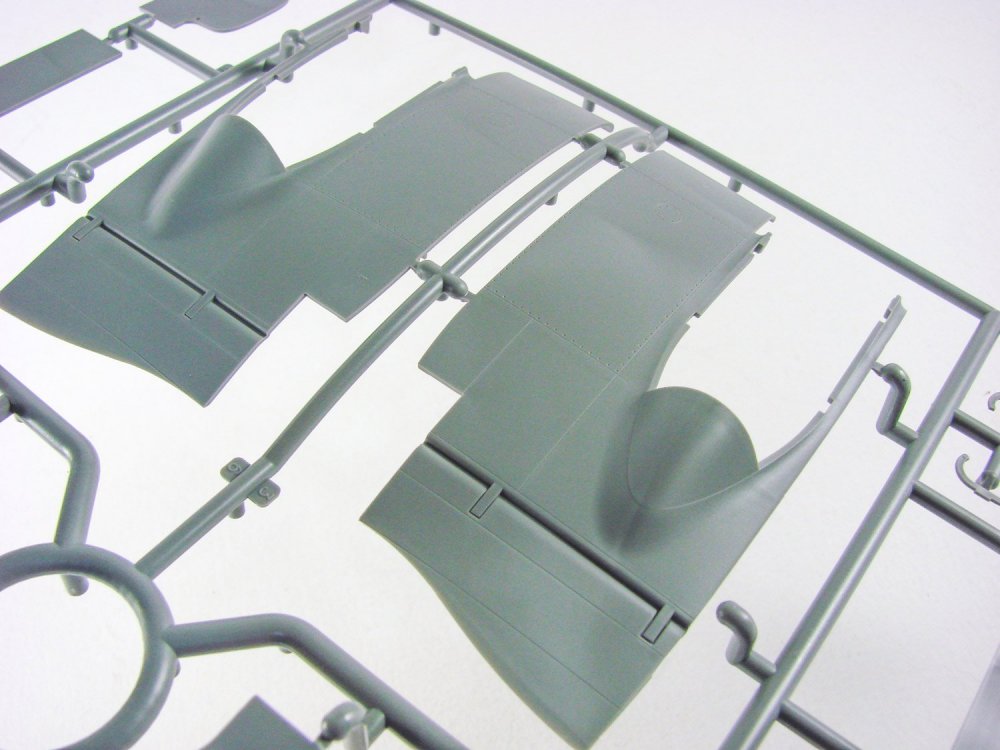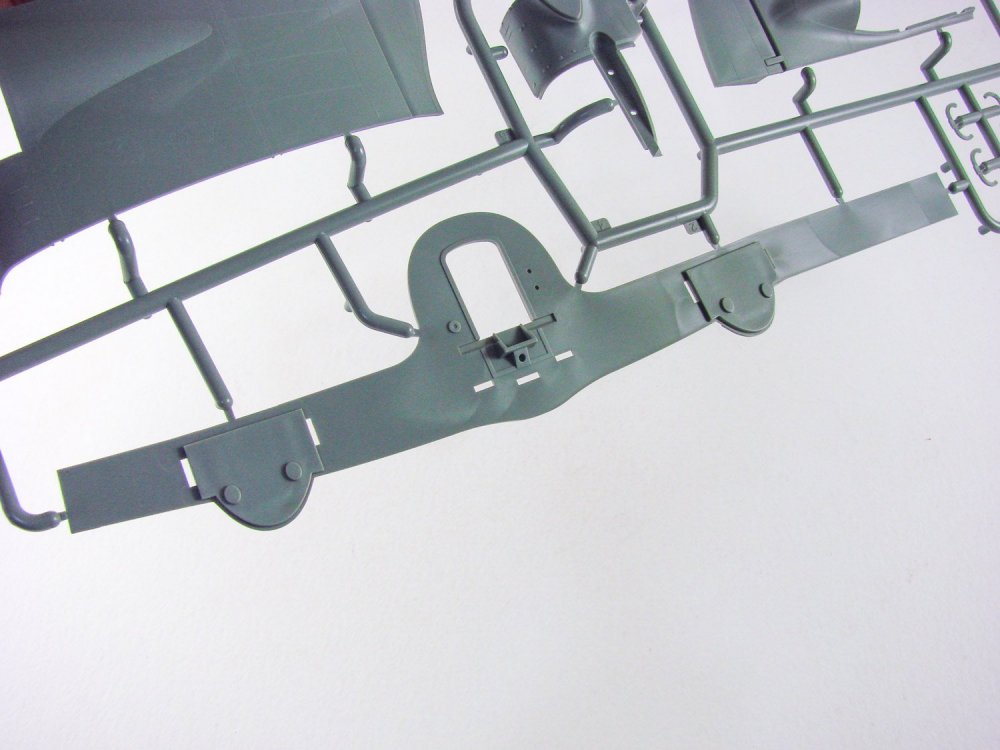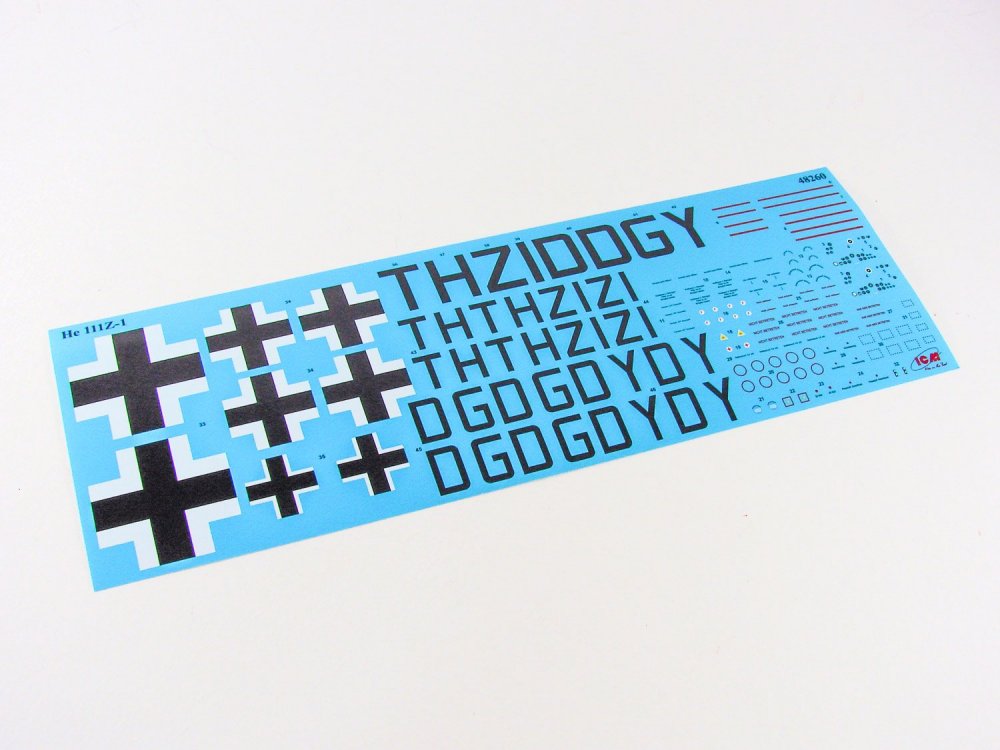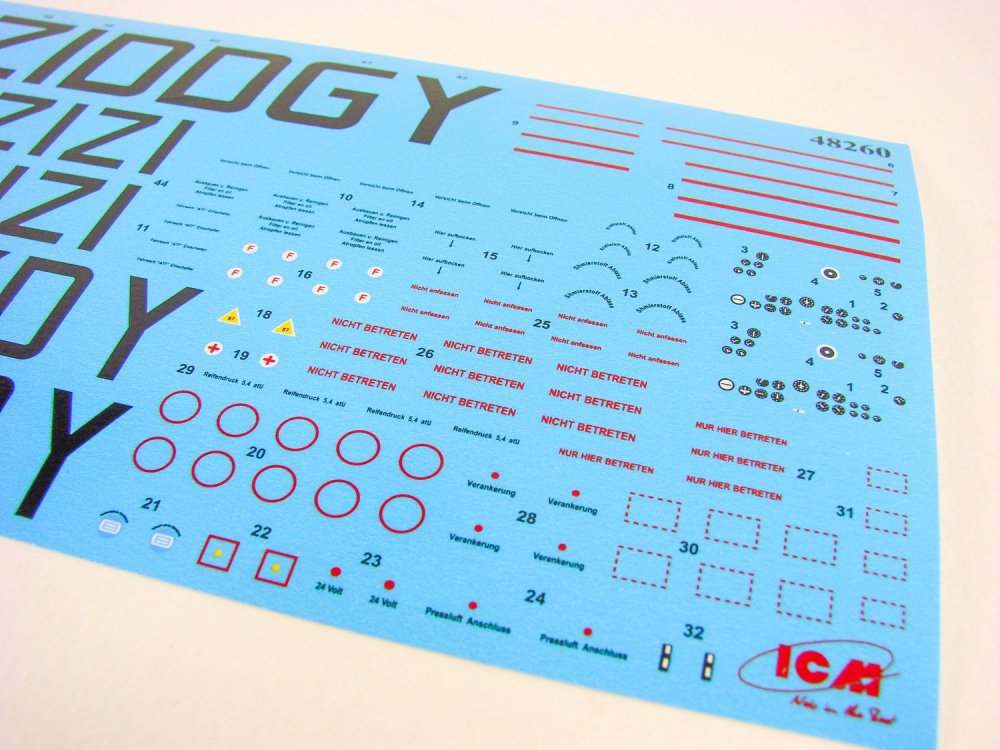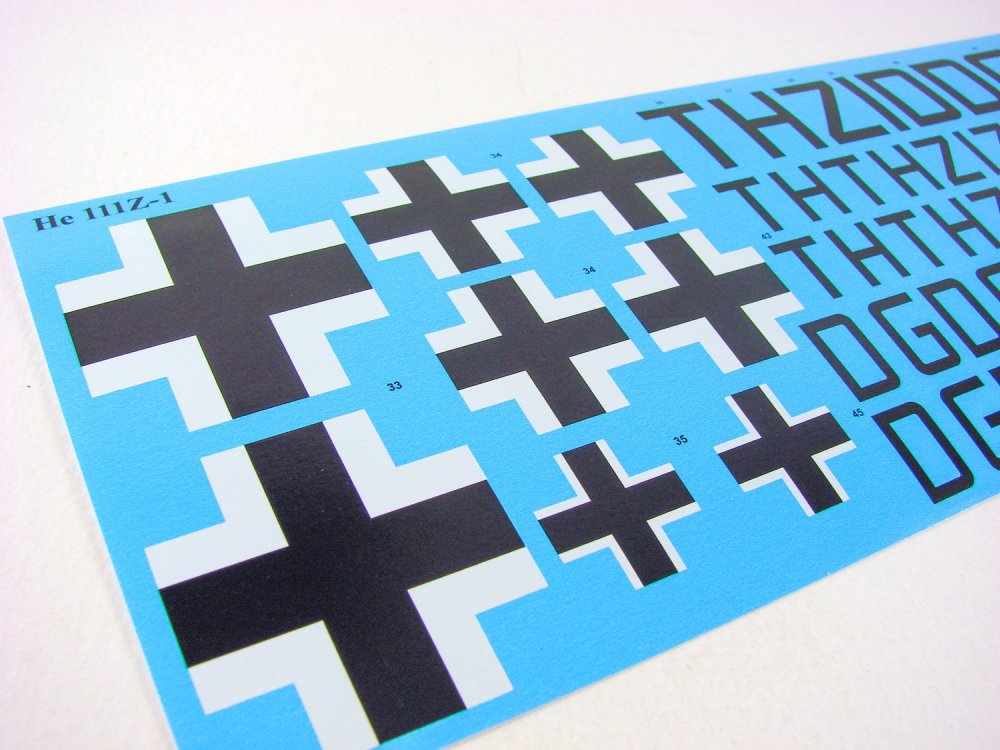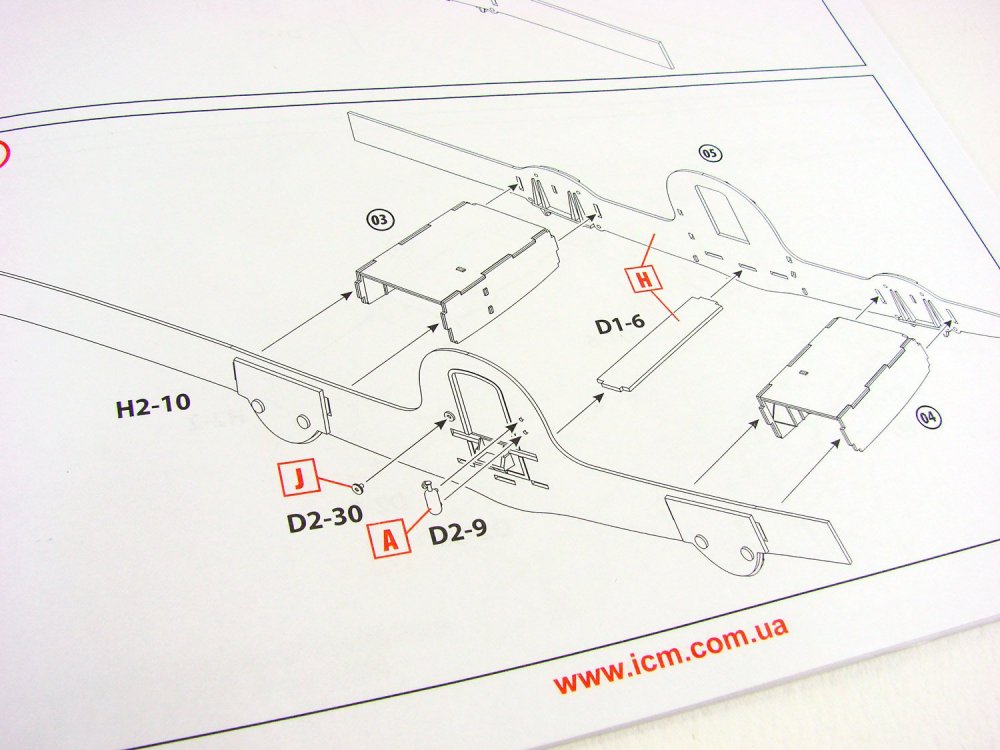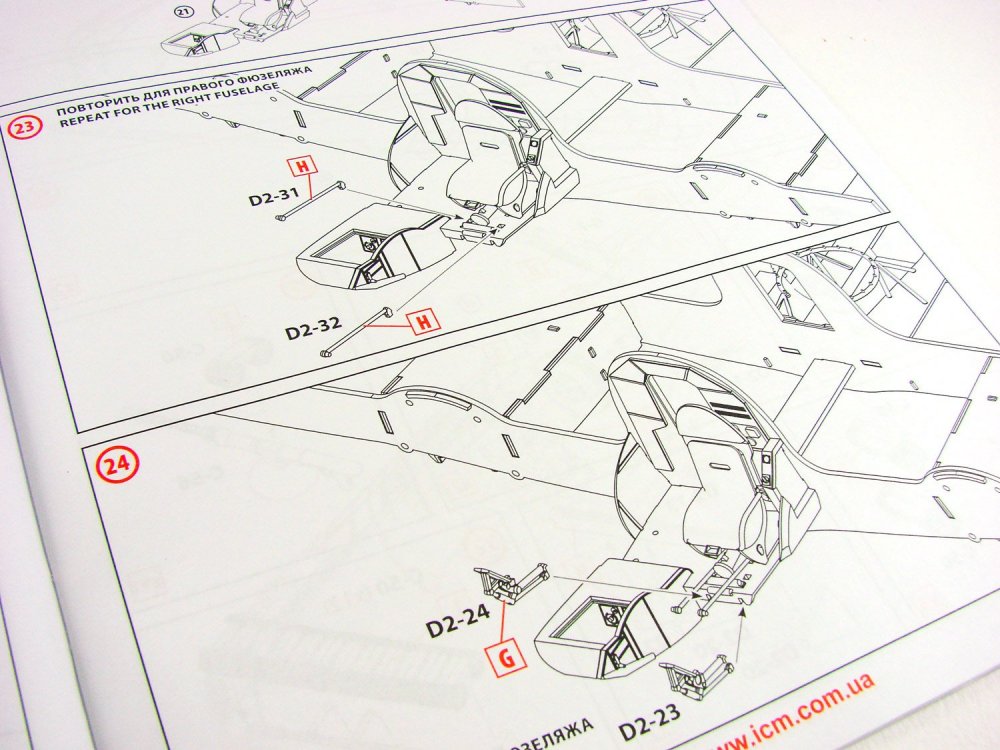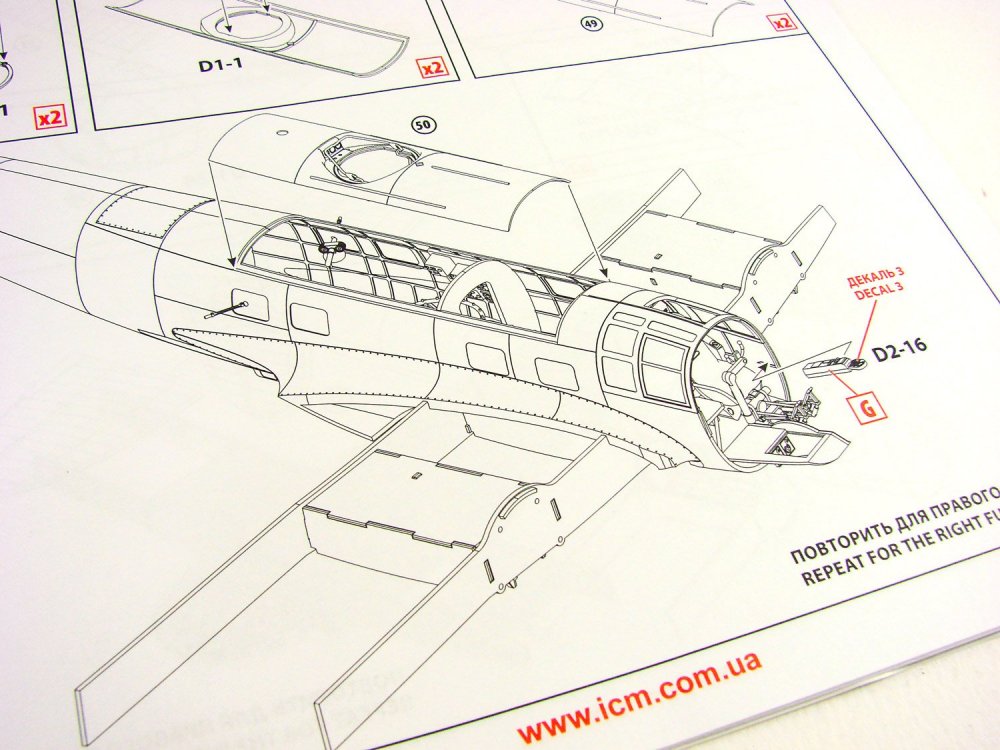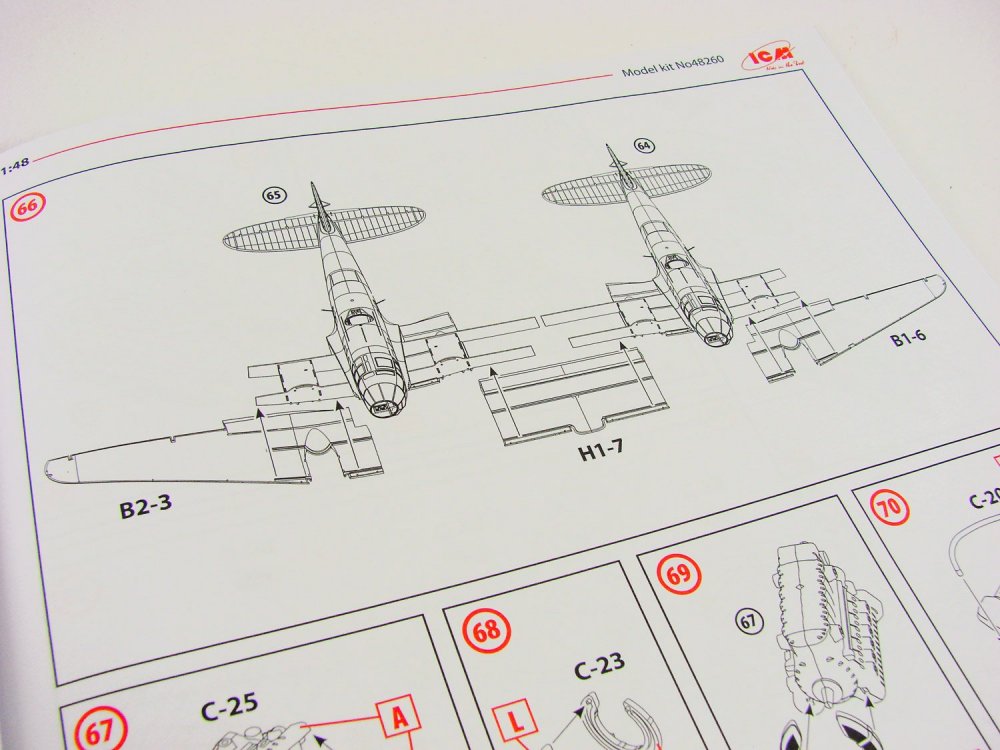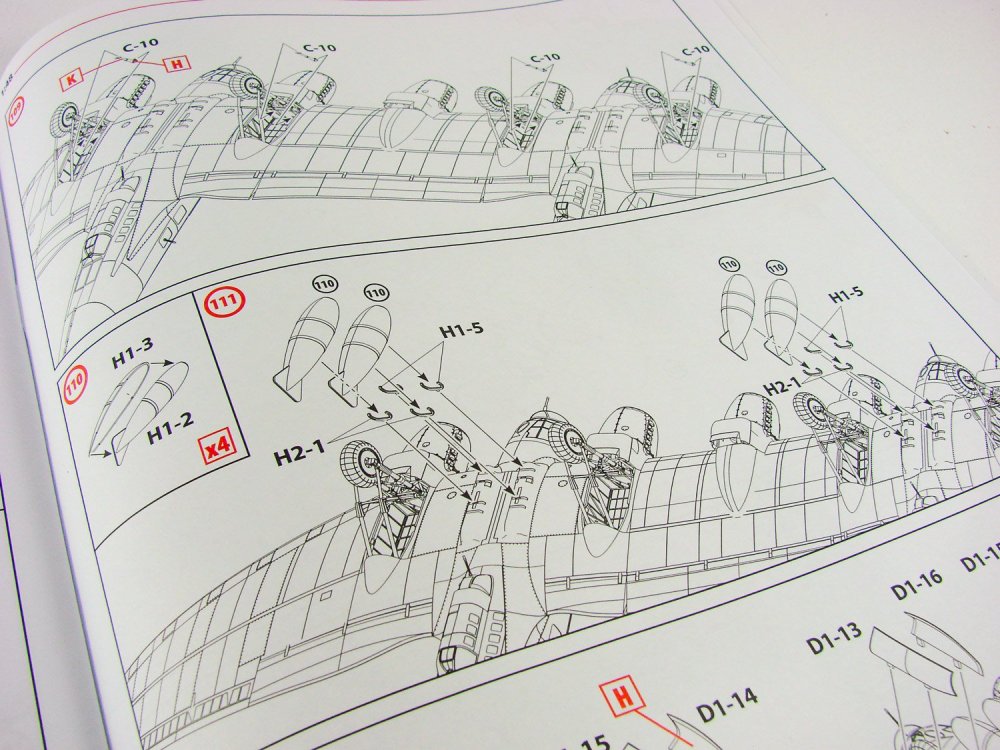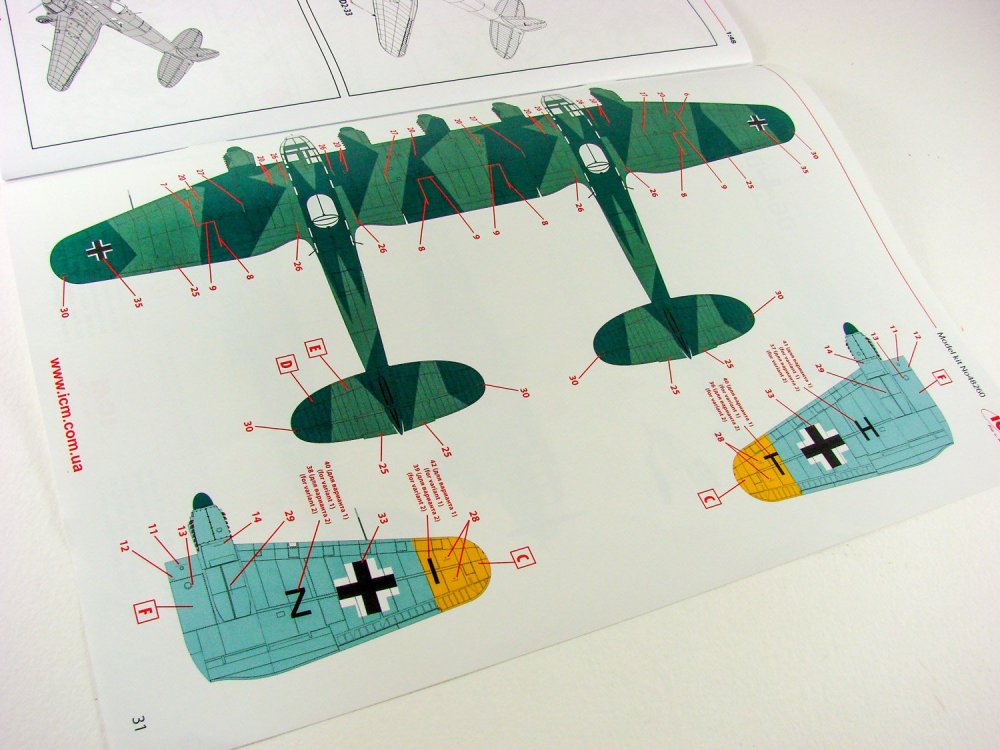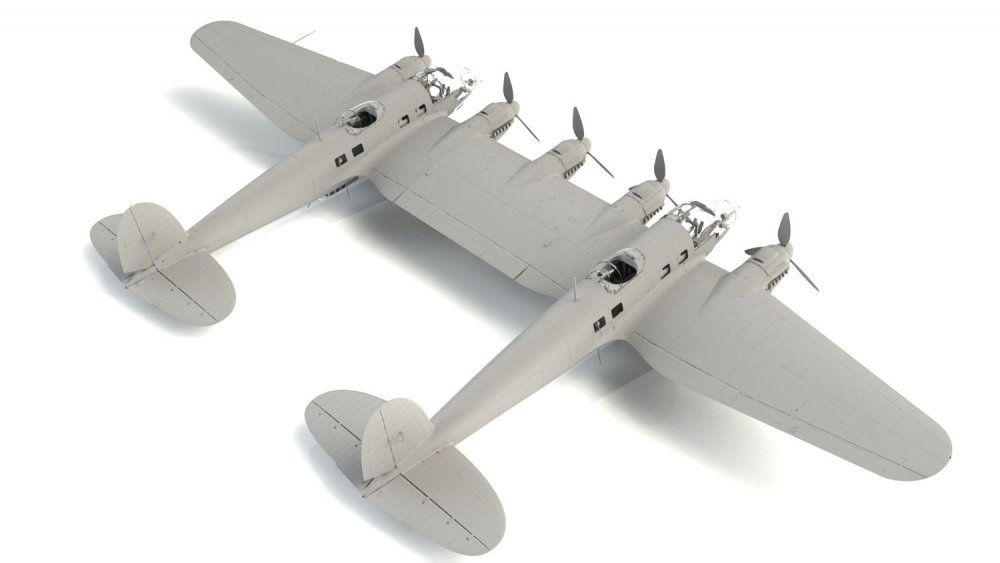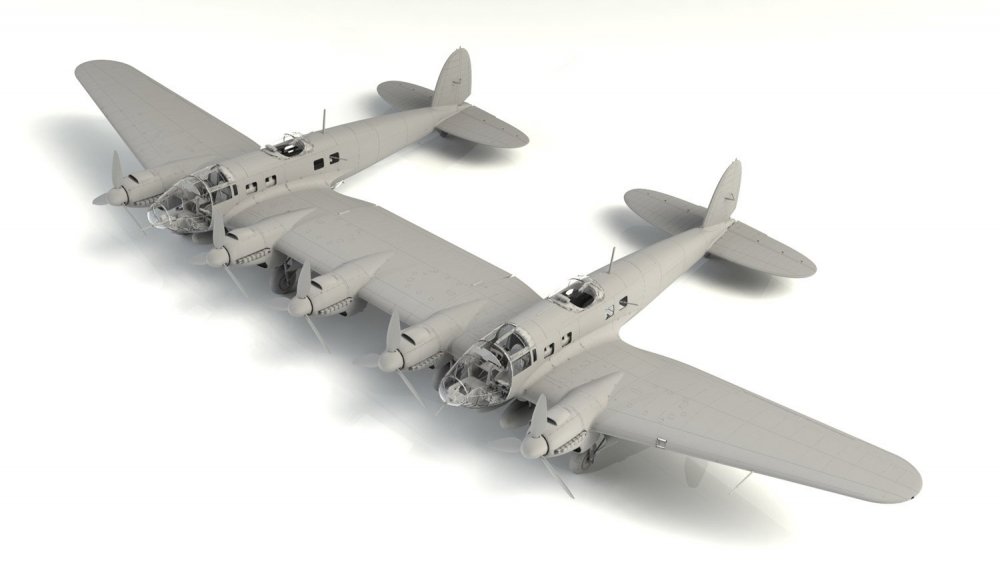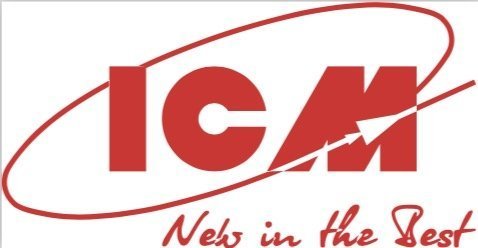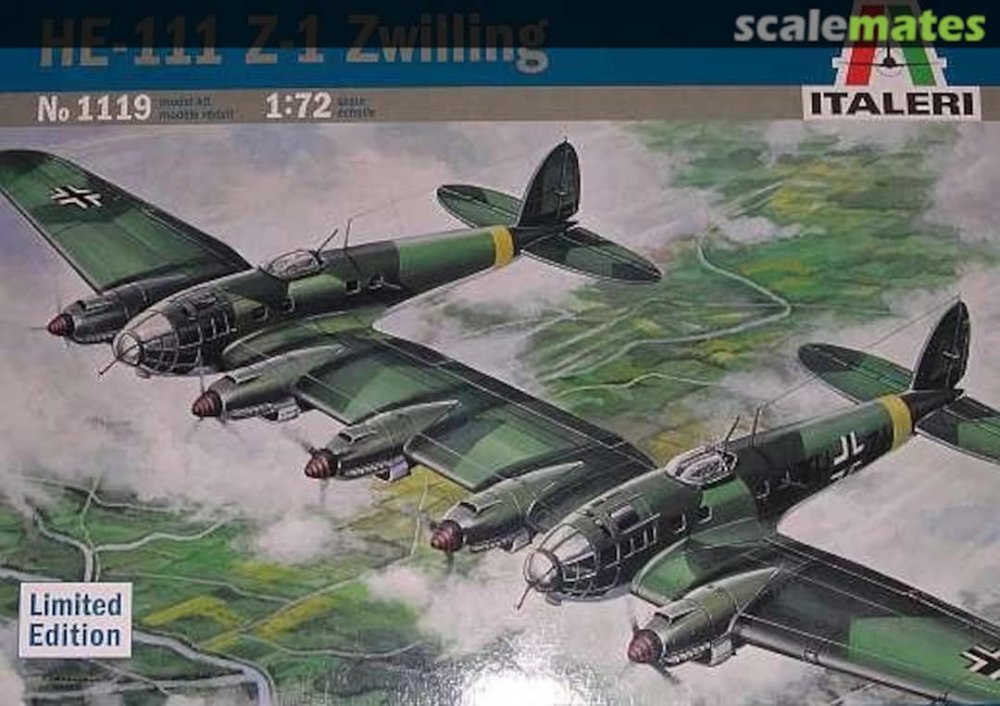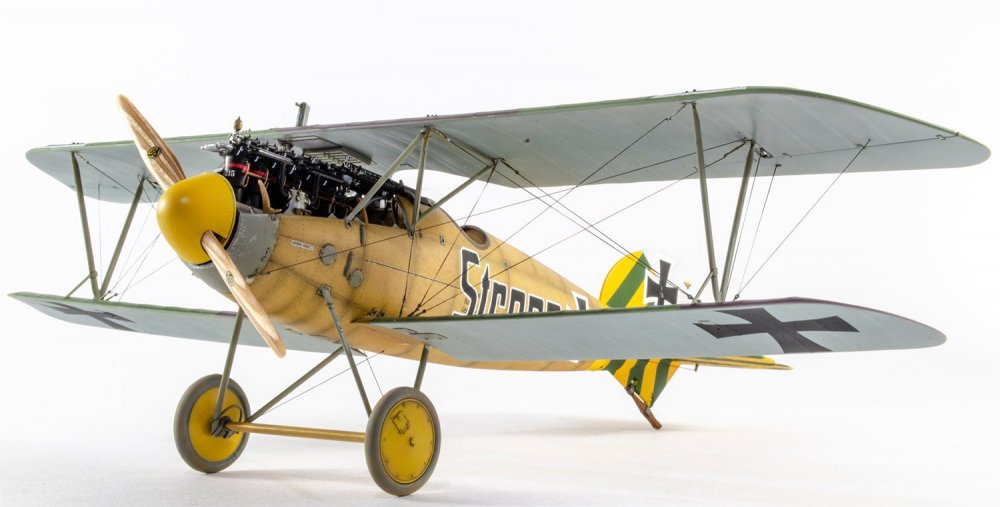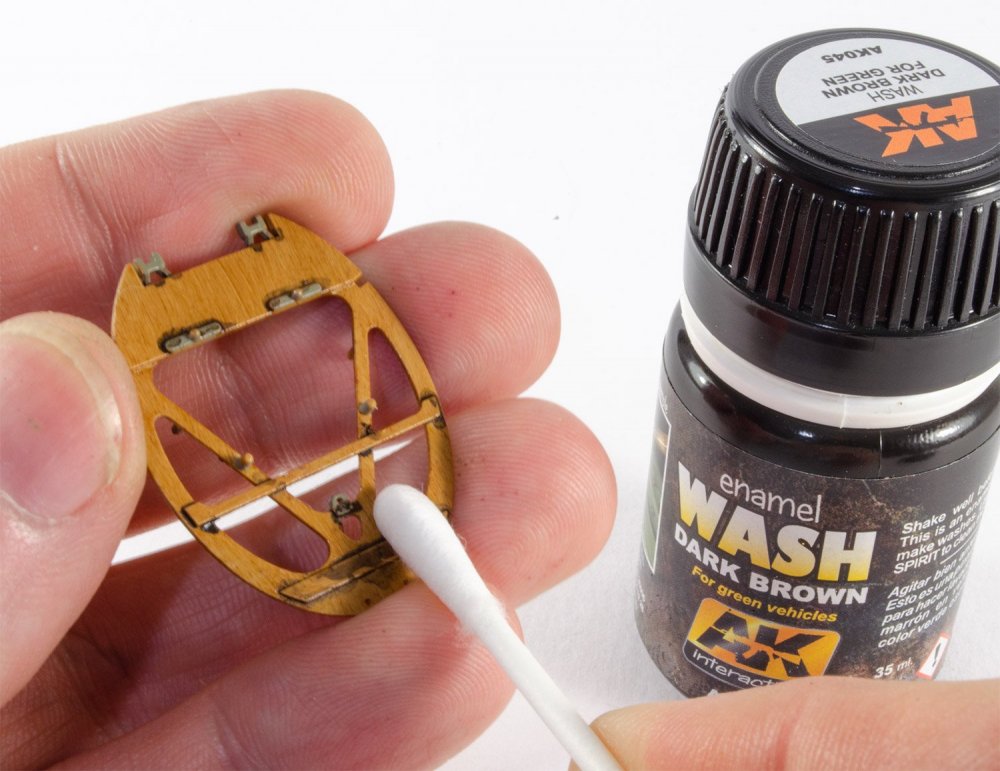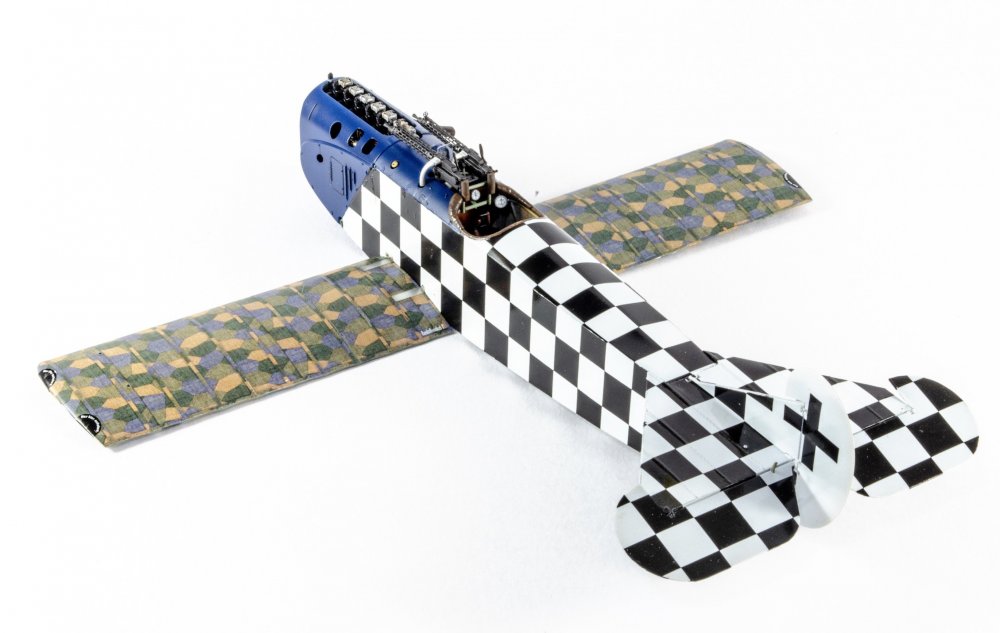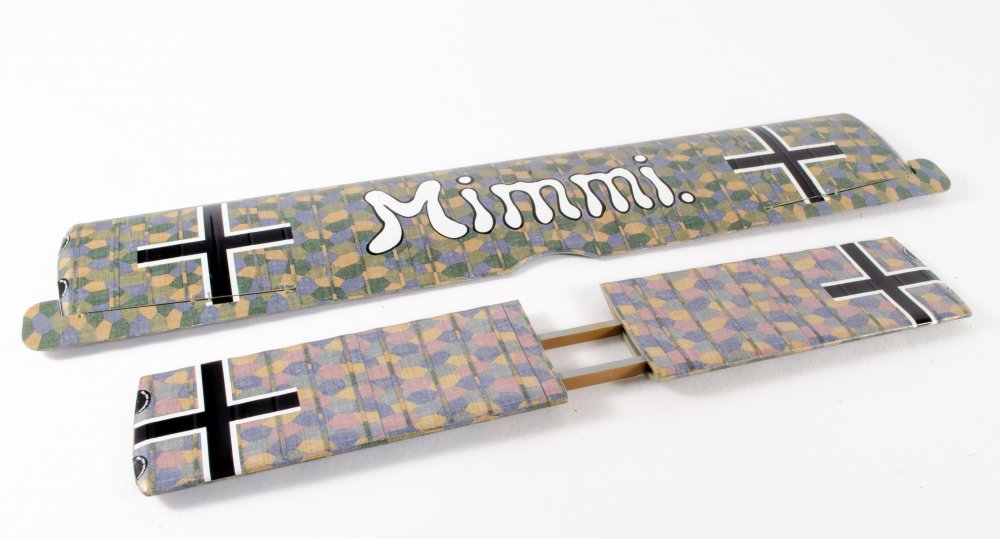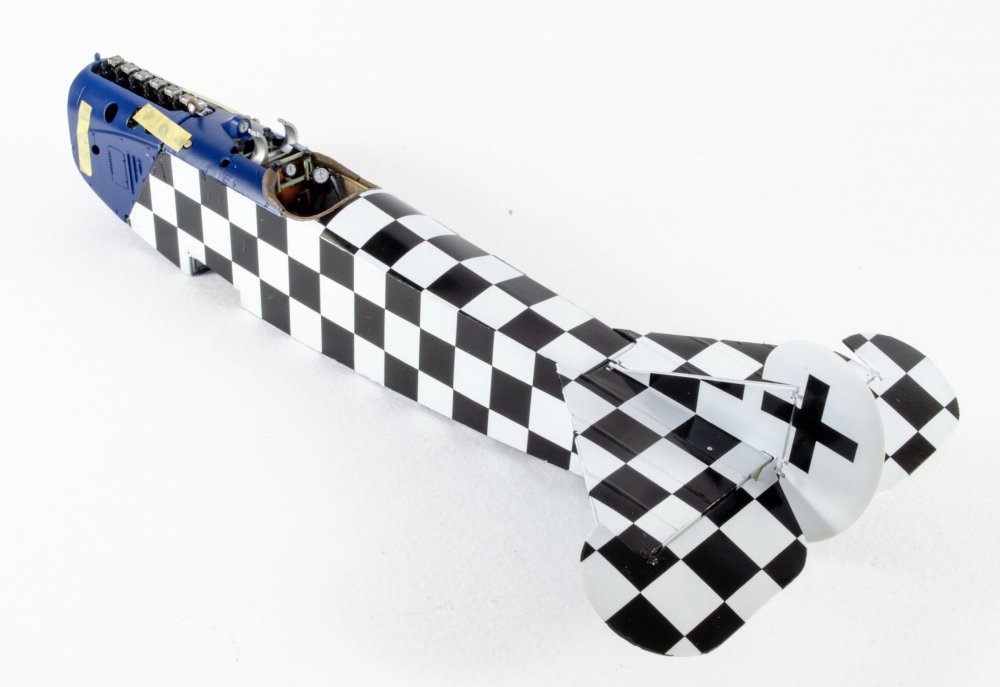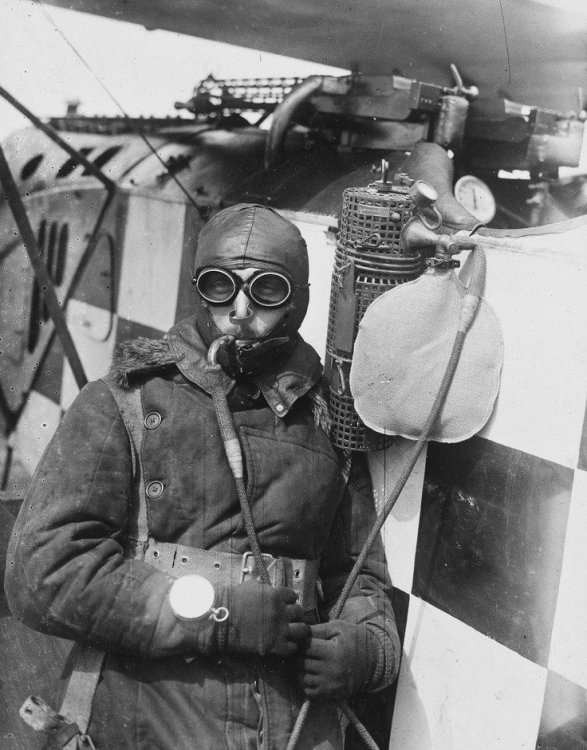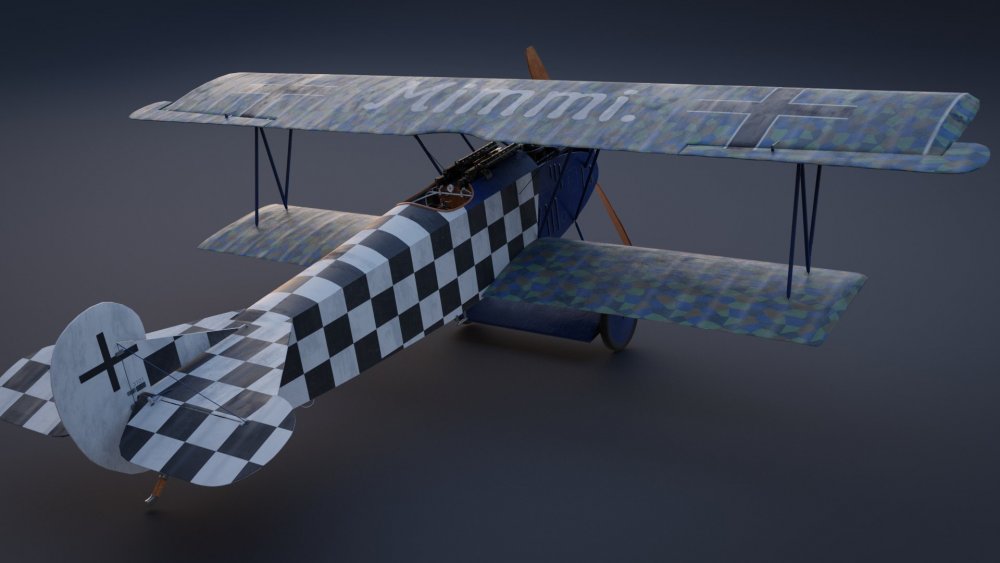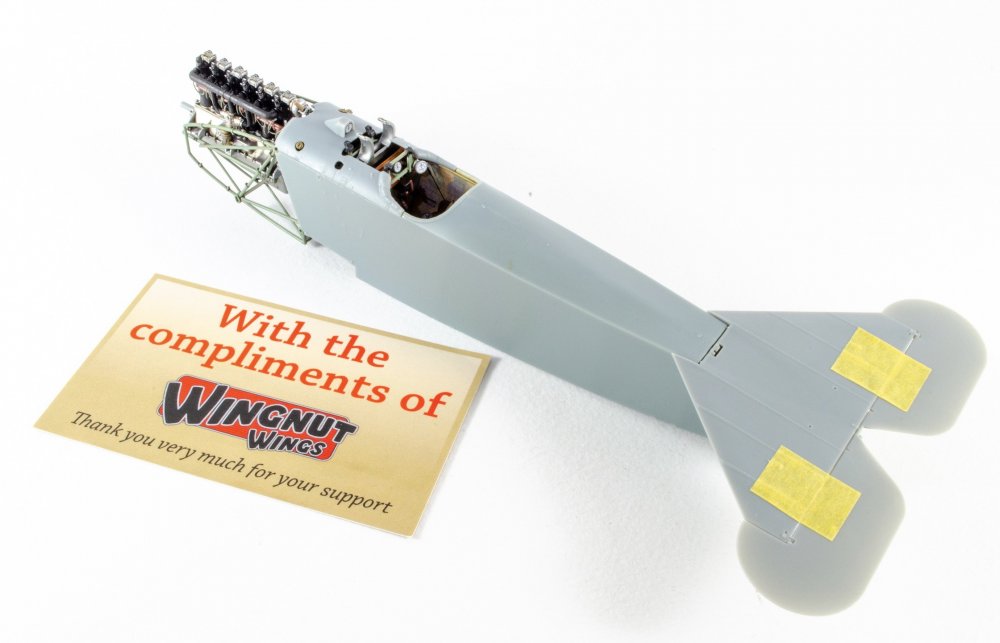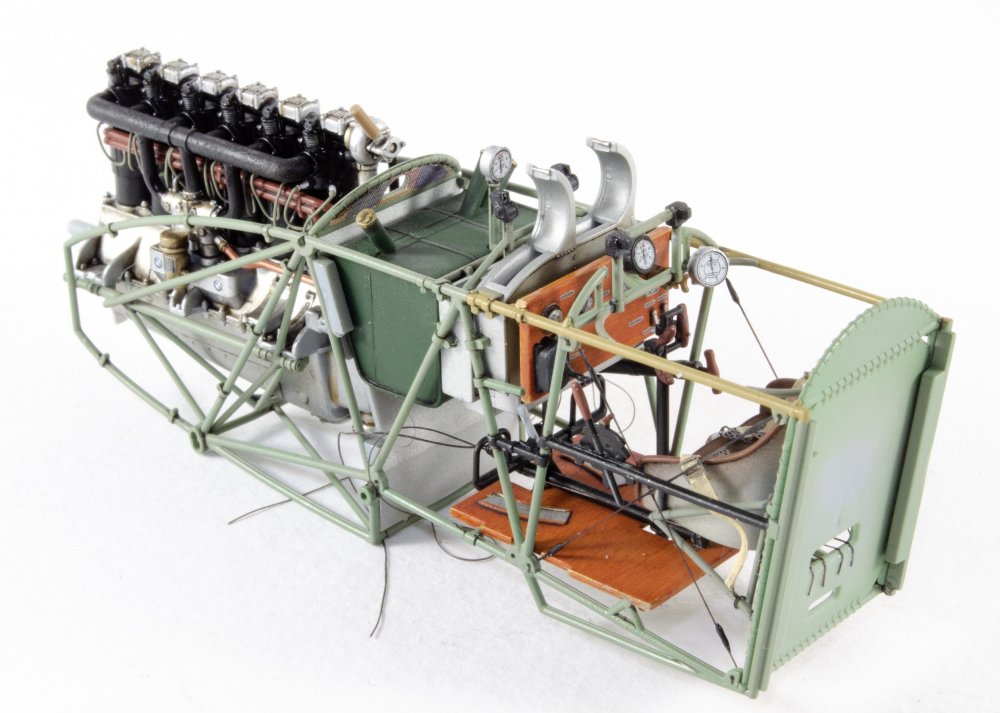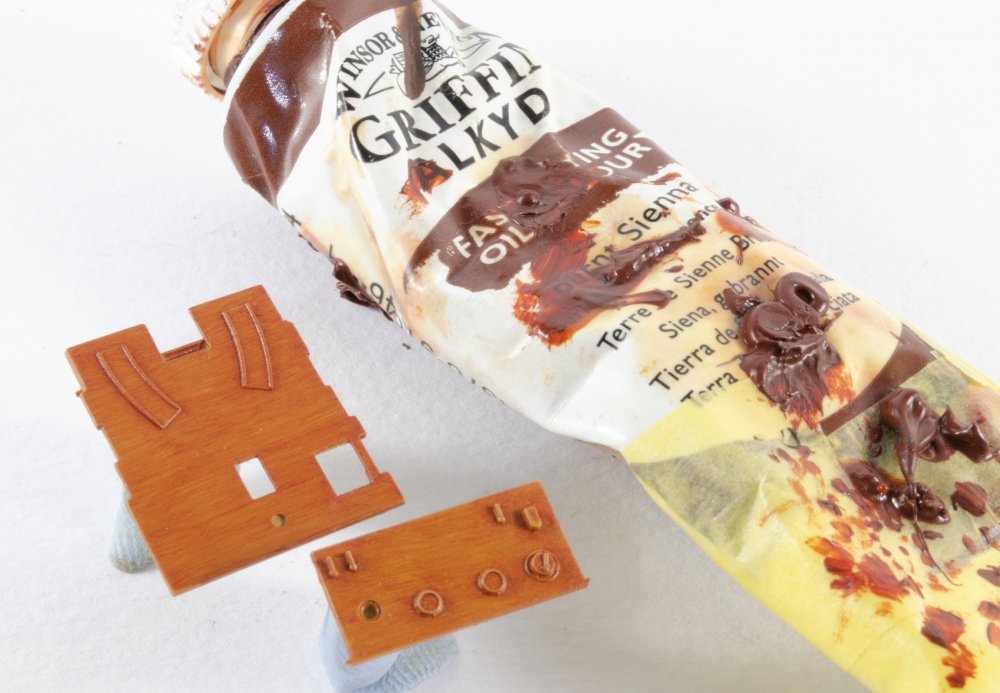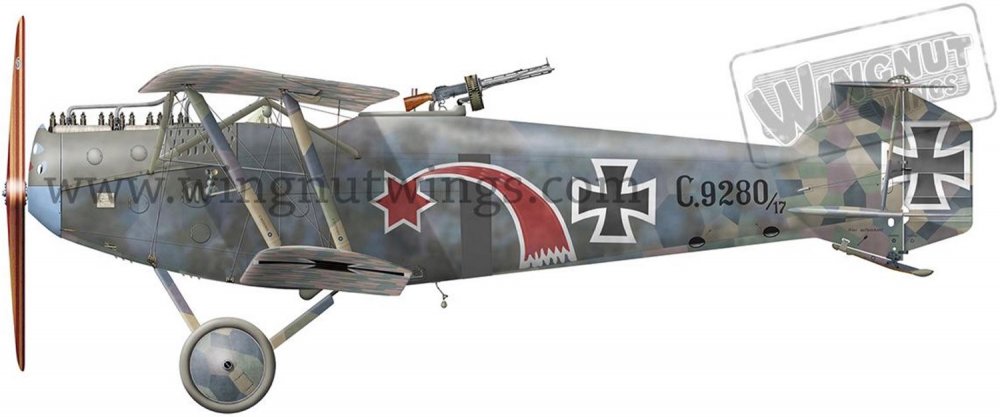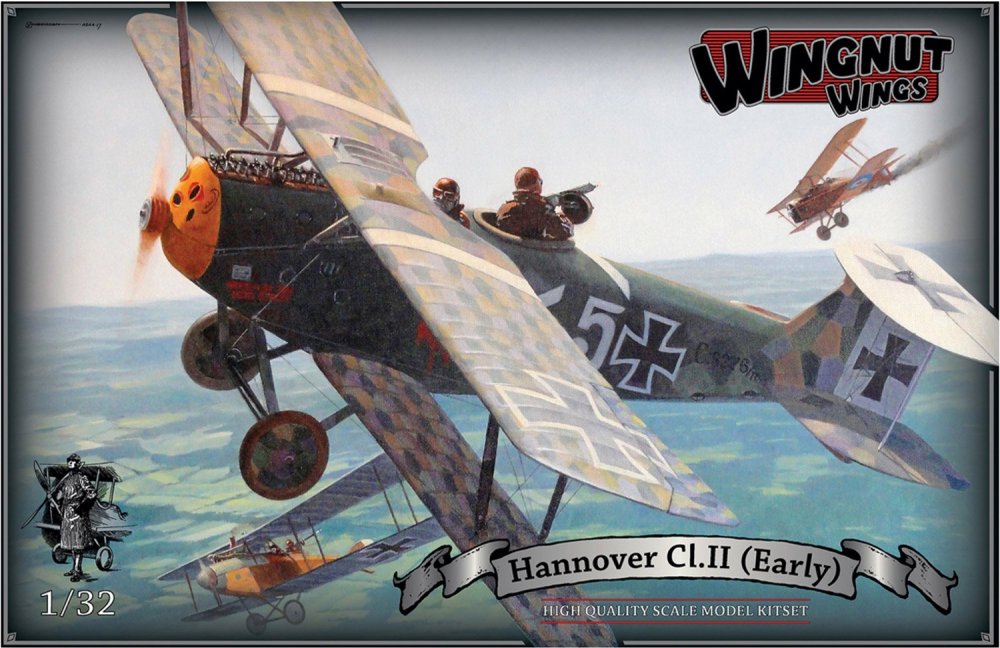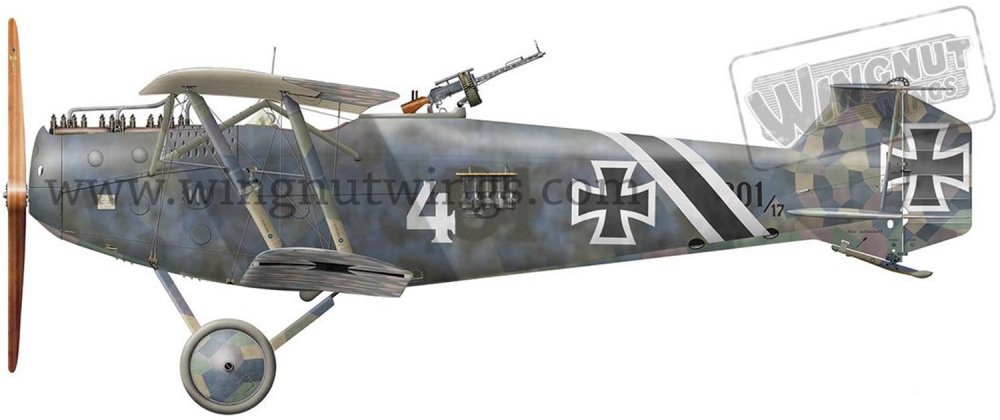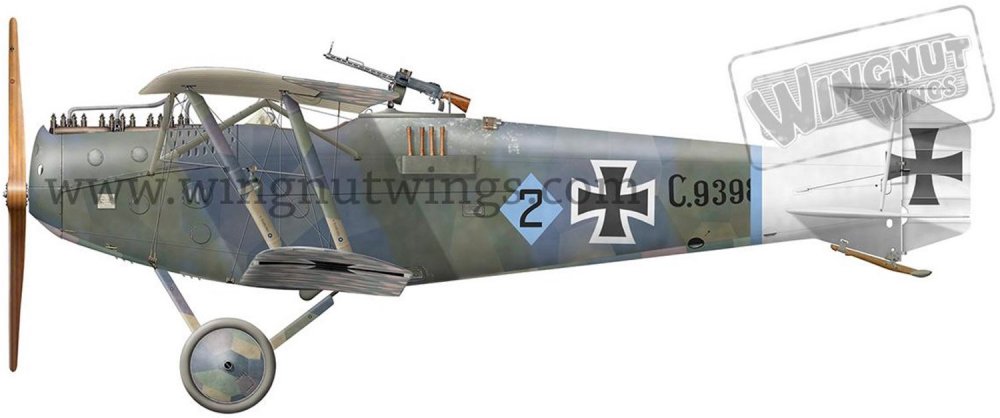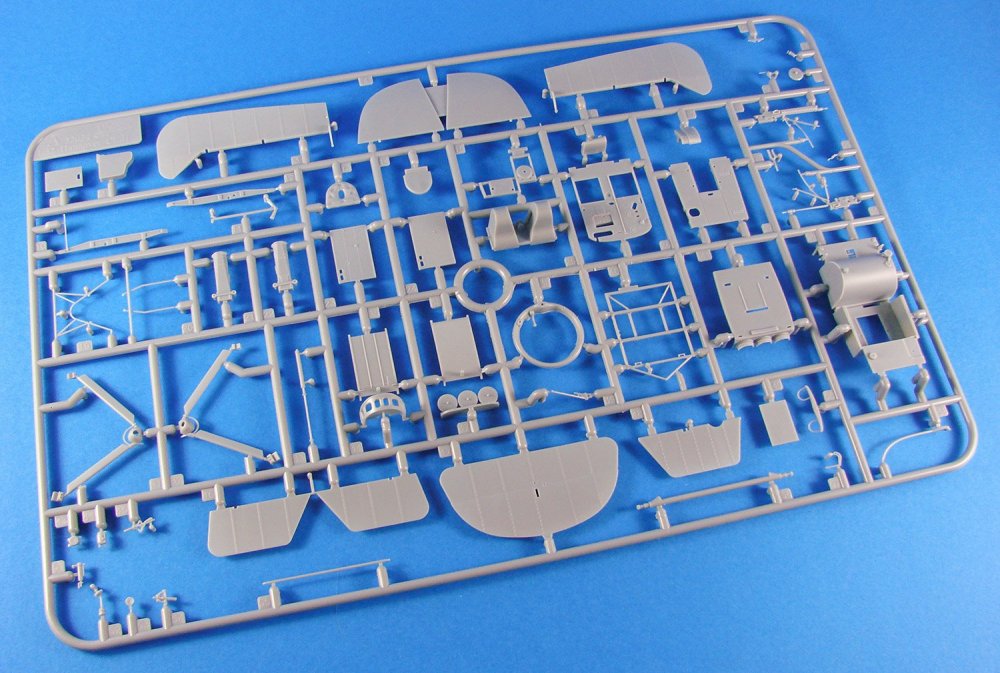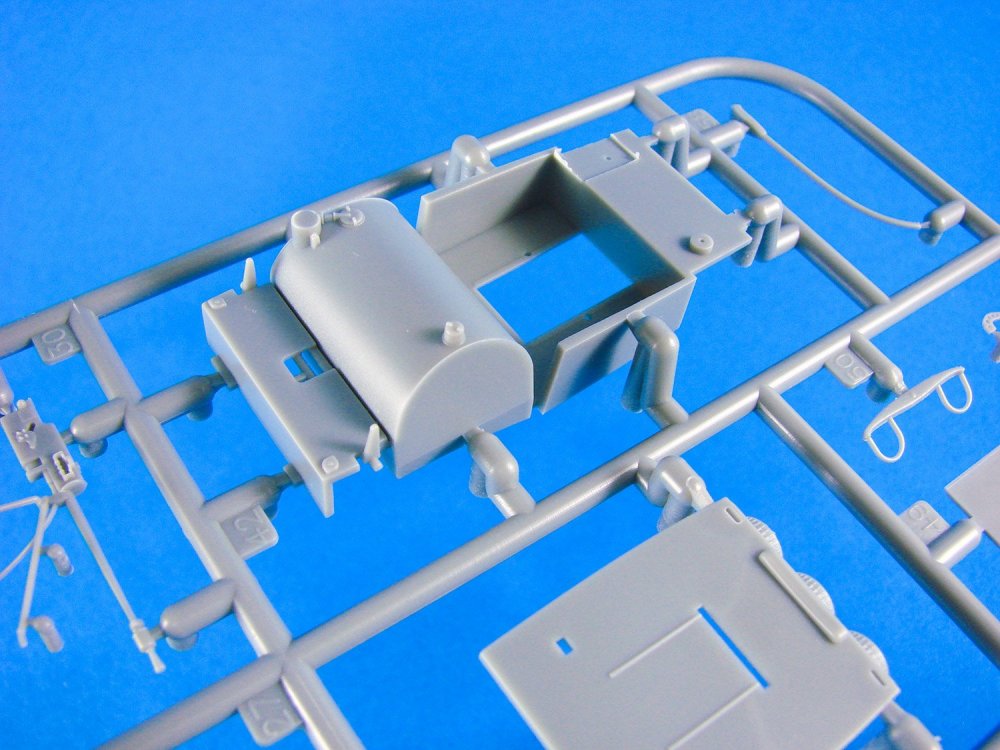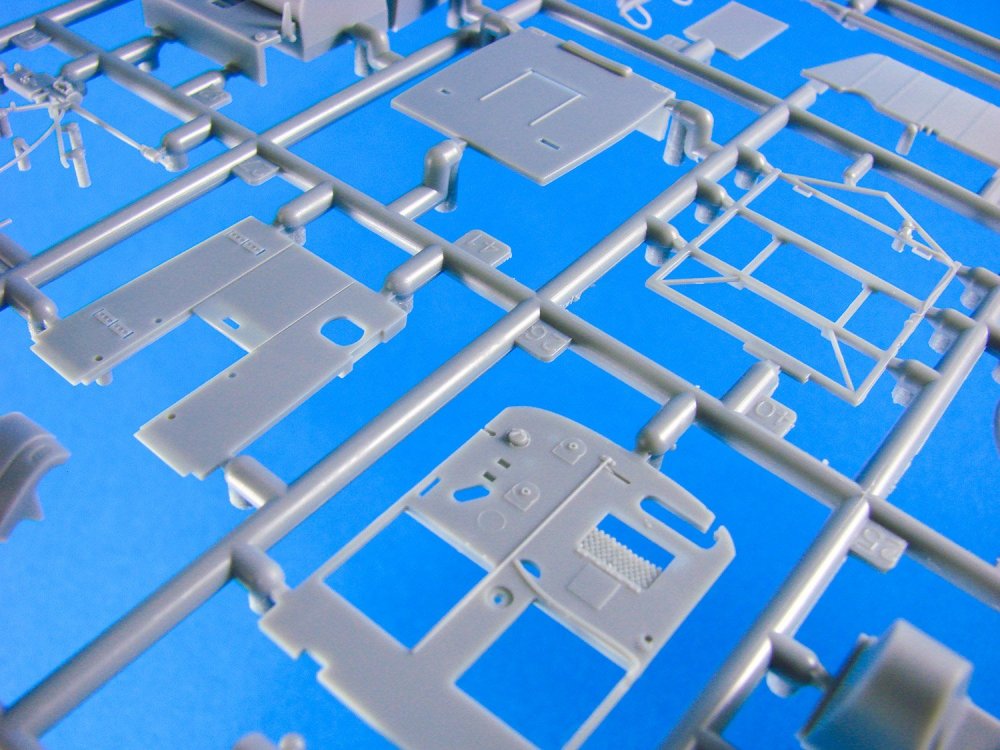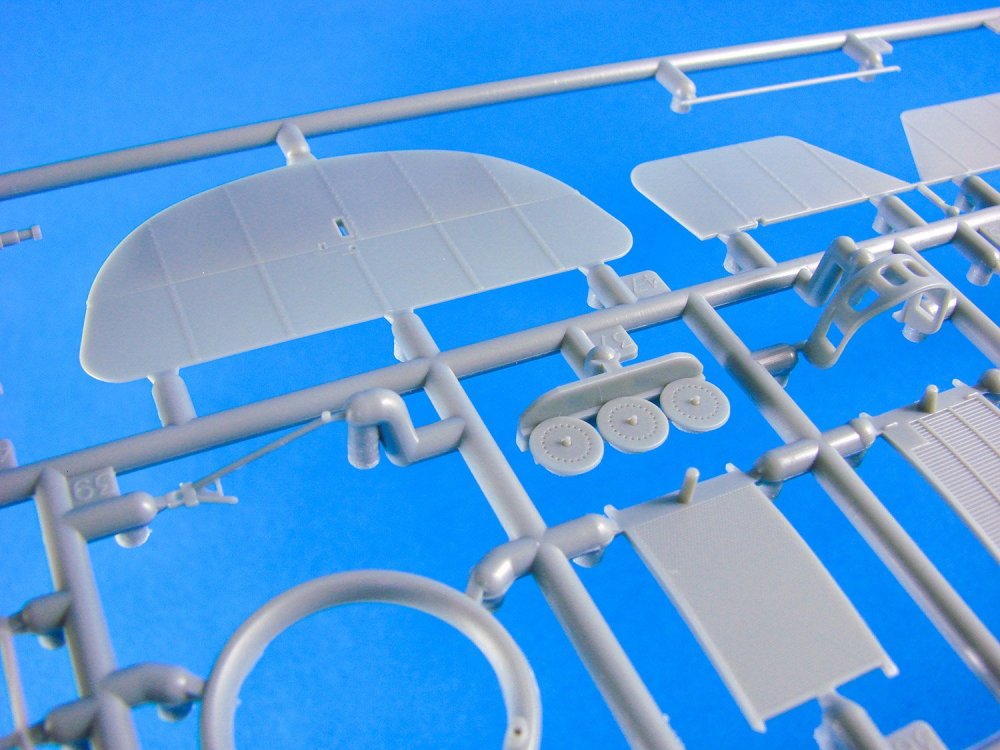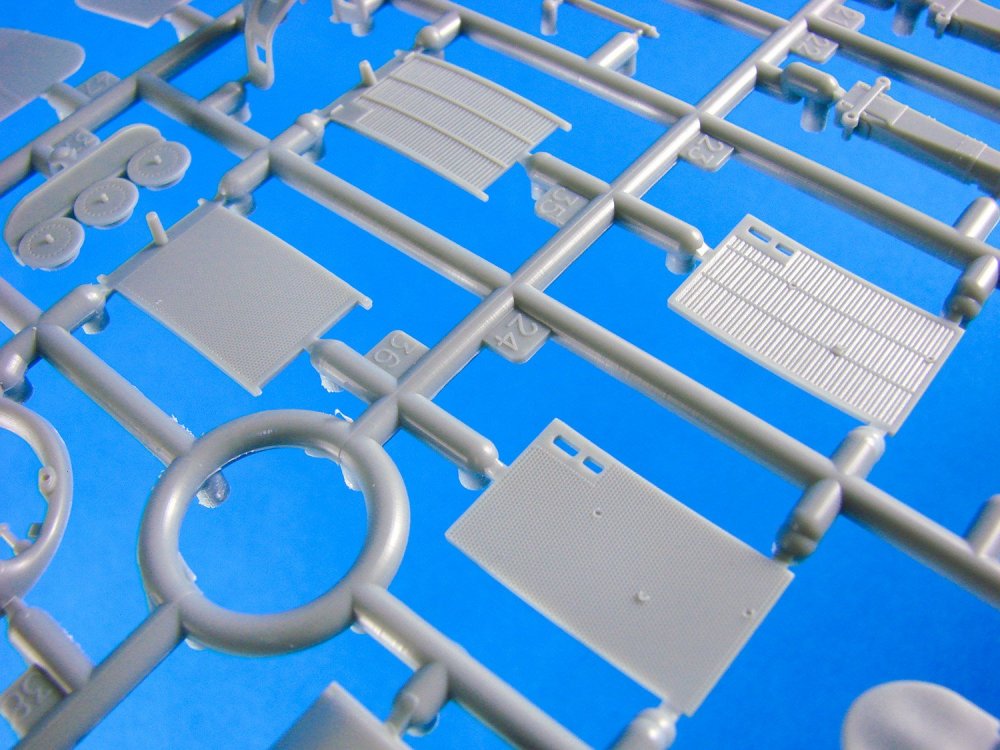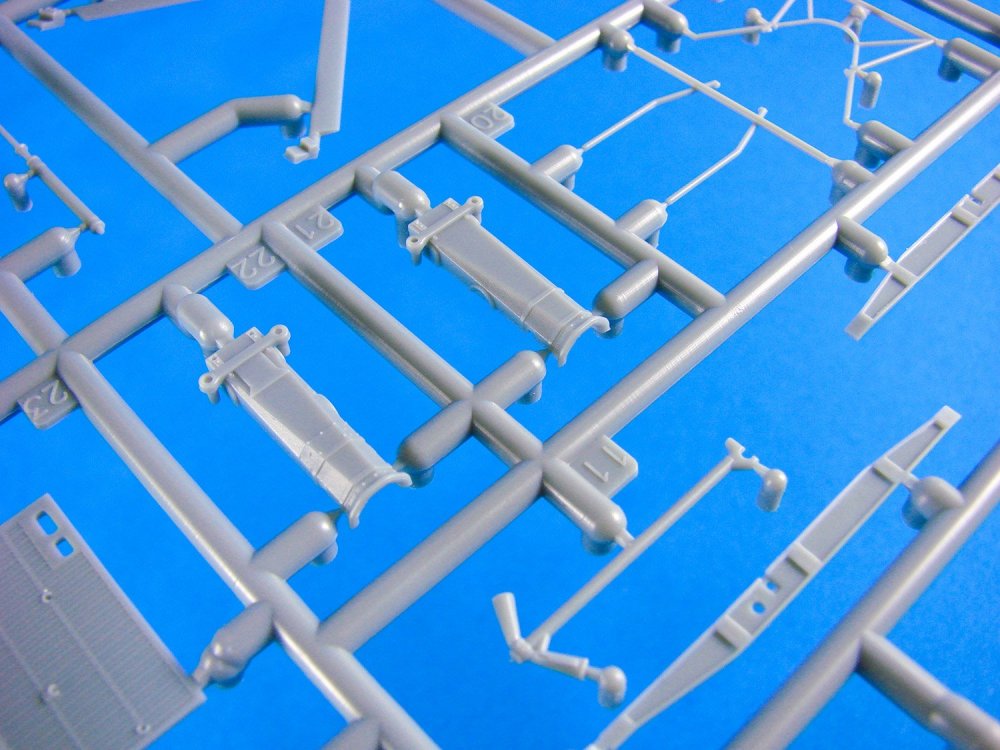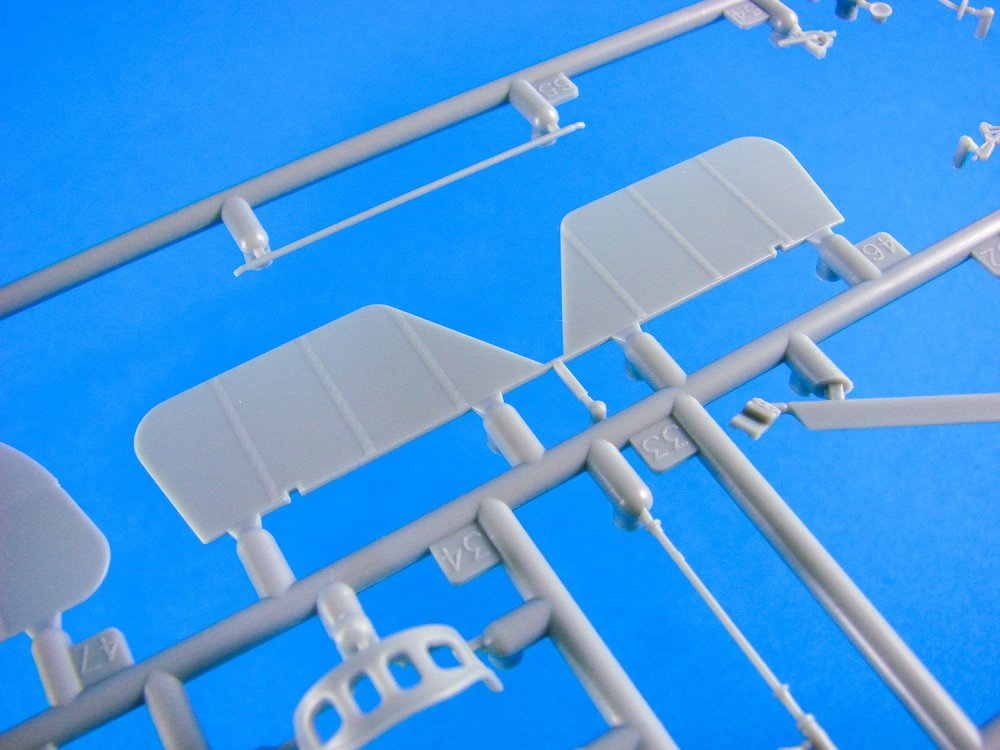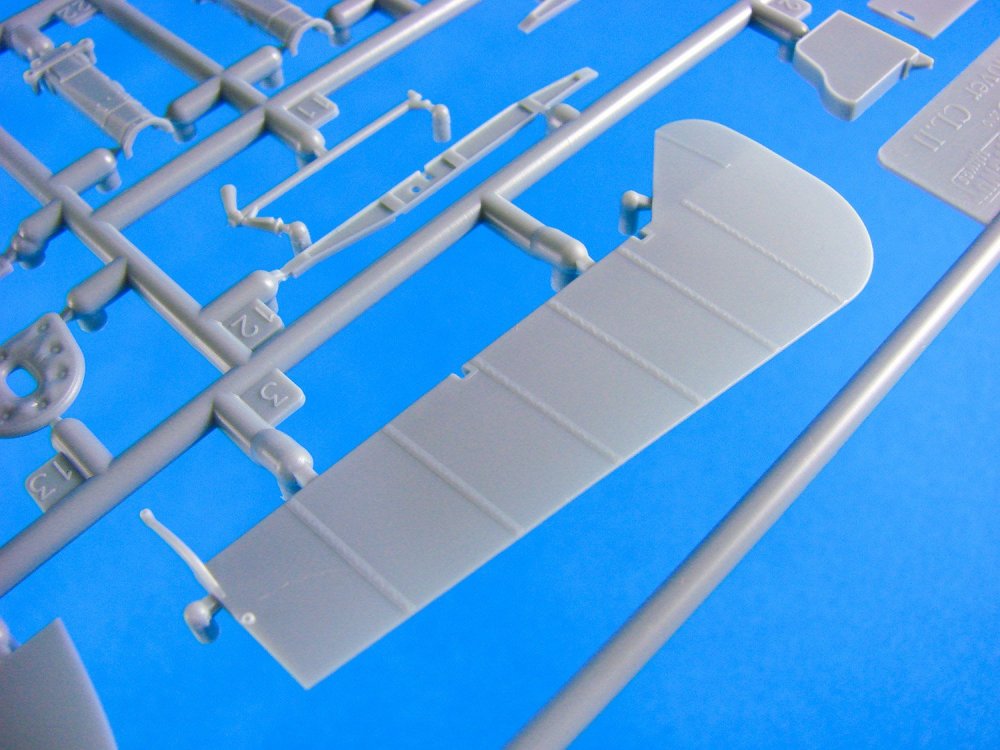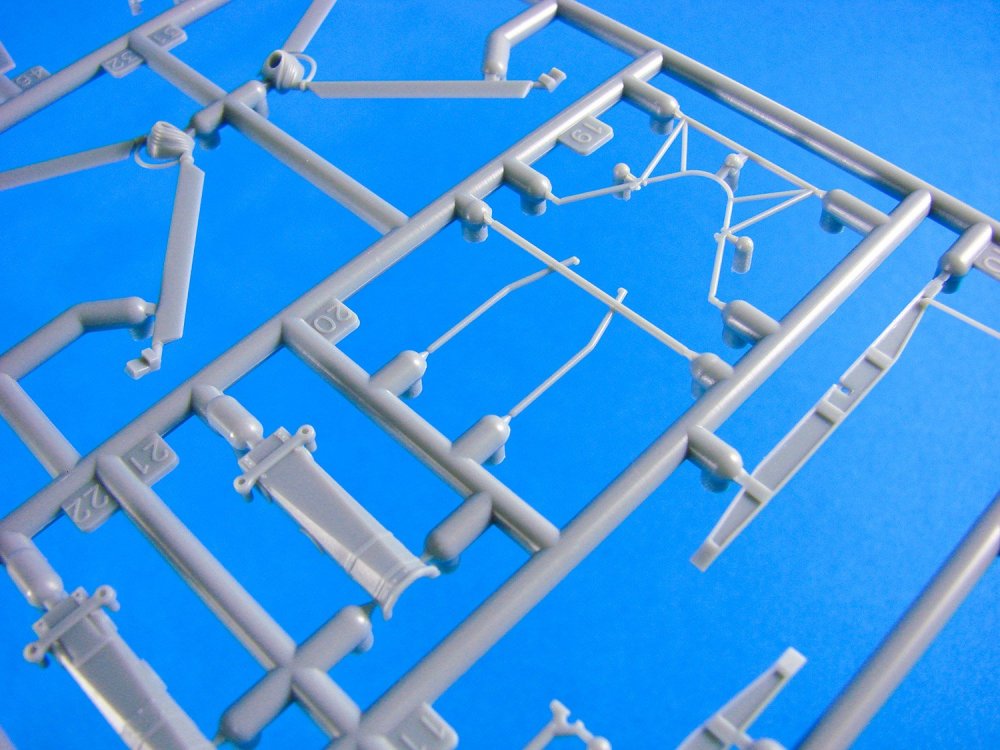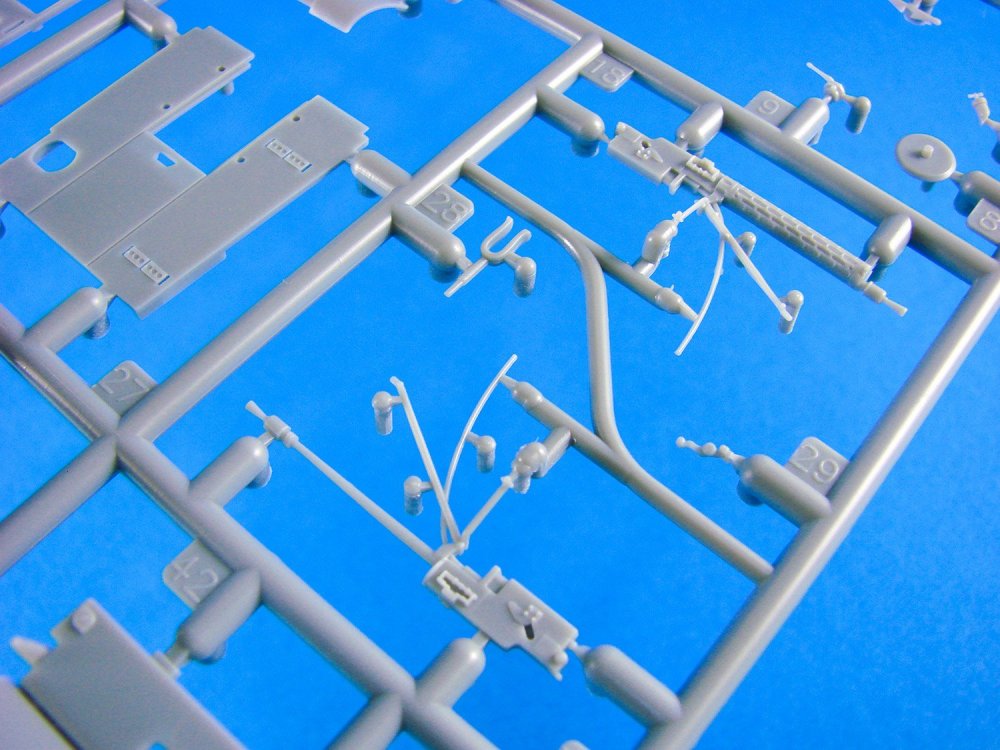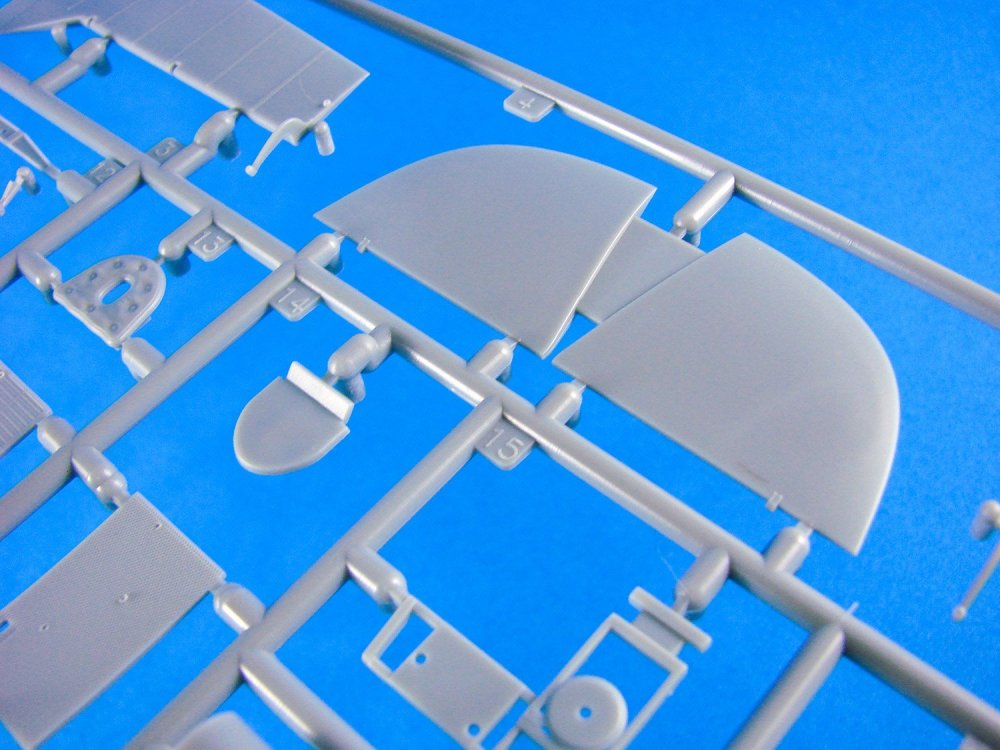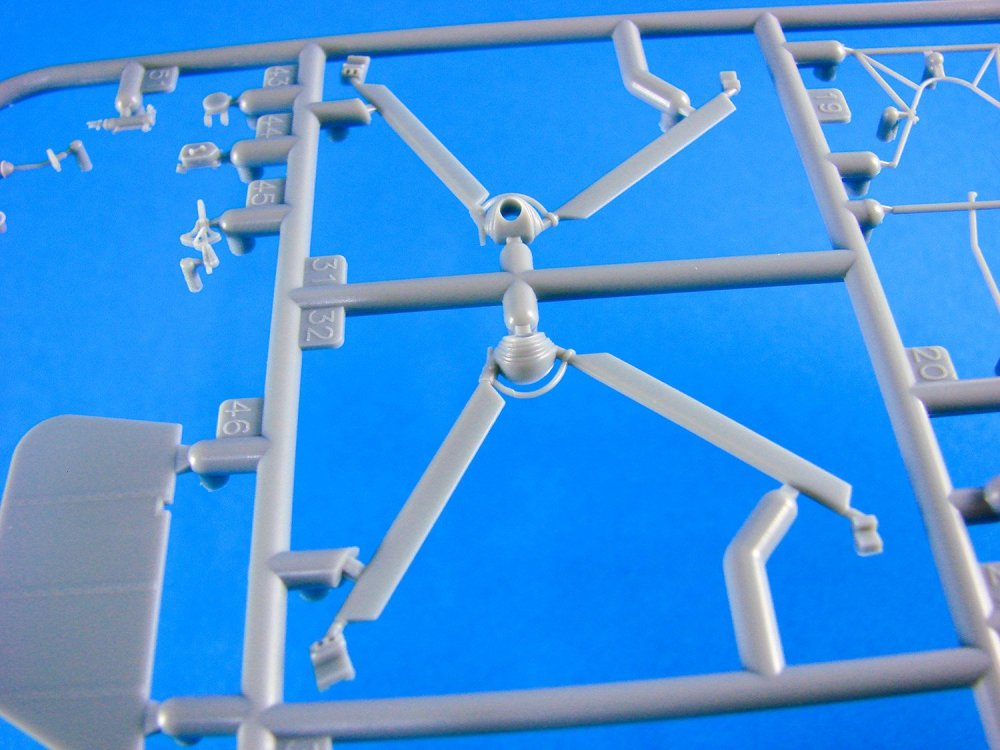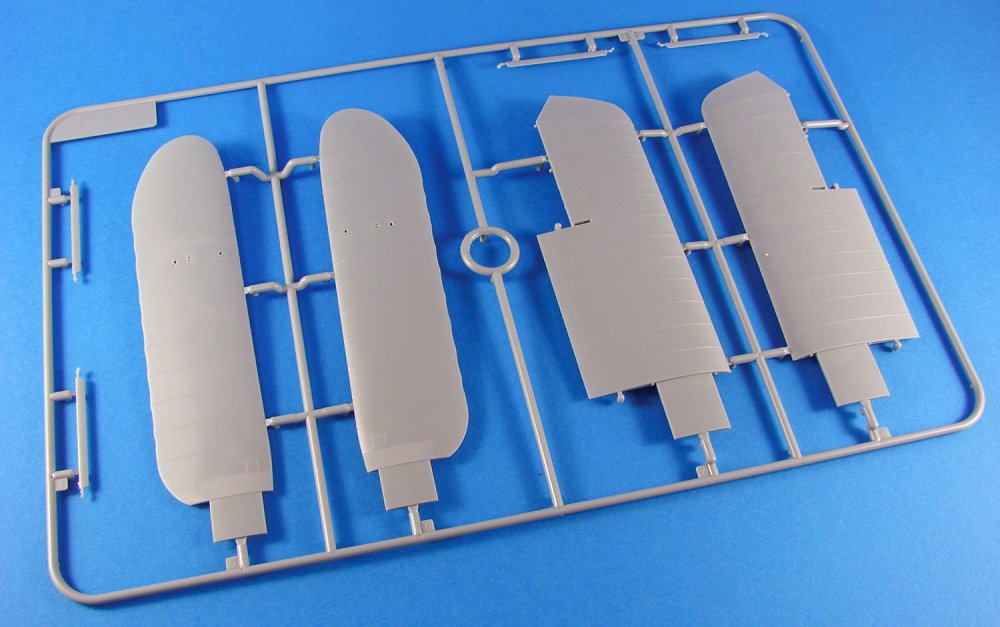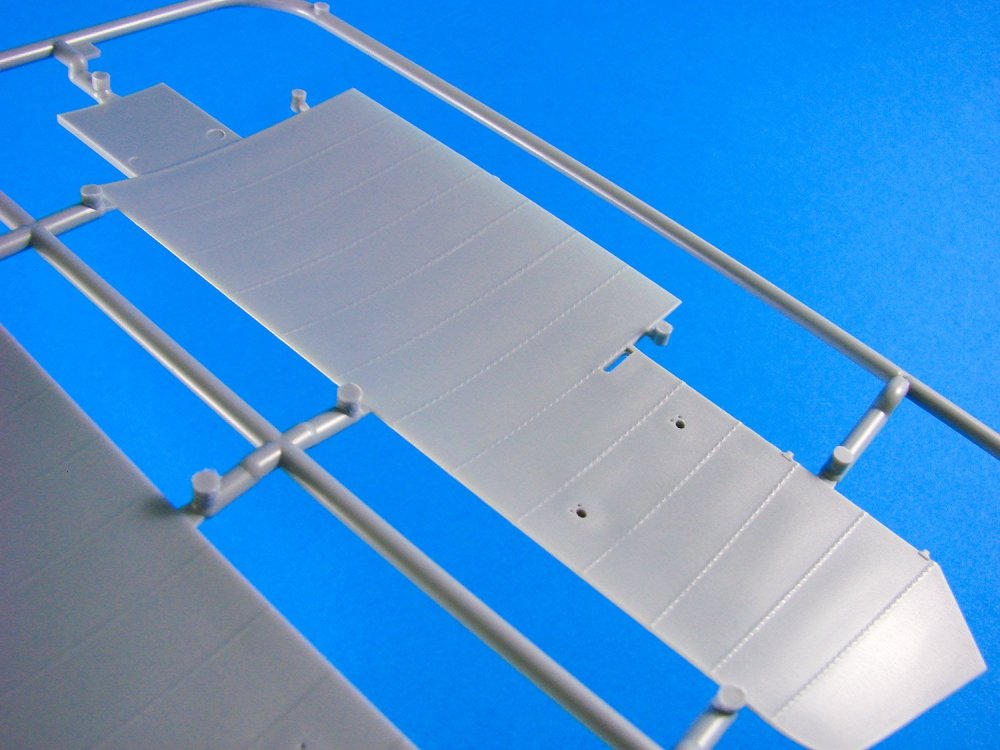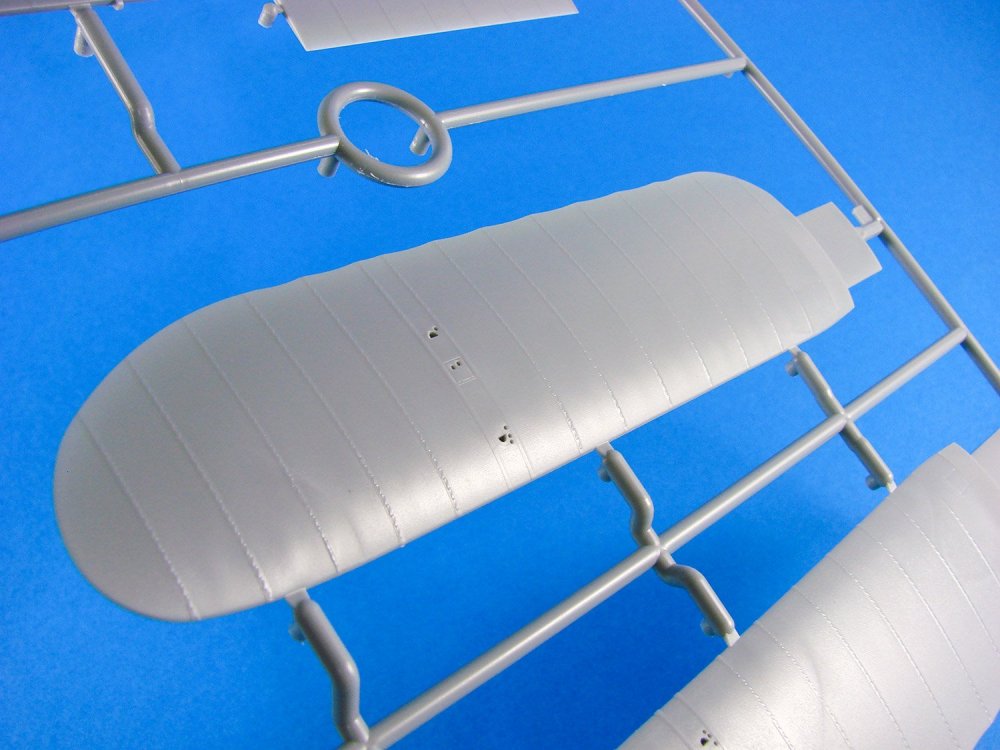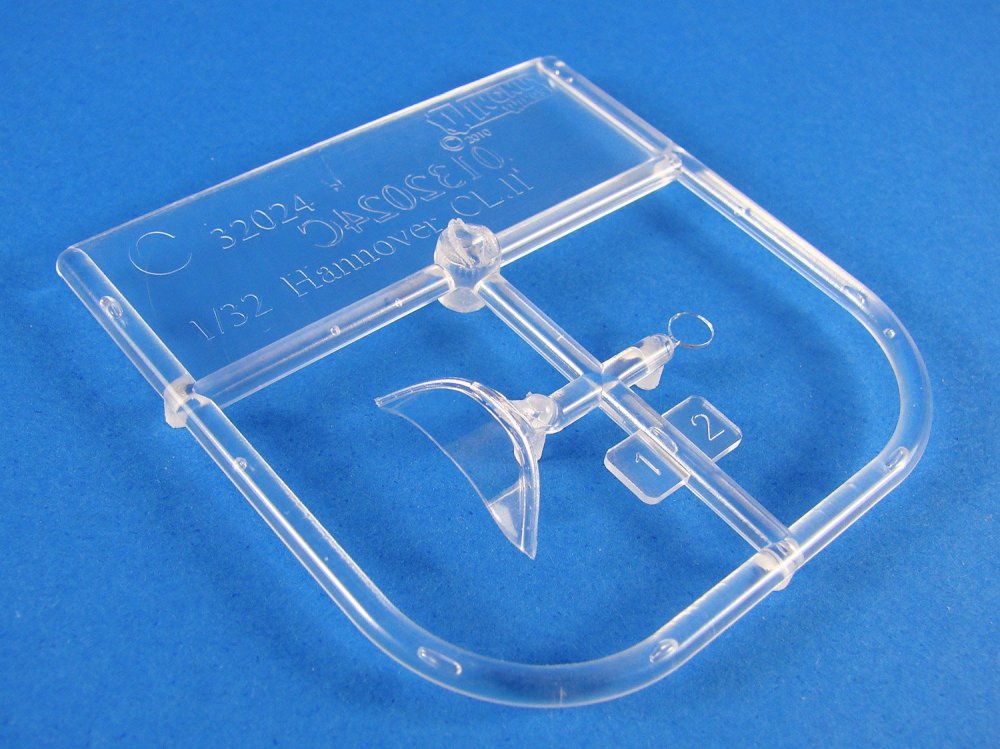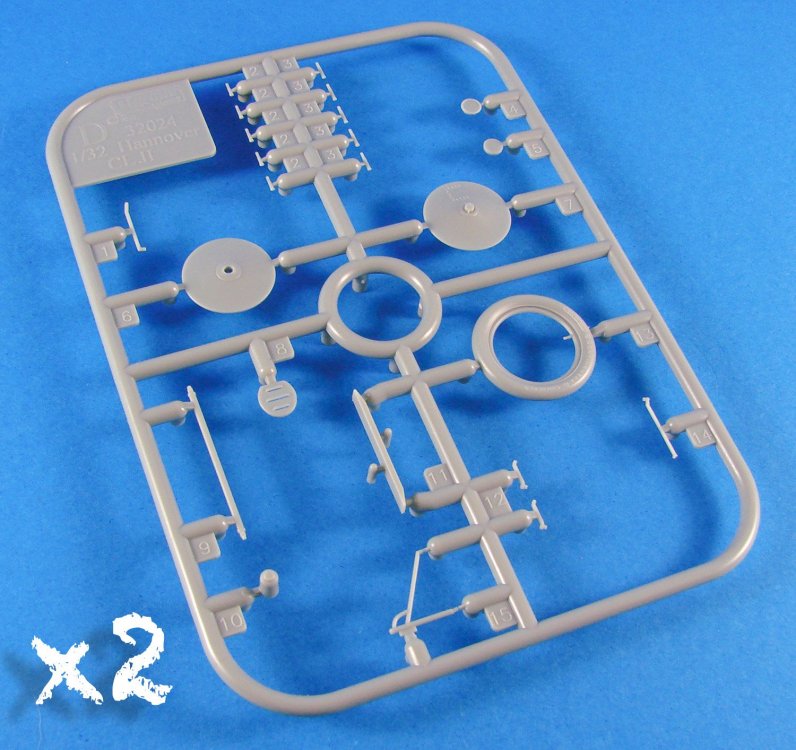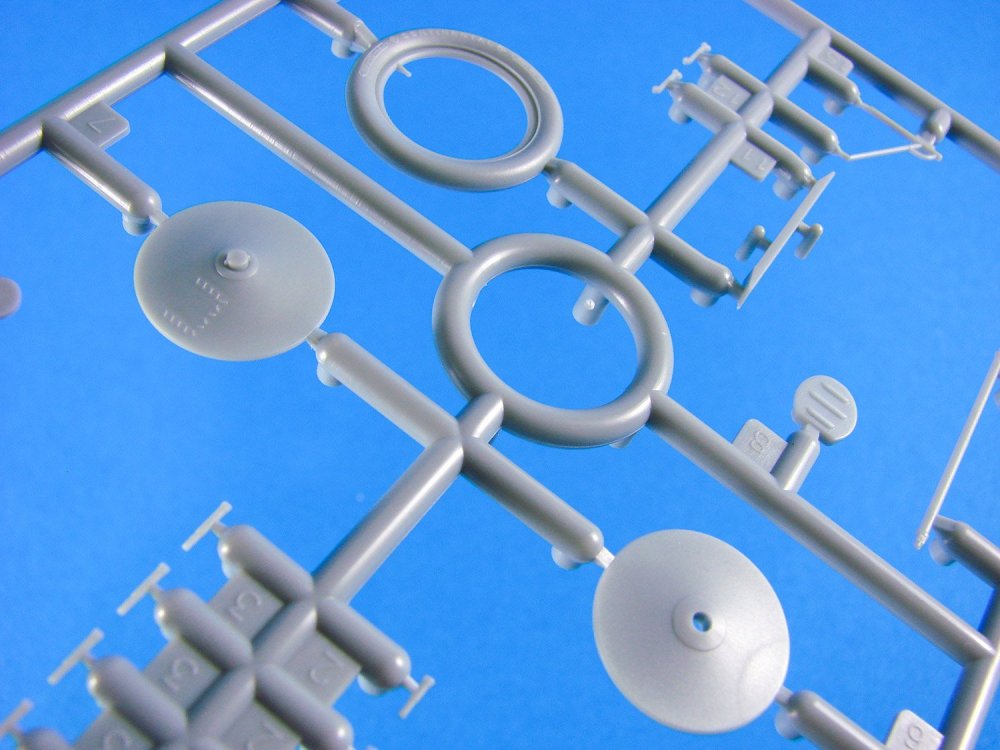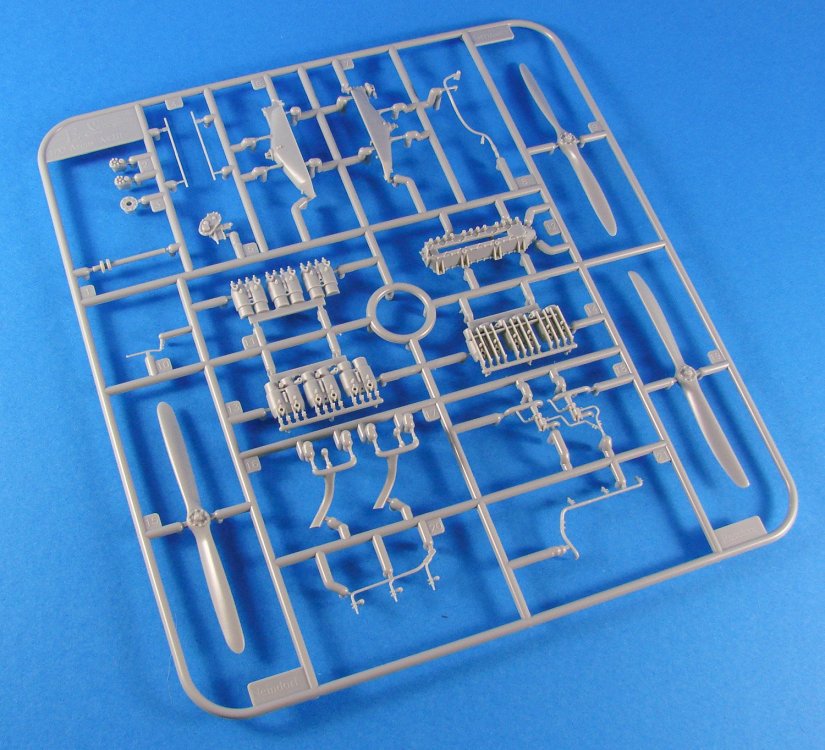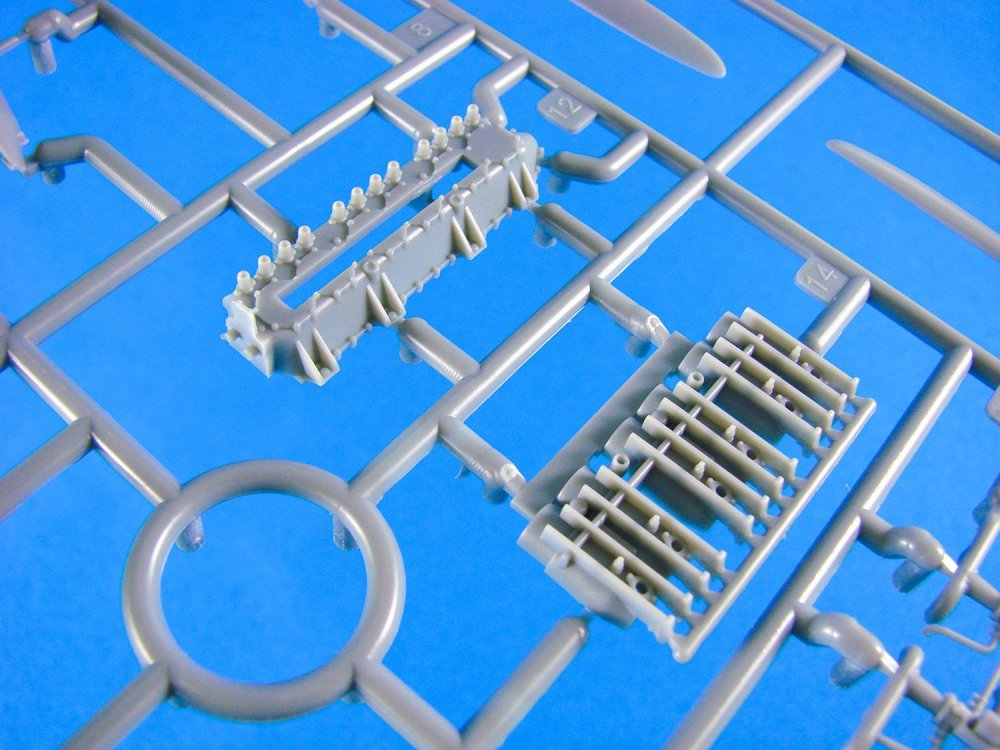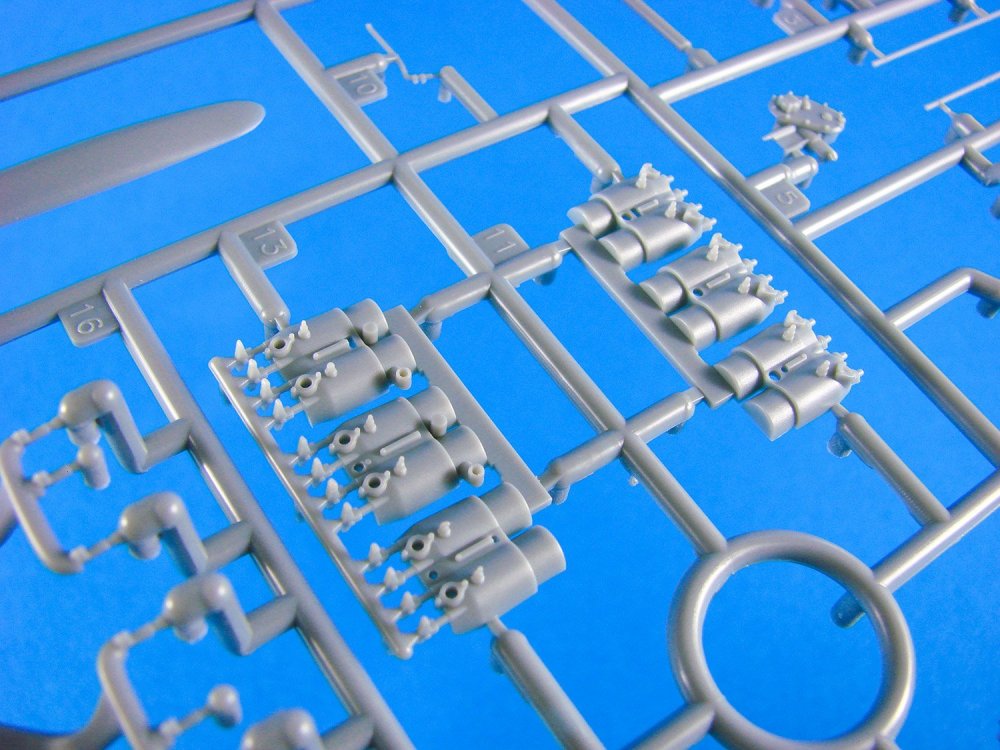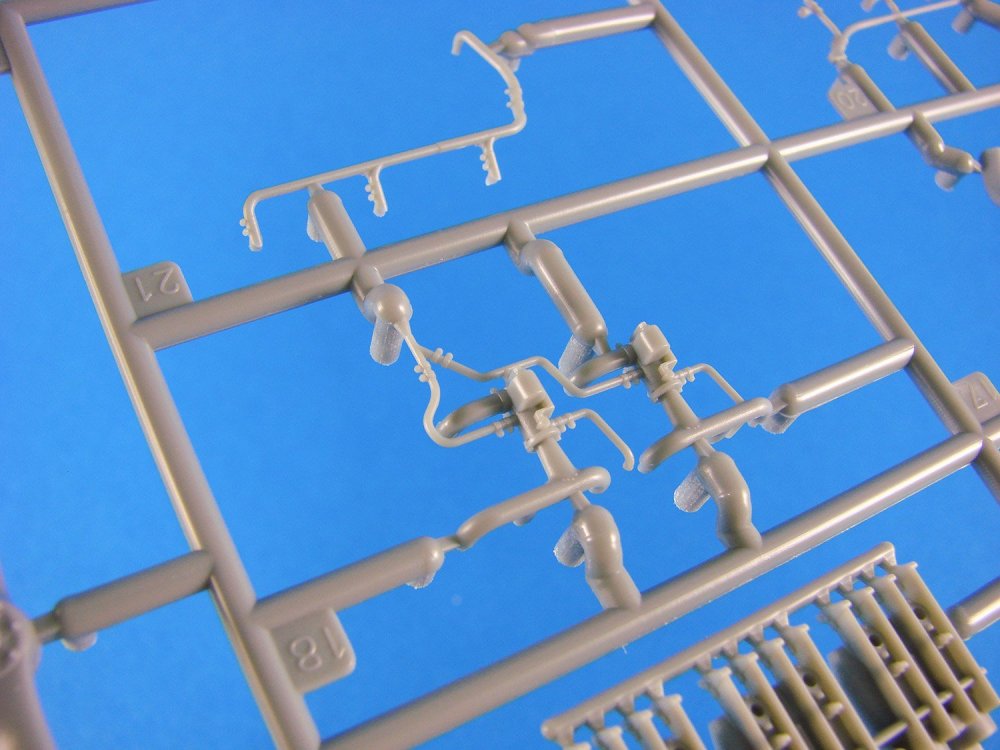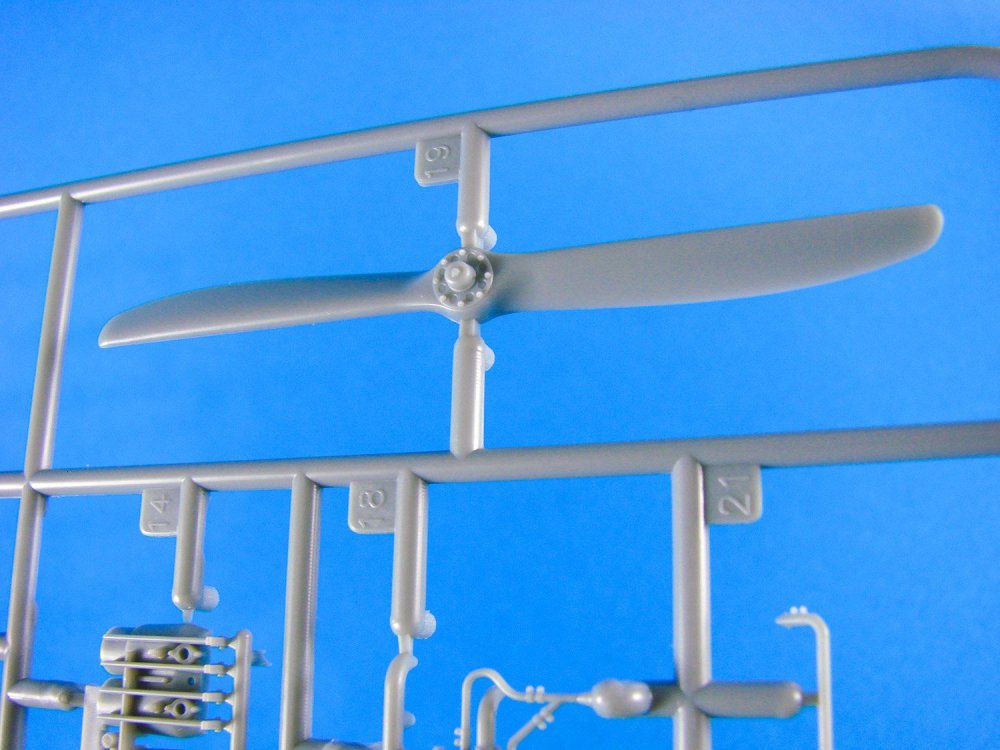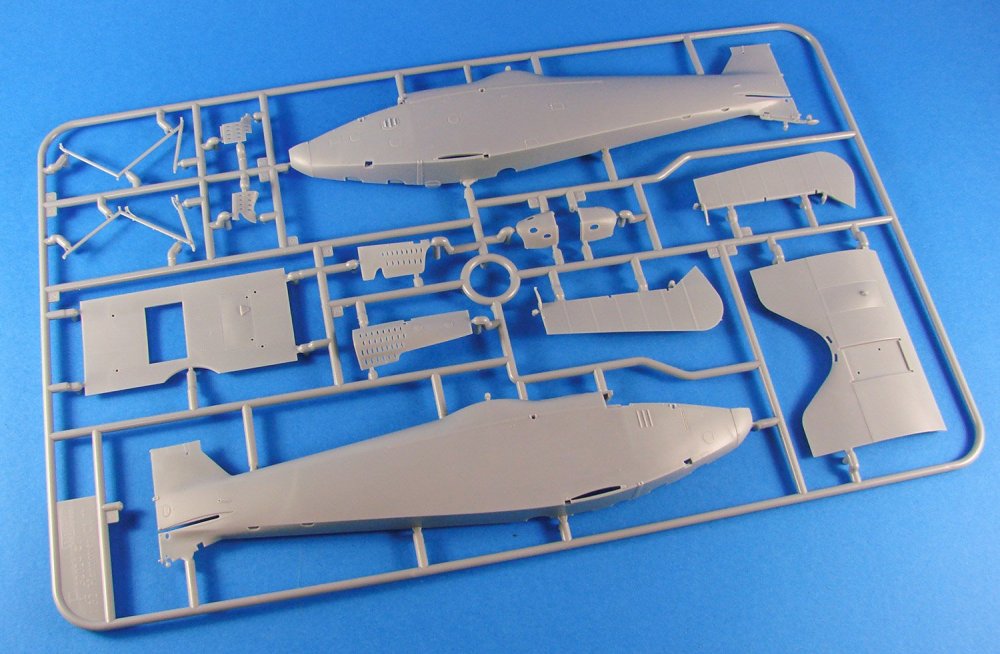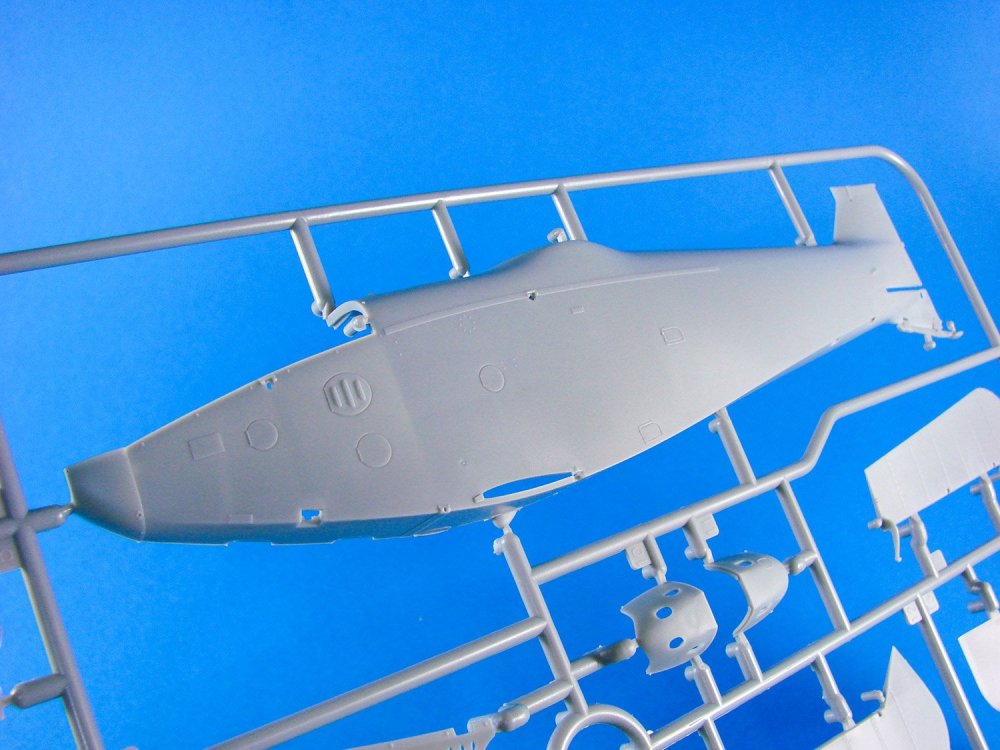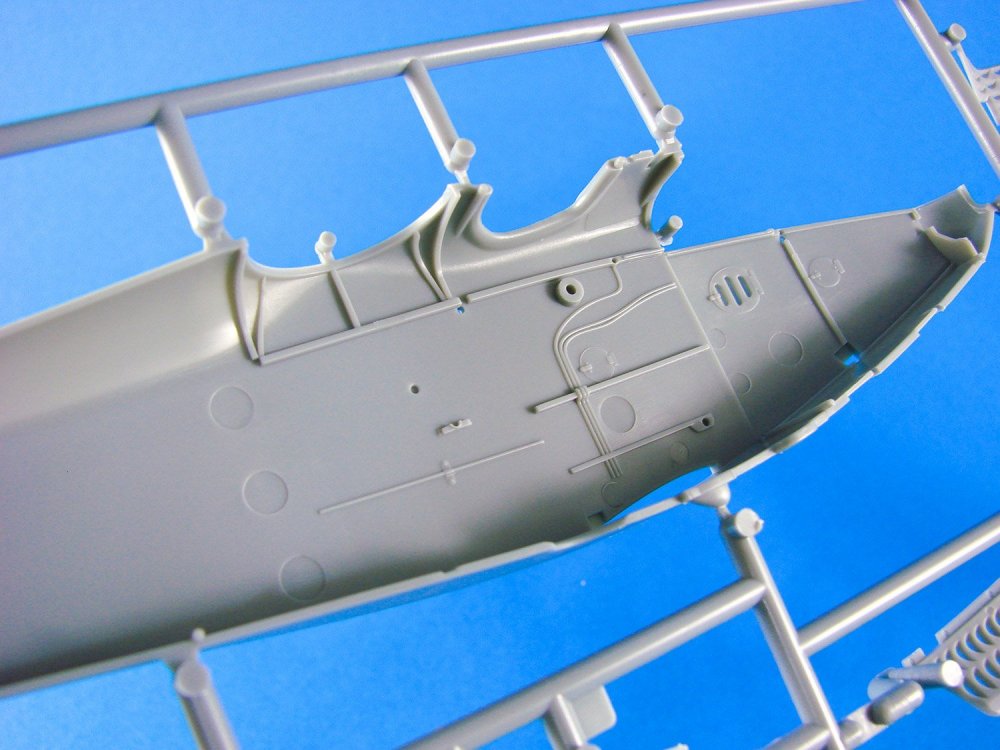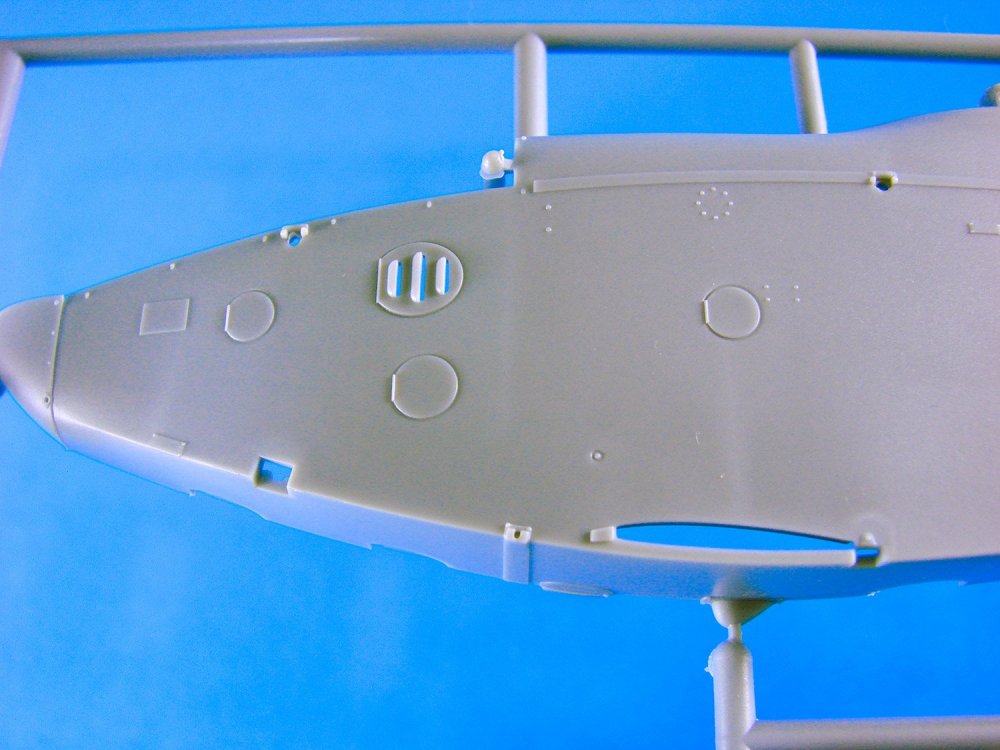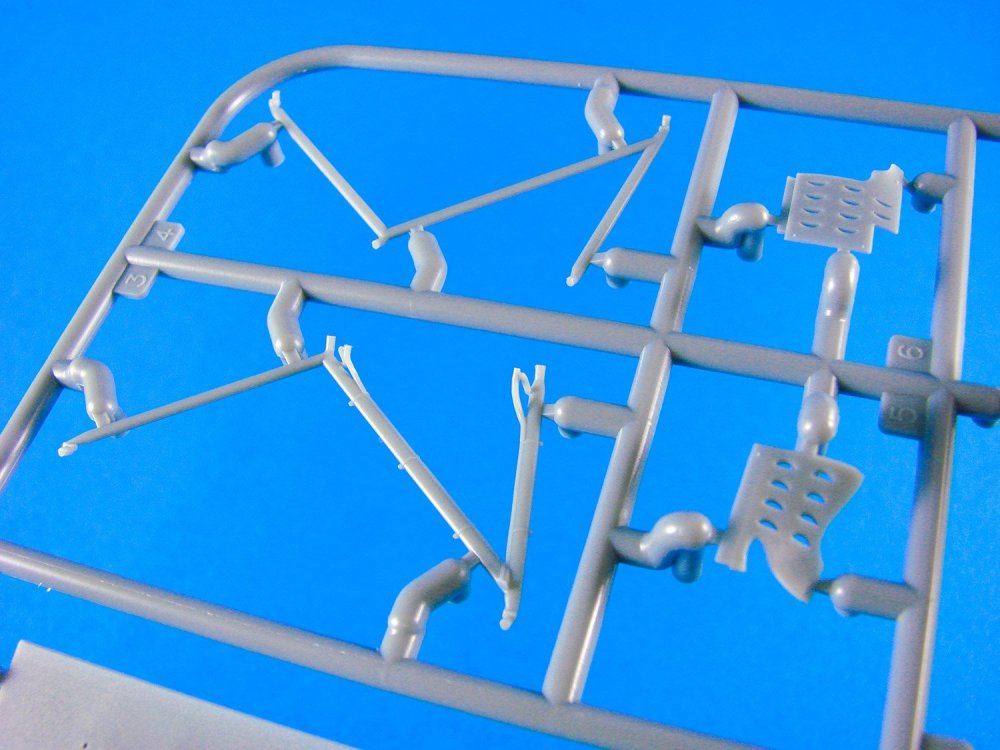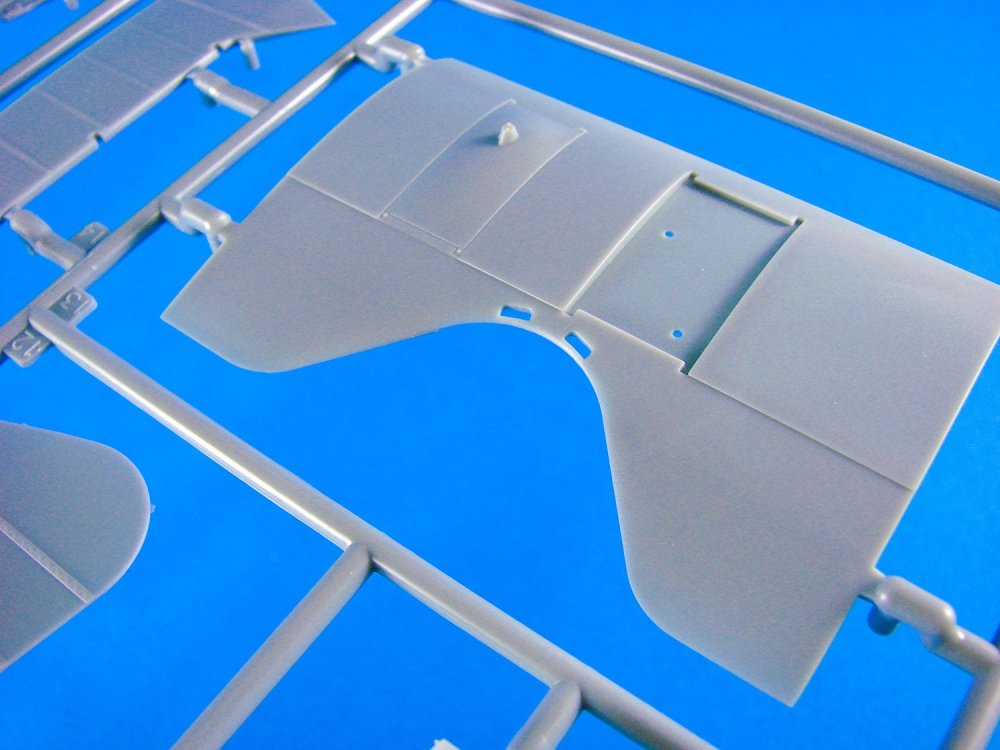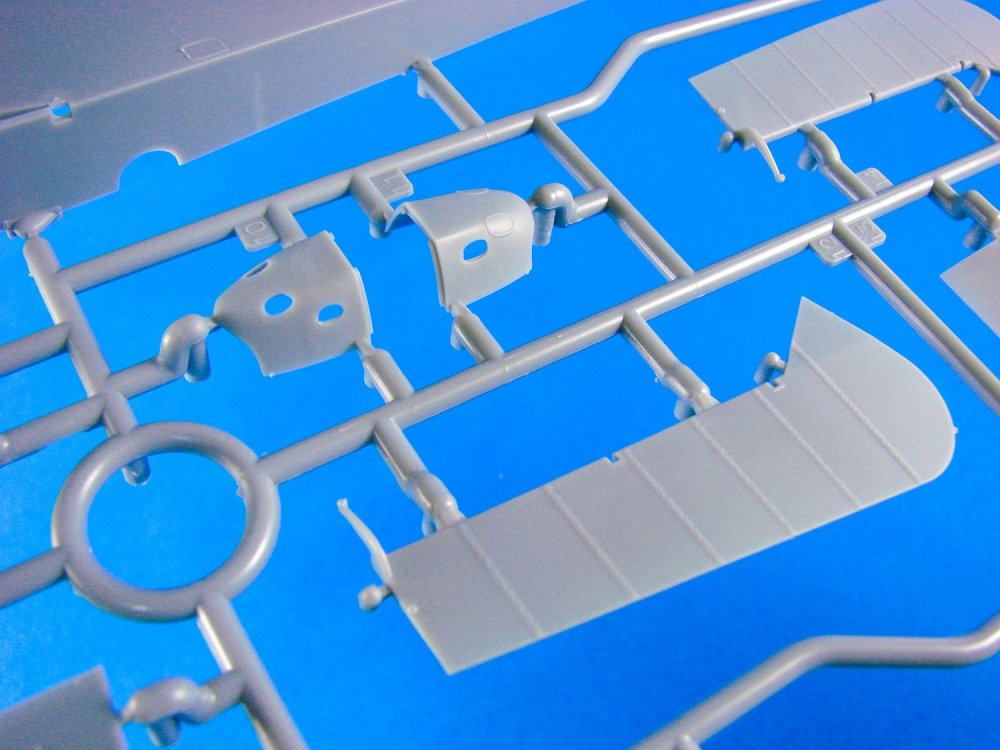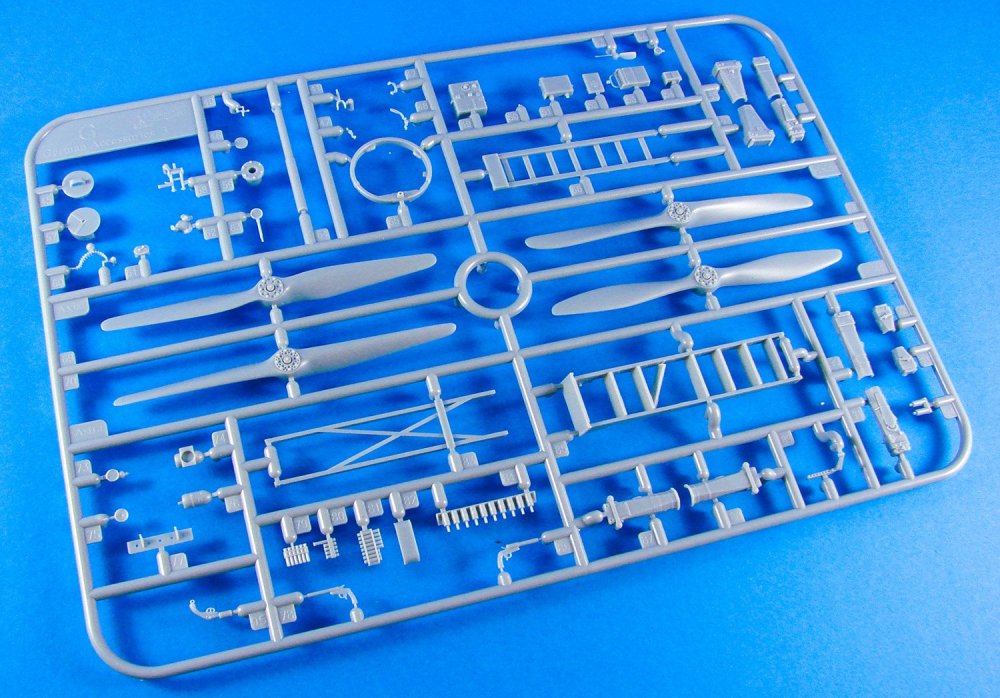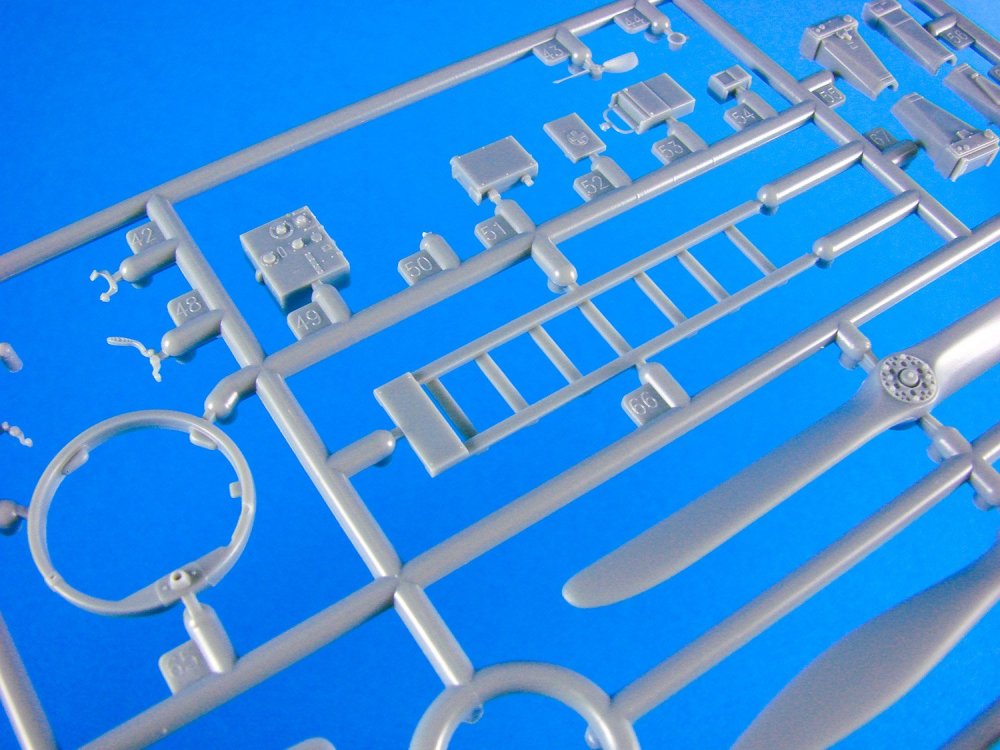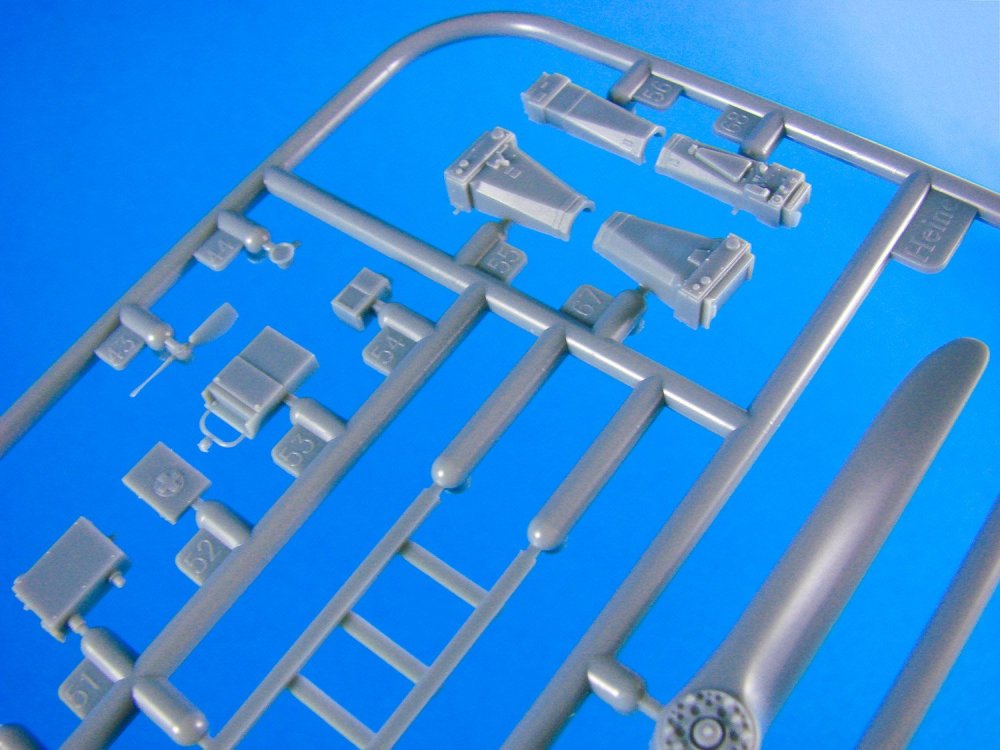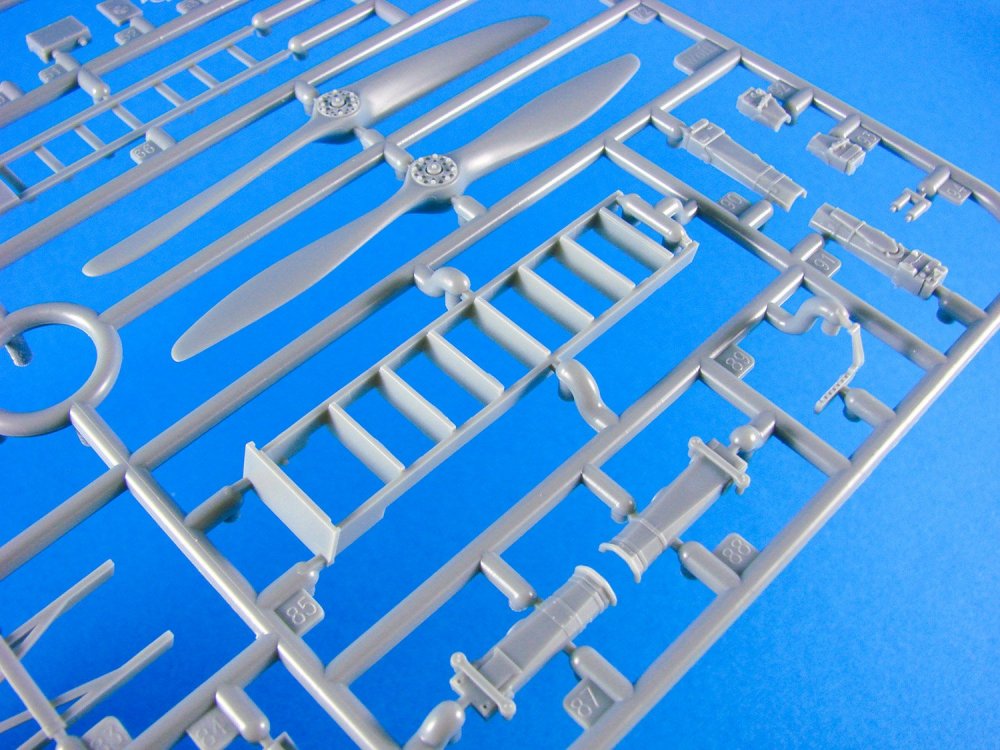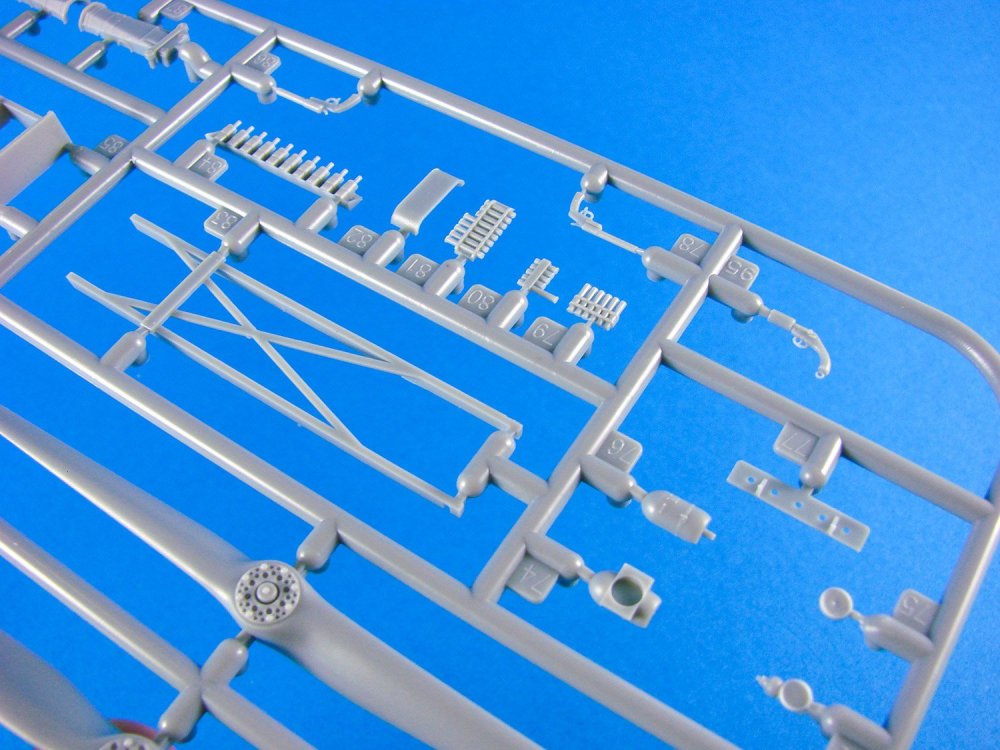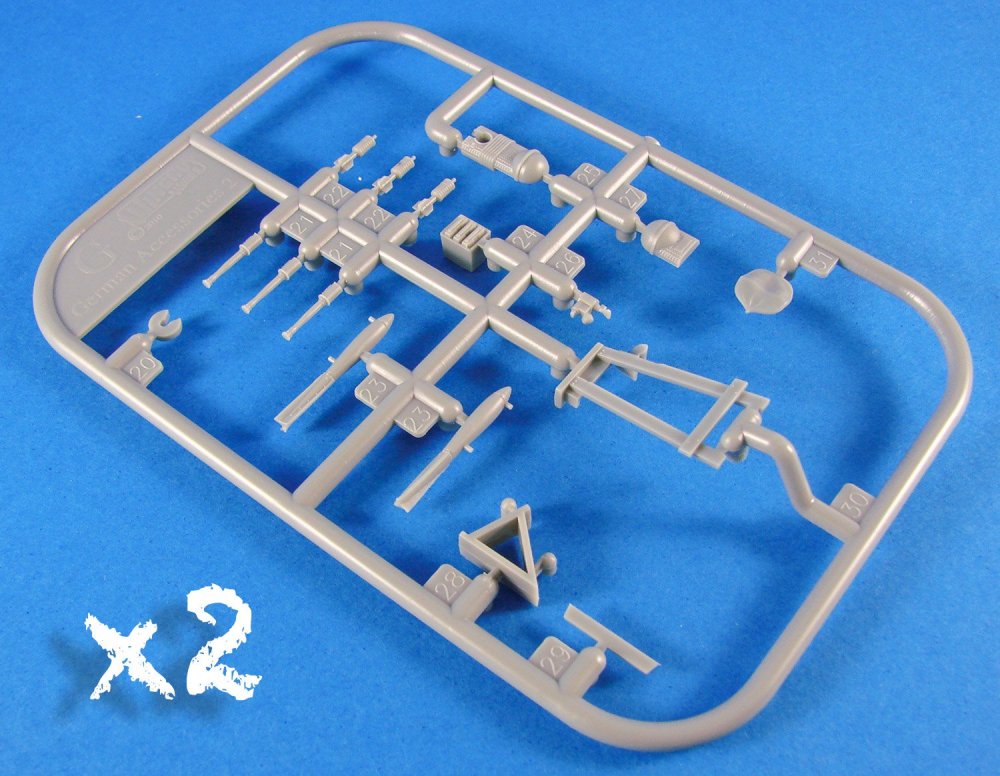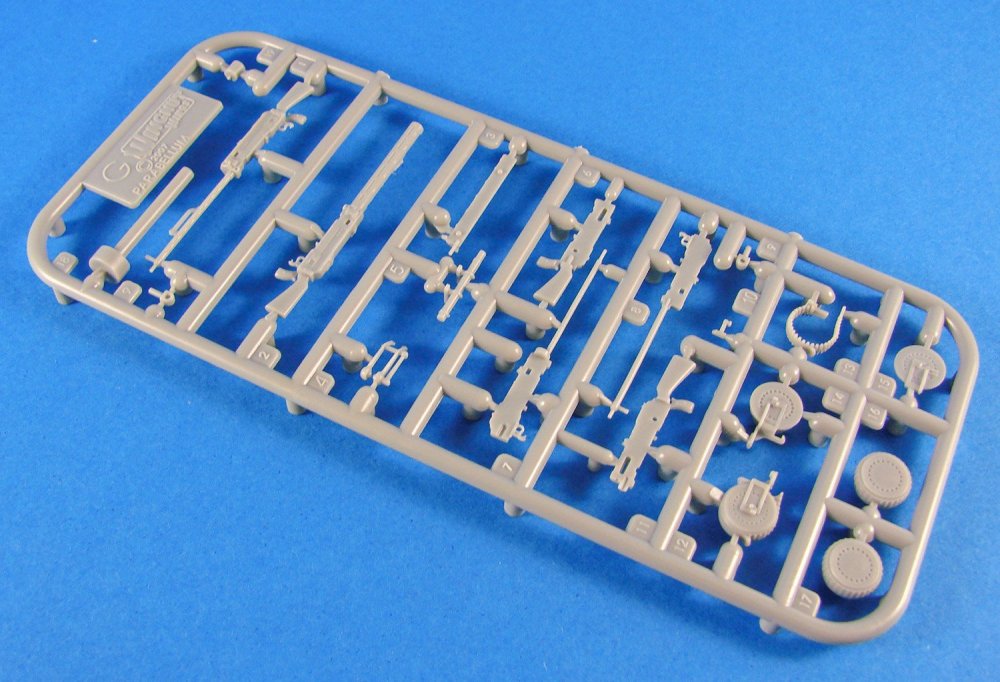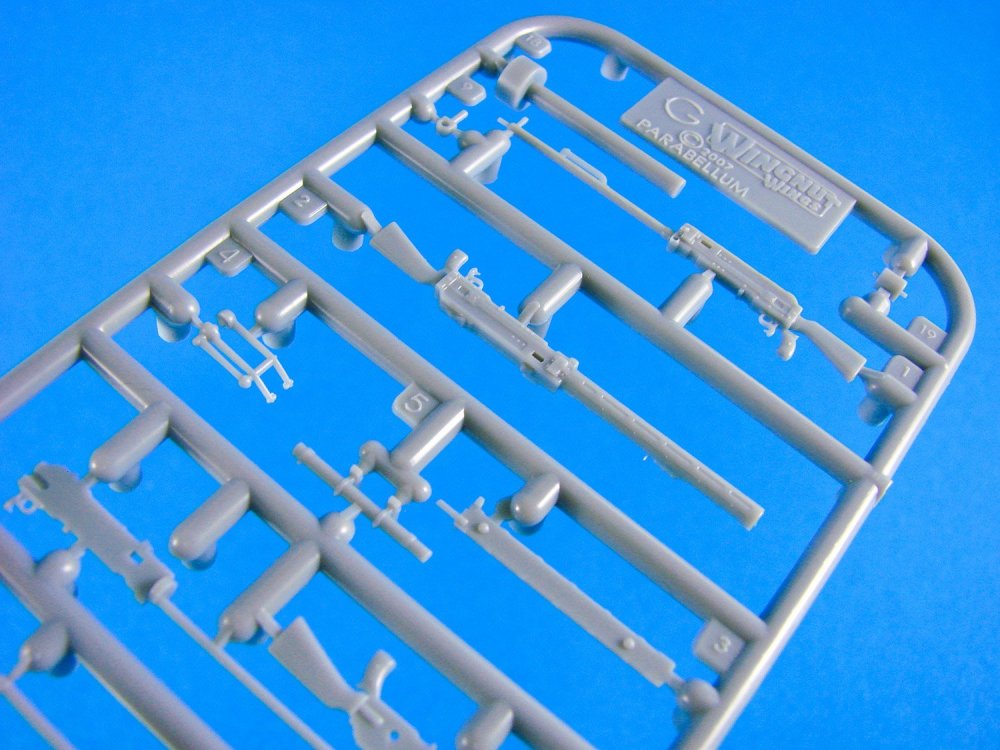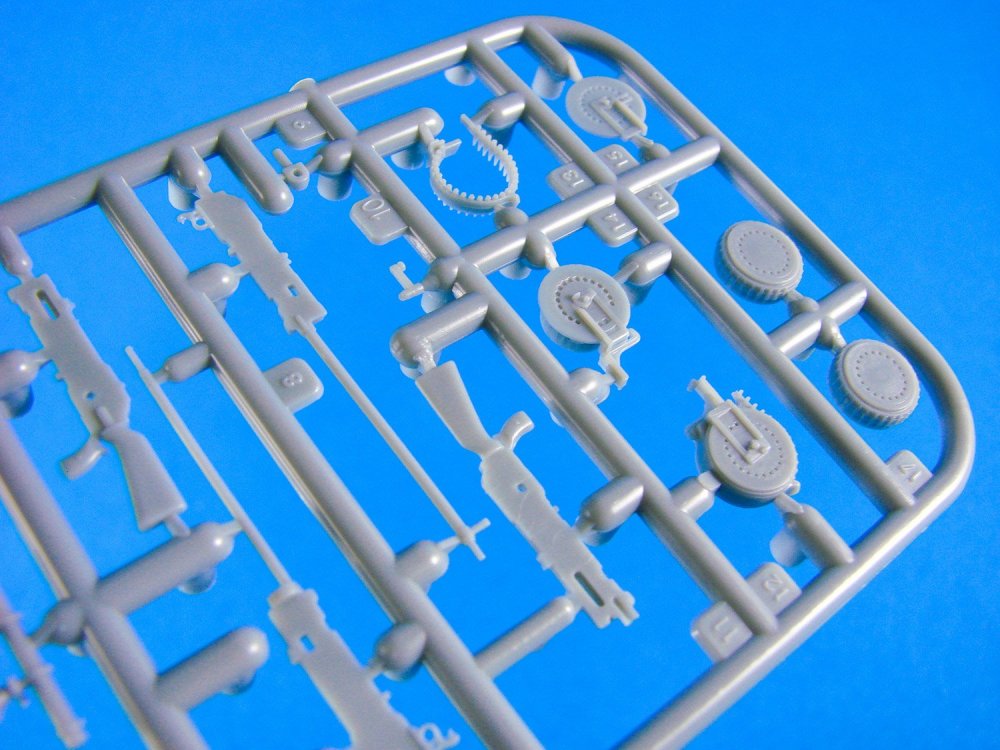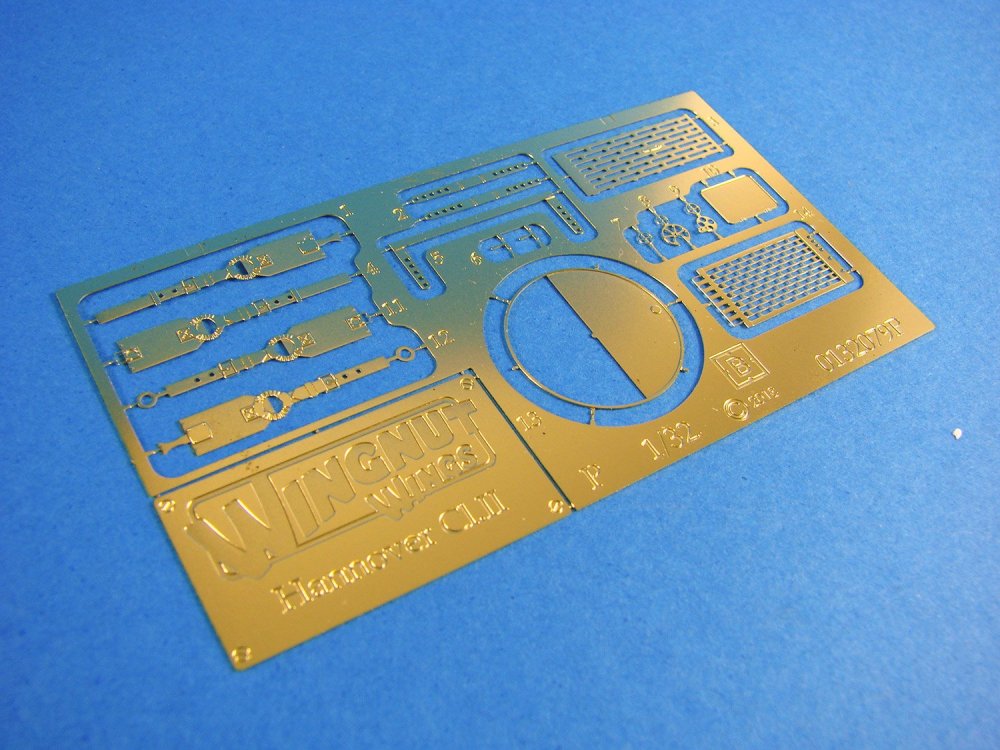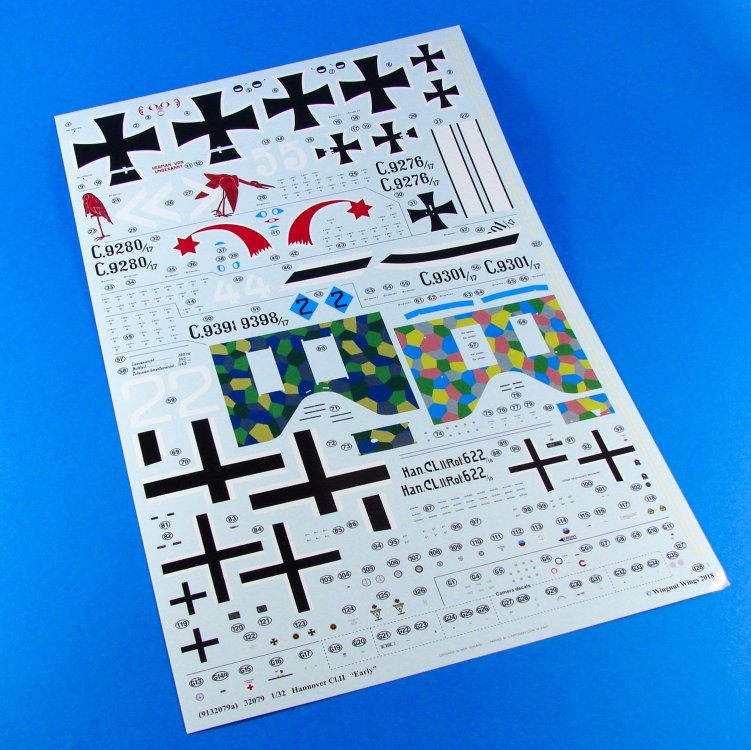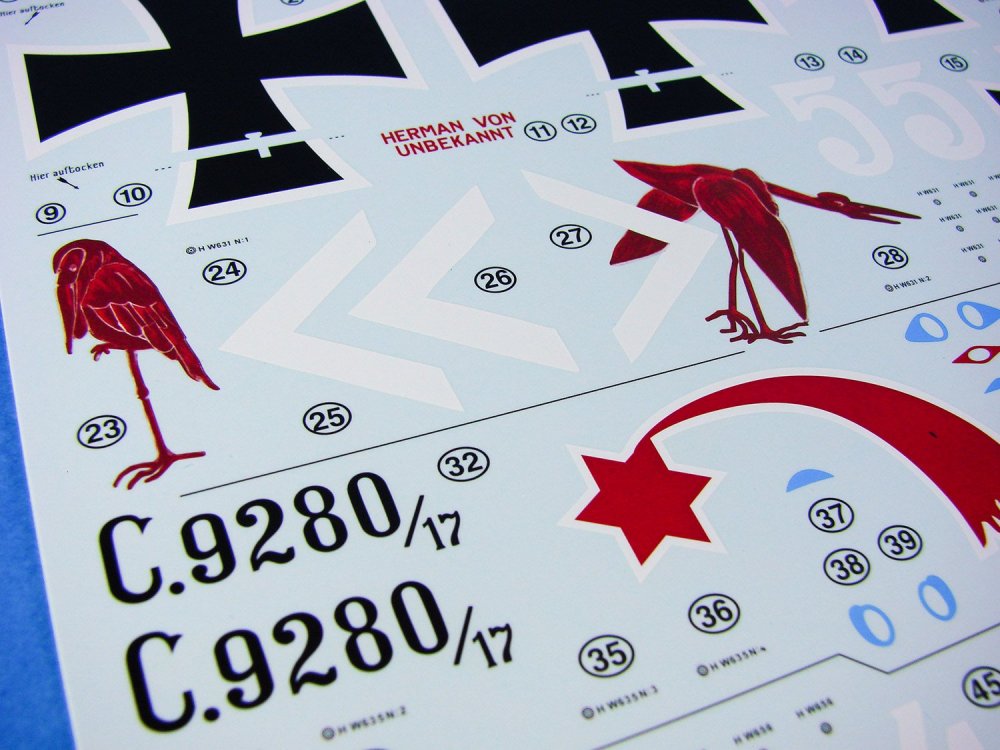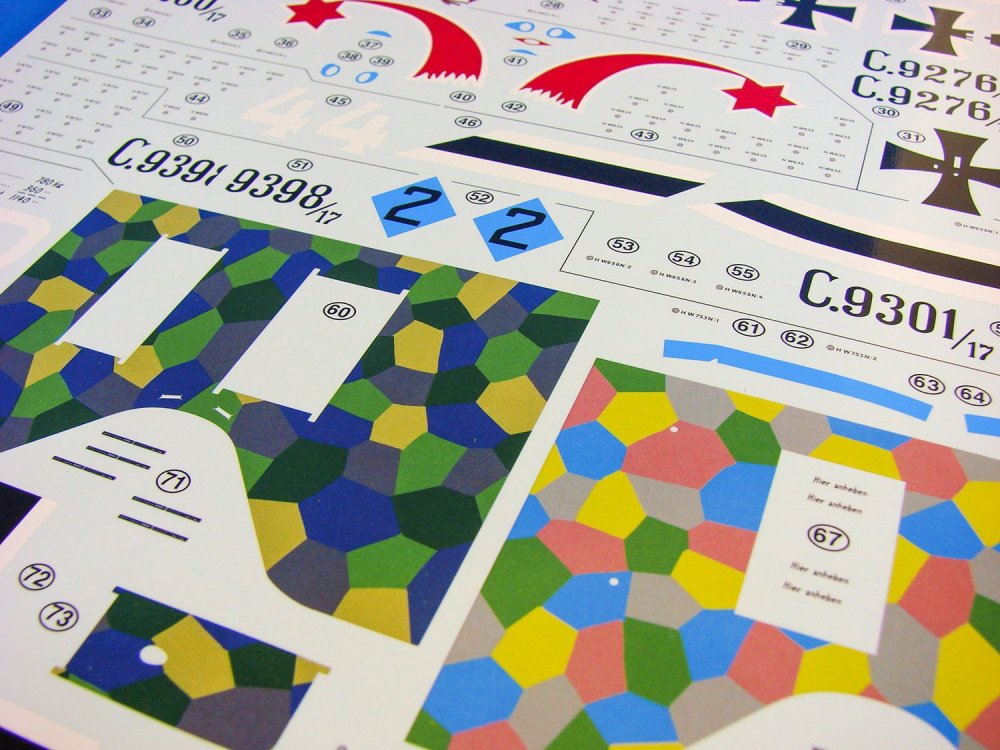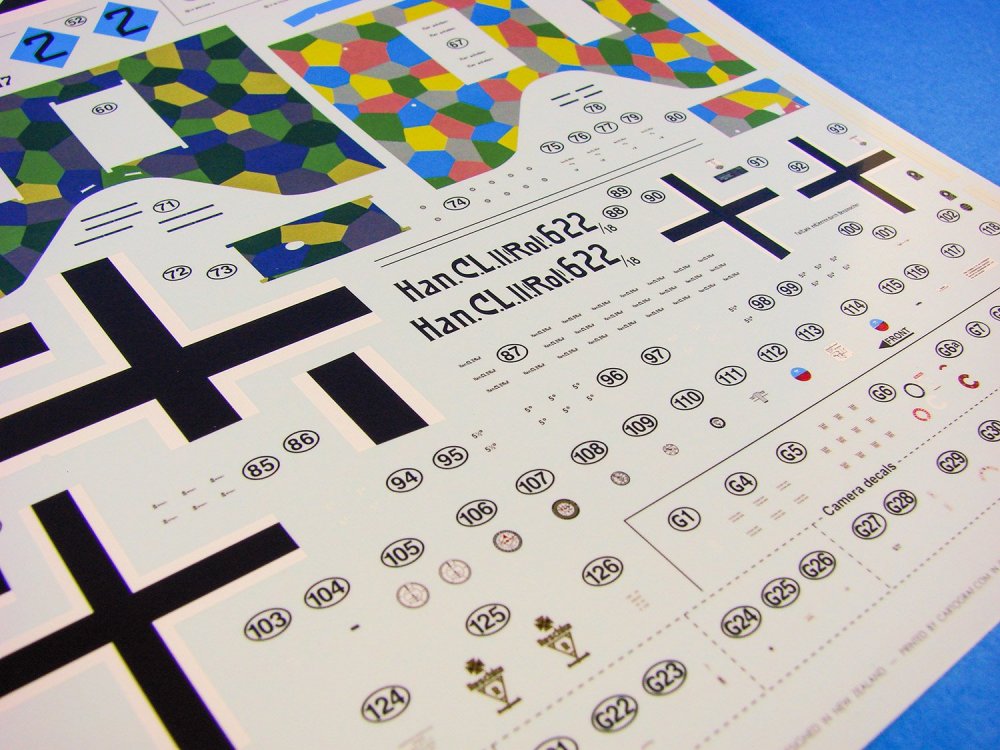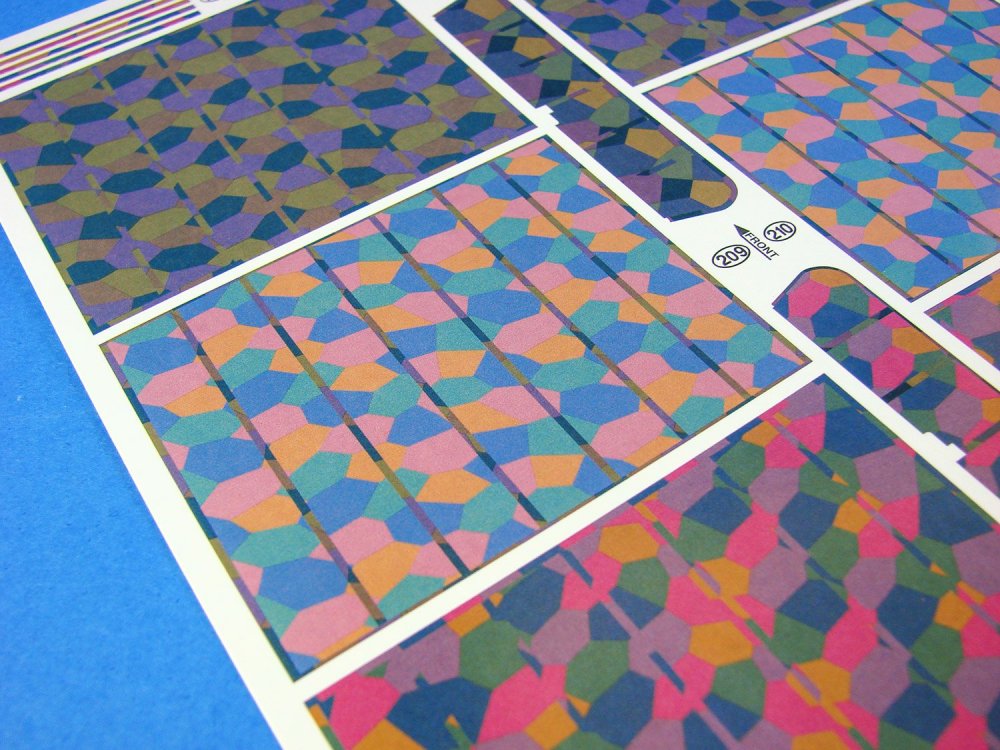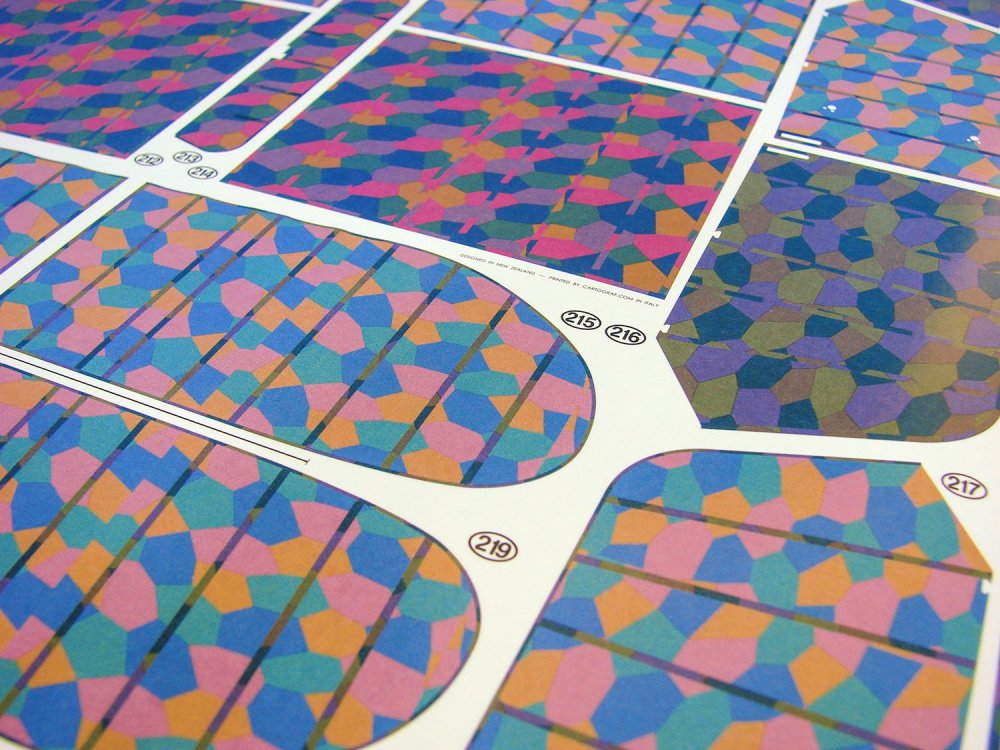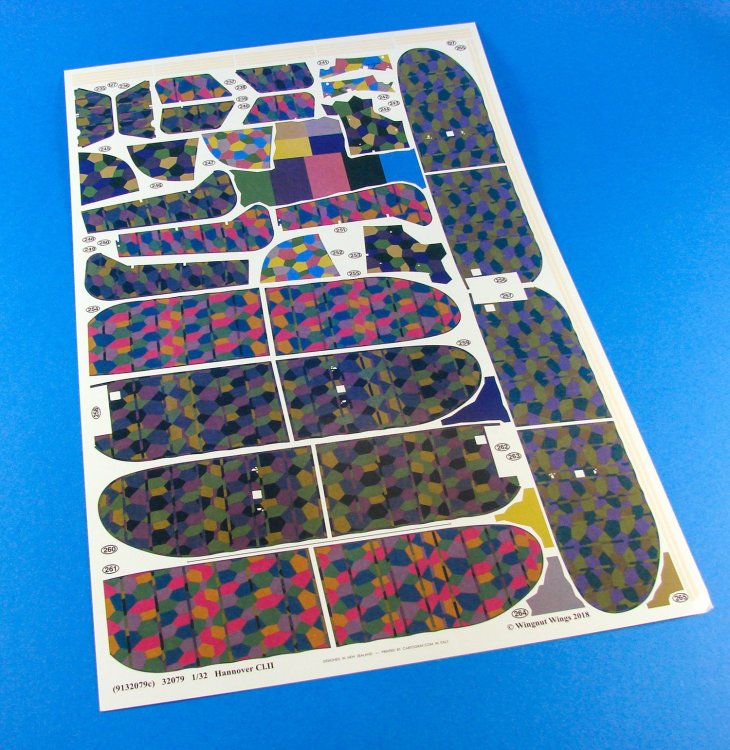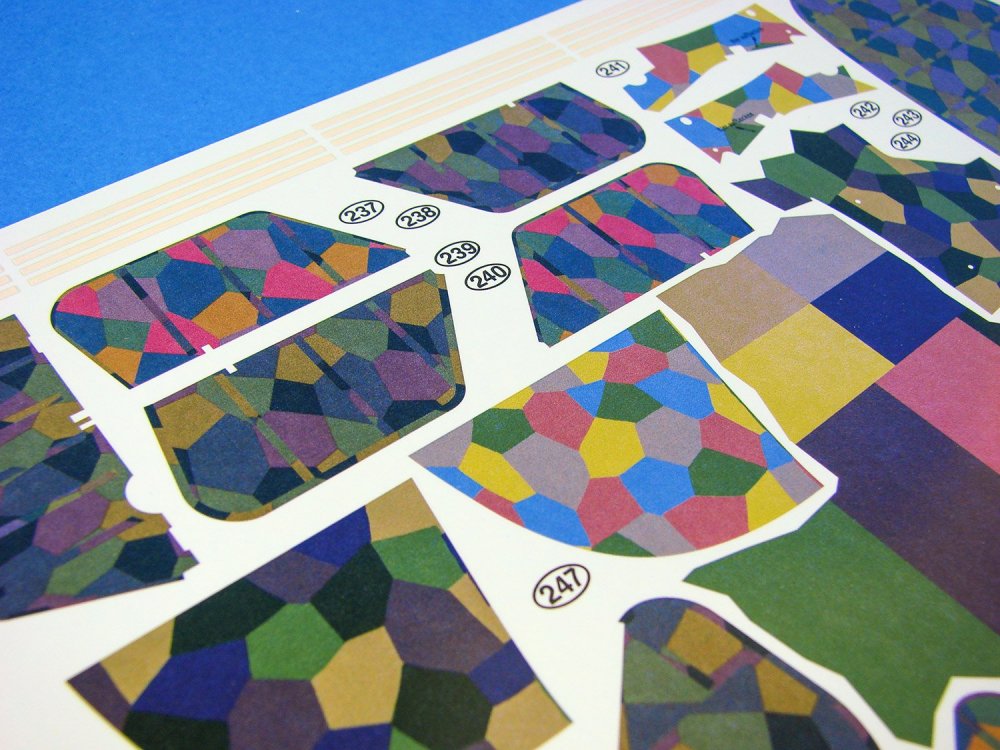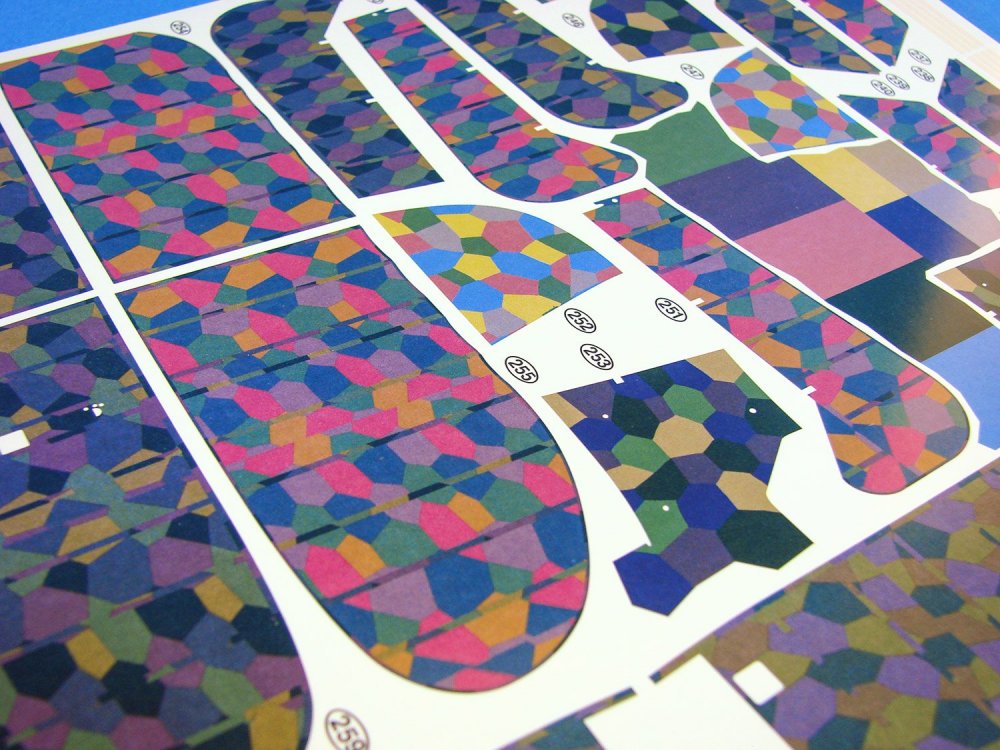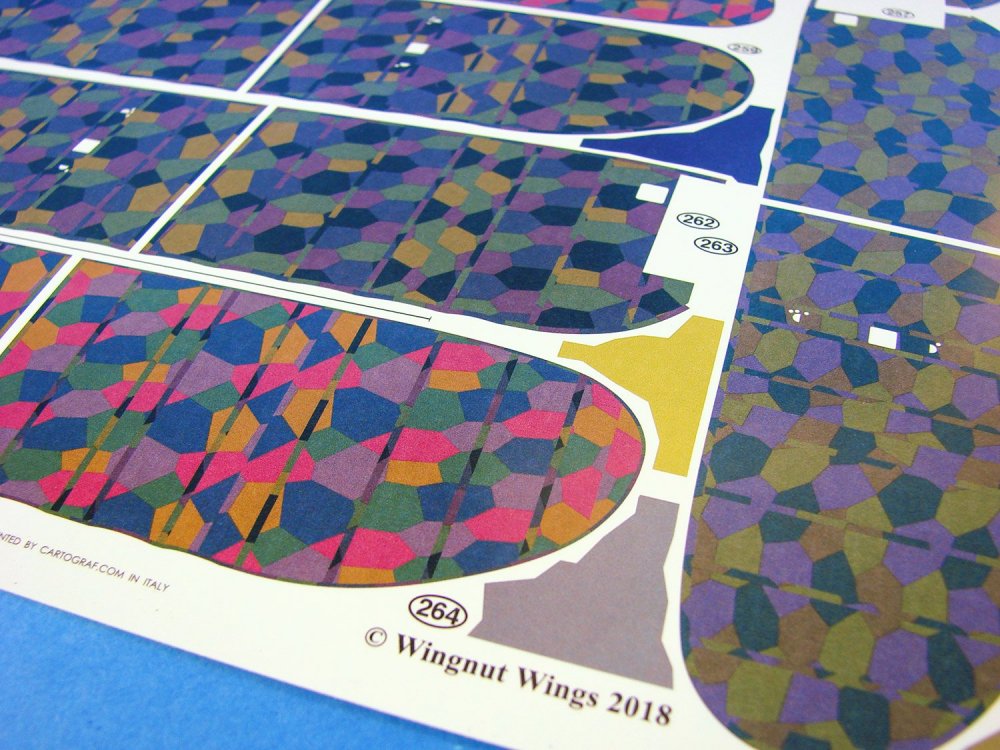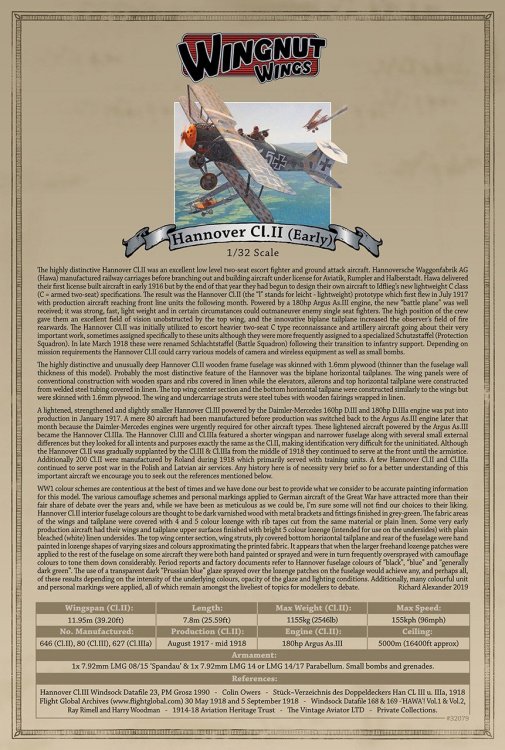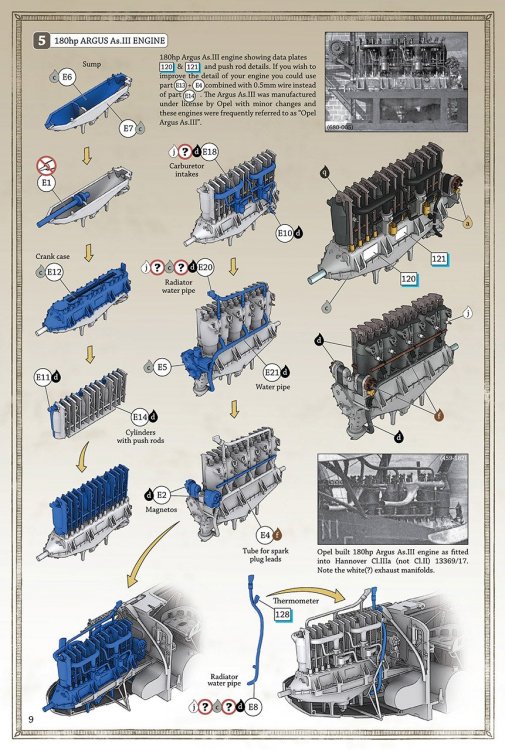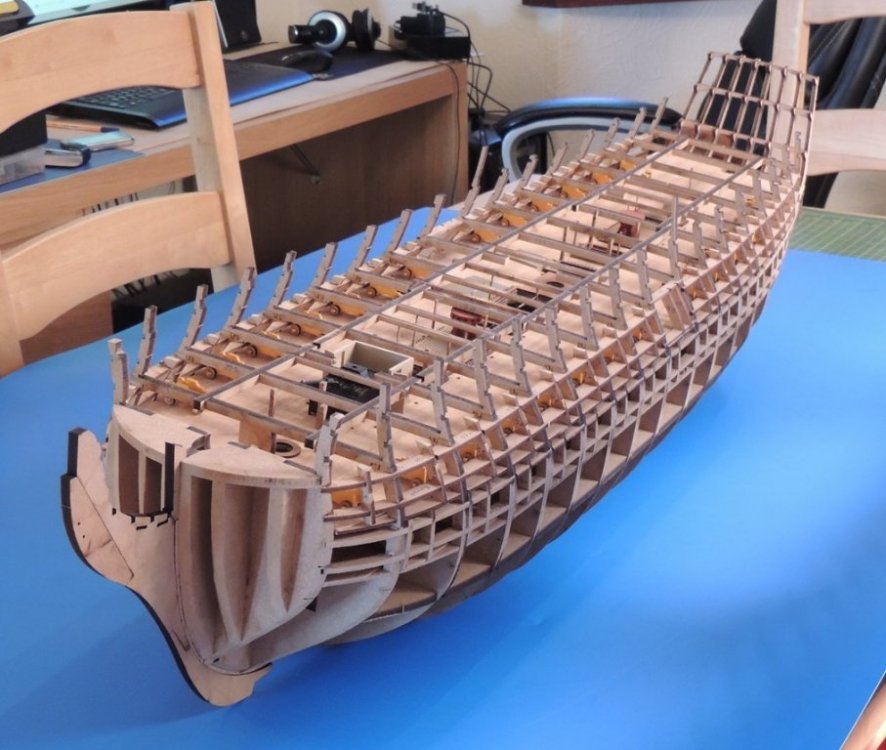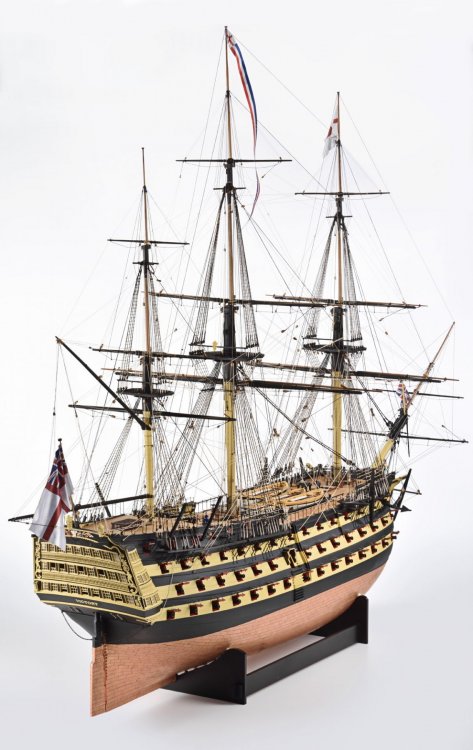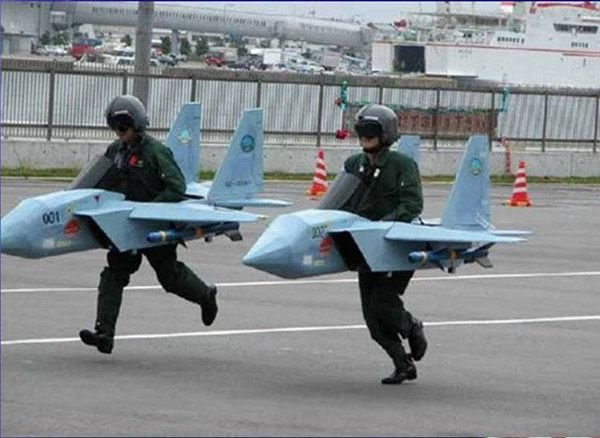-
Posts
3,256 -
Joined
-
Last visited
Content Type
Profiles
Forums
Events
Gallery
Everything posted by James H
-

1/32 Whirlwind - 3D cockpit rendered images
James H replied to petr@specialhobby's topic in Special Hobby
If anything will tempt me to do a little plastic again, it'll be this. I've arranged for LSM to review this as soon as possible. -
It's legit. At the moment, I am supporting the costs of LSM, solely, so anything to help contribute will certainly be welcome for our running costs. Many thanks to those that have helped so far.
-

Das Werk 1/32 Ju-126 "Elli"/ Ju-127 "Walli"
James H replied to JeroenPeters's topic in Aircraft Reviews
Out-frickin-standing! -
Major update. If you follow topics, check your settings to make sure they default to 'unread content'.
-

New HK Models Release: Lancaster Nose Section
James H replied to JeroenPeters's topic in Aircraft Reviews
Just wonderful, eh? -
1:32 Gloster Gladiator Mk.II ICM Catalogue # 32041 The Gloster Gladiator was a British-built biplane fighter. It was used by the Royal Air Force (RAF) and the Fleet Air Arm (FAA) (as the Sea Gladiator variant) and was exported to a number of other air forces during the late 1930s. Developed privately as the Gloster SS.37, it was the RAF's last biplane fighter aircraft and was rendered obsolete by newer monoplane designs even as it was being introduced. Though often pitted against more formidable foes during the early days of the Second World War, it acquitted itself reasonably well in combat. The Gladiator saw action in almost all theatres during the Second World War, with a large number of air forces, some of them on the Axis side. The RAF used it in France, Norway, Greece, the defence of Malta, the Middle East, and the brief Anglo-Iraqi War (during which the Royal Iraqi Air Force was similarly equipped). Other countries deploying the Gladiator included China against Japan, beginning in 1938; Finland (along with Swedish volunteers) against the Soviet Union in the Winter War and the Continuation War; Sweden as a neutral non-combatant (although Swedish volunteers fought for Finland against USSR as stated above); and Norway, Belgium, and Greece resisting Axis invasion of their respective lands. The Gladiator II, the type depicted in this kit, was the version that was powered by a single Bristol Mercury VIIIA air-cooled radial piston engine. The kit As far as I’m aware, ICM’s Gladiator is the first injection moulded kit of its type in 1:32, giving those who don’t fancy a vac or resin kit, a real chance to create this iconic bird in their favoured large scale. This specific kit, released early in 2020, is one of three Gladiator kits from ICM, with the Mk.I being released only last year, and the Sea Gladiator following the current release by a couple of months. ICM’s Gladiator is packed into a fairly typical and reasonably large box with a folding lid, then covered with the glossy box artwork lid. I quite like this approach as the package is far sturdier and more protective than usual kit boxes from other manufacturers. All sprues inside are bagged into a single sleeve, except for the clear parts that are further bagged to prevent any scuffing etc. There are a total of FIVE light grey sprues, and ONE clear set of parts. A single decal sheet contains the markings for four subjects. Sprue A Just the two fuselage halves on this sprue. These are moulded with separate engine cowls (obviously) and also a separate rudder. Surface detail is very good with some subtle fabric/structure rendering, and also the heavy metal panel fasteners. Side cockpit doors are also separate parts, allowing the modeller to pose these in the open position. There isn’t any riveting on any of the panels, but there wouldn’t have been too much anyway, and you could also get Rosie out if you wanted to fix that. Internally, detailing is very minimal, with most of that coming from the cockpit tub and other associated parts. Sprue B The upper wing is provided here in full-span upper and lower panels. The ailerons are also separate parts, so you can pose those too. Rib and fabric detail really is beautifully represented, as are the various stiffening strips, strut locations for the cabane, and control cable access panels. With similar external details are also found the rudder, stabiliser and separate elevator parts, moulded as traditional halves. Other parts seen here are the blistered engine cowl sections and lower wing gun pod fairings. As the fuselage of this kit is common to all the current Gladiator variants, a panel is included for the lower, rear fuselage. The Sea Gladiator variant will have the arrestor hook in this position, but we blank that off, of course. Sprue C As with the upper wing, the lower wing is also full span for the lower panel, with the port and starboard upper panels being separate, and with separate ailerons also. Those ailerons are provided as whole units, thus maintaining their fine trailing edge. The wings are also moulded with the recesses to mount the gun pods. Also on this sprue are the main gear struts and wheels, as well as the engine hub, various key cockpit elements (floor, bulkheads), etc. Note two instrument panel sections. These won’t be used for the Mk.II, however. Sprue D This is our main details sprue, containing all of the parts for the Bristol Mercury engine, cowl parts and main cowl ring, struts, main wheel mounting lugs, cockpit parts, guns, and the optional (and much nicer) two-blade propeller option. Sprue E All parts are to be used here except for one windscreen option. The canopy can of course be posed in an open position. Clarity is excellent and the framing is very well defined, so it should be very easy to mask these parts for painting. Sprue F The last sprue contains the odd (but correct!) looking three-blade prop option, and also the new instrument panel and strut with pitot. Decals A single decal sheet contains the markings for all four schemes. I don’t know who prints these, but the printing is superbly thin, with minimal carrier film, good colour density and excellent register. Decals are supplied for the instrument dials, but I would suggest punching these from the sheet for a perfect fit the various cockpit gauges. Instructions A 20-page A4 manual is included which starts with a very brief history of the type, along with paint codes for both Revell and Tamiya paints. After two pages which offer a parts map, the construction of the Gladiator is then broken down into 66 stages, including the latter rigging stages. All illustration is in line drawing format which is clear and easy to follow, with very good annotation for paint, parts options and decals (where applicable). Also included is a cut-out mask template for the canopy masks, but to be fair, you’re better off doing this yourself or availing yourself of the Eduard masking set. The last pages of the manual are taken over with colour profiles of the FOUR schemes provided. All are very similar in paint application, with the decals presenting the variation. The four schemes are: Gloster Gladiator Mk.II, No. 247 Squadron RAF, Roborough, August 1940 Gloster Gladiator Mk.II, flown by Flt. Lt. M.T.St.J. Pattle, No. 80 Squadron RAF, Greece, December 1940 Gloster Gladiator Mk.II, No.1 Squadron SAAF, East Africa, 1940 Gloster Gladiator Mk.II, No.615 (County of Surrey) Squadron RAF, St. Inglevert (Northern France), April 1940 Conclusion This is my first time seeing any of the new ICM releases and I’m very taken with how they’ve recreated this subject. The model itself is fairly easy to build yet displays some wonderful details both internally and externally. A really lovely and well-engineered model that can be taken to yet another stage with Eduard’s suite of aftermarket goodies. So, it’s now time to have a go at building the very last biplane to enter RAF service. My sincere thanks to ICM for the review sample seen in this review.
-
1:48 Heinkel He 111Z-1 ‘Zwilling’ ICM Catalogue # 48260 The Heinkel He 111 was a German bomber aircraft designed by Siegfried and Walter Günter at Heinkel Flugzeugwerke in 1934. Through development it was described as a "wolf in sheep's clothing". Due to restrictions placed on Germany after the First World War prohibiting bombers, it masqueraded as a civil airliner, although from conception the design was intended to provide the nascent Luftwaffe with a fast, medium bomber. Perhaps the best-recognised German bomber due to the distinctive, extensively glazed "greenhouse" nose of later versions, the Heinkel He 111 was the most numerous Luftwaffe bomber during the early stages of World War II. The bomber fared well until the Battle of Britain, when its weak defensive armament was exposed. The He 111Z Zwilling (English: Twin) was a design that entailed the mating of two He 111s. The design was originally conceived to tow the Messerschmitt Me 321 glider. Initially, four He 111 H-6s were modified. This resulted in an aircraft with twin fuselages and five engines. They were tested at Rechlin in 1941, and the pilots rated them highly. A batch of 10 were produced and five were built from existing H-6s. The machines were joined by a centre wing formed by two sections 6.15 m (20 ft) in length. The powerplants were five Junkers Jumo 211F engines producing 1,000 kW (1,340 hp) each. Total fuel capacity was 8,570 litres. This was increased by adding of four 600 litre drop tanks. The He111Z could tow a Gotha Go 242 glider or Me 321 for up to 10 hours at cruising speed. It could also remain airborne if the three central powerplants failed. The He 111 Z-2 and Z-3 were also planned as heavy bombers carrying 1,800 kg of bombs and having a range of 2500 miles. During operations, the He 111Z did not have enough power to lift a fully loaded Me 321. Some He 111s were supplemented by rocket pods for extra take-off thrust, but this was not a fleet-wide action. Two rockets were mounted beneath each fuselage and one underneath each wing. The pods were then released by parachute after take-off. The kit I must’ve been about 12yrs old when I saw my first He 111Z model kit. That was the wonderful (at the time) Italeri kit from 1976, in 1:72, and I just had to save up for it, and remember then just how large the model was, even in that diminutive scale. Since then, I’ve had a fixation with twin-fuselage aircraft, such as the F-82 Twin Mustang. Just imagine what a Do 335Z would’ve looked like with a prop in each corner! When ICM rocked up with their own, new-tool He 111Z in 1:48, I was blown away! I know how good their series of 1:48 He 111 kits are, so to see them tool this as a twin was something I just had to see. The first ICM He 111 kit was released in 2017, with some superb detail such as fully detailed cockpit and bomb bay, plus two fully detailed Jumo engines. Since then, there have been six further incarnations of this kit in various marques, plus a re-box from Revell. For me, however, the He 111Z signifies what must surely be the ultimate version of this kit. The box for this is very large and deep, with a wonderful artwork of a He 111Z in a winter whitewash scheme, flying over the Eastern Front. ICM use little clear tabs to secure the lids to the box. When these are cut through, not one, but TWO boxes drop out! The wingspan of this completed behemoth comes out at around 750mm or thereabouts, and there are around 550 parts. There will be some parts redundancy in the kit as some components still remain for the single-fuselage types, such as the old symmetrical wing spar/bulkhead arrangement, plus some parts which aren’t destined for this type. This kit contains TWENTY-EIGHT sprues in light grey styrene, plus FOUR in clear. A single decal sheet (no swastikas) is included for the two schemes, plus a thirty-two page instruction manual with some colour illustration. Now, onto the kit! Sprue A (x2) Both fuselages in this kit are fully detailed throughout. Our first two sprues brings us two of the main parts; namely the fuselage halves. It’s impossible to ignore these, so I’ll look at them first. These are very similar to how Revell went about their 1/32 kit, in that the upper forward fuselage is a separate piece, that can of course be an indication of other variants coming our way. Externally, detail is superb and very refined, with evenly and neatly recessed, narrow panel lines and a slightly proud wing root fairing with rivet fasteners. Elsewhere, however, no rivets are depicted. I quite like the difference that a riveted surface creates with a finished project, so will add these myself with a beading tool. The rudder is moulded separately, as is the belly. Several belly parts are provided with this release, but only one option will be used for this highly unusual aircraft. Internally, I think ICM have made a very reasonable job of recreating the structural elements of this aircraft, with such detail extending from the nose, back to just aft of the belly gondola. There are some ejector pin marks though, but these are generally shallow enough to simply rub them away with a fibreglass pen, or other lightly abrasive tool. You will note that due to moulding limitations, ICM has had to produce a wing root insert to glue into position within the fuselage, and you might want to blend this into the surrounding detail. Similar inserts exist for the lower bomb bay walls, but these sit primarily between the two main spar and bulkhead parts that form the basis of the construction. Note also the port and starboard wheel well walls, as well as the ceiling for this area. Fore and aft walls are moulded to the main spars. These walls will provide basic constructional elements and could/should be enhanced further by the modeller, with a little plasticard and wire. I’m not going to really criticise this due to the price of the kit, and the area providing a far more than adequate basis for detailing further. Sprues B1 & B2 and Separate sprues for rudders, elevators and stabilisers (x2) Due to the airframe configuration, extra rudder, elevator and aileron parts are included. Both of these have the wing upper and lower panels as their main components, moulded with integral landing flaps. I would quite have liked to have seen these separate, and it will take some work for the modeller to achieve. However, the ailerons are separate items, moulded as halves on one of these sprues. As per the fuselage, external wing detail is very refined, with superbly thin and even panel lines and port access details. No rivets here again, except for key lines and those around fuel tank panels and upper nacelle fairings. Internally, positive channels are moulded for the main wing spars, creating what looks to be a very sturdy and unambiguous assembly. Going back to the ailerons, these have very subtle rib and fabric details, and shouldn’t need any toning down. Sprue C (x5) Yes, a whole FIVE of these! Where there are generally multiples of specific components, then these are the sprues on which you will find them. This model is equipped with five complete Junkers Jumo 211 A-3 engines, comprising of almost 20 parts each. I really am very impressed with the detail on these, and they certainly convincing against my reference material, including personal photographs of the 211. As with the wheel bays, just a little lead wiring should be all that’s needed to bring these to life. Unusually, the prop shafts are moulded into the main engine halves, instead of having a separate, captive pin that will allow the props to rotate. A lot of parts for the bomb bays are also included here, but you won’t need them at all for the Zwilling. Plenty for your spares box. You also won’t need the propellers that are included on these sprues. Other parts on this sprue include the numerous engine cowl parts, and the forward cowl ring with its characteristic lightening holes. The wheels on this sprue aren't to be used though. Parts on another sprue will fulfil that role. Parts you won’t need to use are the tailwheel and bomb bay doors. Sprue D1 (x2) These particular sprues contains two chunky main spars, but you’ll NOT be using these! Those are for the regular He 111 types. ICM has designed a rather tidy main cockpit, that is generally spread over both this sprue and D2, and should look great as it is, out of box. Decals are provided for enhancing the cockpit further, and these are clearly labelled on the instructions sheet. Internal parts on this sprue include the rear cockpit wall, cockpit floor, multi-part pilot seat with head armour, ammunition racks etc. Sprue D2 (x2) Someone at ICM had the foresight to include most of this kit’s more fragile and smaller parts on this sprue, meaning you can safely stash this to one side during the course of building. On here you will find the undercarriage struts and braces, ammunition rack components, rudder pedals and linkages, smaller cockpit components, control yoke and torsion tube, bomb aimer/co-pilot seat, MG mounts, etc. Sprue E (x2) This sprue of generic He 111 parts contains many of the clear components. These include side windows, half of the glazed nose, the gondola access/gun mount position, and also the redundant upper sliding gunner windshield. Where the varying items have sections that aren’t a part of a window etc. then these are frosted. Framing is pretty good, and this shouldn’t be too difficult to mask up for airbrushing. Even easier if using Eduard’s masks for this kit, as they now sell the Zwilling set, with both internal and external masks. In a previous release, I thought there was a little waviness in the clear parts, but this release seems perfectly ok. The He 111’s famous glazed nose is comprised of three parts. Care will definitely be needed in assembling these. Note that the instrument panel is moulded here too. I’ve never seen the point of clear IPs, but that might only be my mileage. Instrument decals are supplied for this and other cockpit areas, but you may choose to punch out the individual dials and apply them separately. It certainly makes for a cleaner finish. The lower and upper gondola parts aren’t to be used on this version. Sprue E1 (x2) Another sprue of clear parts, but just containing the options for the upper gun position and some new gondola glass. Transparency is excellent. Sprue F (x5) These sprues are supplementary to the engine sprues, and contain the new propellers, wheels, spinners, and exhausts. Sprue G (x2) This contains two belly option, but only one will be utilised for the Zwilling. Other parts to be found here include the new tailwheel assemblies. Sprue H1 This sprue is definitely very specific to the Zwilling release and contains two of the new asymmetric wing spars that also incorporate a fuselage bulkhead and a section of the main rear gear bays. You also get a chance to see those hefty drop tanks that gave this fuel-hungry monster the ability to stay in the air for many, many hours. These are built up from traditional halves. You can’t help but also notice that new wing centre section that contains the position for the extra, fifth engine. Surface detail is commensurate with that of the original He 111 releases so will blend in perfectly. Sprue H2 Another Zwilling-specific sprue with the two forward asymmetric wing spars that incorporate the rear cockpit bulkhead and the forward main gear bay walls. Also found here are the inboard wing sections that blend to the new centre section, plus the extra engine rear side cowls. Decals This is a fairly small sheet, but then, there are only two schemes provided for this. Printing is excellent, with nice thin inking, perfect register and nice colour density. Cockpit decals are included, as are a very respectable number of external airframe stencils. The two schemes are: He 111Z-1 Eastern Front, Winter 1942 - 1943 He 111Z-1 Eastern Front, Spring 1943 Instructions I quite like ICM’s approach to the assembly manual, with the result being totally clean in approach and fuss-free. Starting with a history of the type, plus a colour chart for both Revell and Tamiya paints, a full parts plan is then printed, and then 114 constructional sequences. Assembly illustration is very clear, with colour annotation and selective use of shading to make some drawings clearer, such as where the 3D could mess with your mind! The last pages are taken over with the two colour profiles sets for the supplied schemes. Decal placement and paint application is clear. Conclusion For me personally, this is a contender for kit of the year, not only because it’s one of my all-time favourite subjects, but also because ICM carried it off with aplomb with this beautifully detailed rendition. A stunning and stunningly large model of what must surely be one of the most bizarre types to ever have graced the skies. Kit quality is excellent with sprues bagged to limit any parts damage either in transit or with a clumsy modeller. If you have a hankering for the weird, then shell out on this beauty! Very highly recommended! My thanks to ICM for the review sample seen here.
-
I fast every day, between meals and snacks. Religiously.
-
Yes, LSM allows member photo uploads. We have some pretty robust systems in place here to protect the software and server, and besides.....we don't want you folk to get stung by another Photofucket style ransom demand again
-
News to me... But I am now 50, so perhaps memory is starting to fail.
-
Alles kaputt! Time to move on.
-
Cheers guys. Hitting 50 sure makes you reflect...
-
Hi all, Contrary to rumour, I've not moved to the depth of the Amazon. Here is my latest build. This will be published in Japan's World Scale Modeller, as well as a yet to be determined regular title.
- 6 replies
-
- 12
-

-

Fokker D.VIIF, Wilhelm Hippert, 'Mimmi'
James H replied to James H's topic in LSM 1/35 and Larger Work In Progress
-

Fokker D.VIIF, Wilhelm Hippert, 'Mimmi'
James H replied to James H's topic in LSM 1/35 and Larger Work In Progress
-
Plus the HKM kit isn't a natural tail-sitter, like the ZM kit that needs the little prop to hold up the tail. HKM kit also has cast weights to keep it sat on its nose wheel.
-
Hi all, This will be a very abridged version of this build as the full project will be published in a forthcoming SAM (Scale Aircraft Modelling) magazine. I finally decided to dig out my Pheon decals for Wilhelm Hippert's 'Mimmi' Fokker D.VIIF. For this I'm using Wood & Wire decals to accompany the Pheon, and HGW belts. Spandau will be GasPatch and if I have a suitable wooden prop in stash, I'll use that too. I'll be adding the oxygen apparatus from a German Accessories set in a WNW kit, and modifying it to suit. Work is already way along, so here's a few images:
-
Take it easy! That's a great kit too. Fits like a dream.
- 31 replies
-
- 4
-

-

-
- wingnut wings
- junkers
-
(and 1 more)
Tagged with:
-
1:32 Hannover Cl.II ‘Early’ Wingnut Wings Catalogue # 32079 Available from Wingnut Wings for $129.00, plus postage. The Hannover Cl.II was a two-man escort fighter, built by Hannoversche Waggonfabrik, and entering service in 1917. The Cl.II was a fast and lightweight aircraft which was more than capable of matching the manoeuvrability of some RFC fighters, given the right combat conditions. The machine itself had a lightweight construction, skinned by a very thin layer of plywood veneer, typically less than 2mm thick. The 'L' in 'Cl' stands for leicht, or 'light', in direct translation. The fuselage of the Cl.II was quite deep in comparison to other machines of the time, but the crew positions were such that the low-profile position of the upper wing gave a good, unobstructed field of view for the crew, as did the shorter span, biplane arrangement tail plane. The Hannover Cl.II was powered by a 180hp Argus As.III inline engine. This was the same engine employed for use with other two seat aircraft, such as the Rumpler C.VII, Albatros C.VI and single crew types like the Roland D.II and D.III. The kit Wingnut Wings’ original Hannover Cl.II release was a whole seven years ago now, and it’s been sold out for almost four years. Doubtless, this new incarnation will sate many a modeller’s appetite as the kit was obviously very popular when available. There are only a few changes with this ‘Early’ Cl.II release though, which we’ll look at in this article. The sprues and PE are exactly the same as the initial release. This pack, due to the size of this two-seat machine, is a little larger than the regular fighter kits, and more akin to the size of the Rumpler and LVG box. Another atmospheric and beautiful Steve Anderson artwork of a Hannover in combat with an SE.5a is edged with a metallic foil trim, whilst the box edges depict the other schemes available in this kitset. We'll take a look at those later in this article. Inside the box, TEN sprues of light grey styrene and ONE sprue of clear styrene are separately packaged, along with a wallet containing a thick instruction manual, and a sleeve with no less than THREE large decal sheets and an accompanying etch fret with sixteen metal parts. The actual kit plastic parts-count, according to my literature, is 261 parts. There are a number of optional parts and also some accessories for you diorama fans too, spread over two sprues, but again, we'll come onto that later. Sprue A On this sprue, you'll find a large number of key parts for both the pilot and gunner offices, in terms of seats, bulkheads, main cockpit tub, with a separate rear floor and camera port door, forward Spandau MG ammunition bin, rudder pedals and control column with throttle. The cockpit in this two-seater is certainly a busy affair, and Wingnut Wings have captured every single element in superbly intricate detail. If a detailed pilot's office is at the top of your agenda, then this release certainly doesn't disappoint. The rear gunner's position is no less well-appointed with a number of parts on this sprue, such as a sidewall framework which holds the wireless set generator handle, and photographic plates storage box. The Telefunken Type D Wireless and downward facing camera are part of the German Accessories sprue G, as is the plates storage box. The interior of the Hannover Cl.II is a little different in comparison to many of the other aircraft of the time, with the ammunition bin being able to be directly accessed via the cockpit forward instrument bulkhead, via an access hatch which can be posed either in an open or closed position. The rather unusual open-back framework chair is superbly moulded and detailed, with a separate upholstered cushion with a hollow centre. The forward instrument bulkhead has the ammunition rounds moulded into position in the hatch area, and the other detail on the front of this panel is both sharp and filigree. There isn't much in the way of instrument detail on this panel, with a number of instruments being remotely located in other pit areas. Instruments themselves are supplied as decals. The rear of the panel has a little wiring detail. There are two foot recesses at the bottom of this panel, to which foot guard/shrouds are attached. The pedals sit within these shrouds. The cockpit is also supplemented by a number of photo etch parts, including full seatbelts, and a couple of 'W' shaped brackets which I can't identify. There is more than the cockpit represented on this sprue, with the main 'V' undercarriage struts and horizontal axle being present, as well as one of the alternative pairs of upper wing ailerons, and both the upper and lower horizontal stabilisers which form the biplane style tail-plane which gave the gunner such an excellent field of view. The lower stabiliser has separate elevators, but the upper elevator is moulded in situ. I can't understand the reasoning behind that, but if you wish to pose it, a few swipes with a blade will mean that this thin flying surface will bend into the position you want. Fabric and rib tape/cap strips are beautifully recreated, whilst the lower tail-plane is simply smooth to replicate the ply skinned surfaces. The engine bay oil tank can be found here also. Two types of radiator are supplied. These are the Teves & Braun and Daimler-Mercedes types. You will need to choose early in construction just which scheme you are going to go with, as there are a small number of important and fundamental changes. Sprue B This sprue contains the entire suite of both upper and lower wing panels, moulded as four individual parts. The lower, narrower chord wing has no ailerons, with only the upper wing having control surfaces. The hollow shape of the undersides is superbly created, with the lower wing having a scalloped trailing edge which is formed when the taught fabric of the wing pulls inwards and contracts against the wire-form trailing edge. The moulded effect is subtle. Fabric and rib detail is exquisite with the strut holes being individually shaped to help the builder with strut orientation. Rigging point holes are also clean and provide excellent location points for either bare rig cord or your own choice of turnbuckles. The four inter-wing struts are also moulded here. The connection points look fairly fragile, so some care will be needed in assembly. I'm probably being too cautious here. Sprue C Oddly, the clear sprue isn't placed as the last in the set, and instead only the third sprue. Containing the windscreen and camera lens, this sprue is perfectly moulded, with excellent clarity. Sprue D (X2) Two of these sprues are provided, and they hold not only the beautifully detailed tyres, with a fantastically neat 'CONTINENTAL' logo, but also the separate inner and outer hubs, with laced access ports for the air valve. Numerous other very small parts are to be found here, such as the Fliegermaus bomb and flare rack (and individual flares!), tail-plane struts and louvre vents which install to the underside exterior of the nose. Sprue E Making another appearance for Wingnut Wings is this sprue for the Argus As.III engine, complete with Neindorf, Reschke and Germania airscrews. All three can be used for the various schemes provided within this kit. Two starboard cylinder head parts are provided. One of these has the cylinder pushrods integrally moulded, whilst the other allows the modeller to choose their own pushrod solution, such as rigid wire. The part with the rods moulded looks a little clunky as the void between the rod and cylinder is filled in, creating a web. Still, I can understand and applaud WNW's rationale in supplying this part for modellers who don't feel comfortable in adding their own fiddly parts. The instructions actually show the part with no rods as not being used. The engines associated plumbing is to be found here too, again, all superbly moulded and requiring little to no clean up on these shapes which are fairly complex to tool for injection moulding. Sprue F The classic lines of the Hannover Cl.II are to be found here in the shape of that feat of aero-engineering, the ply-moulded fuselage. Provided in the classical 'halves' style, both cockpit and gunners positions have their coamings integrally moulded, unlike the WNW LVG C.VI kit. Despite the smoothness of the exterior fuselage, there are a number of moulded foot stirrups and hinged access ports to put some life into an otherwise plain exterior. Louvered ports are moulded into both port and starboard engine areas, with the larger port louvers being 'open'. Cable rig holes for the rudder are superbly created and just need a micro drill to open out the end a little further. Inside the cockpit, ejector pins have been thoughtfully placed away from the visible detail areas, with the exception of a couple in the engine bays. These are shallow and should remove fairly easily. The ones within the crew position look to coincide with the placement of equipment. Crew area detail is excellent, with integral framework, plumbing and con-rod detail. The engine bay also has internal access port detail. The Hannover's upper wing centre section, being relatively thick in section, is provided as upper and lower halves, with tab inserts into which the wings slide. Radiator detail is separately moulded, and moulded onto Sprue A, as previously mentioned. The various louvered cowls look superb with the open louvers, but a couple of awkwardly placed ejector pin marks exist within. Luckily, these are very shallow and should rub away with ease. Other parts to be found here are two types of immediate nose cowl and also both cabane struts, moulded are single parts, and with positive location points. Sprue G-1 This generic sprue concerns itself with the Parabellum machine gun, and the sprue is sub-labelled as such. A variety of Parabellum exist here, but there are a small number of parts, including some MG themselves, which aren't for use with this release. Various styles of ammunition drum and feed are to be found here, again, with a small number of these being applicable to other releases, and not the Hannover Cl.II. Moulding is excellent, with only the faintest trace of flash to be seen, if you look closely enough. Again, options are given to build your model with a 'simple detail' Parabellum, with a moulded air-cooled jacket, or you can opt to use the version with just the barrel, and instead fit a jacket made from a rolled piece of photo etch, included in the kit. A handy plastic rod with the correct diameter is included for you to roll the jacket around. Sprue G-2 This is the first of the so called 'German Accessories' sprues and contains a number of different small munitions such as bombs, grenades, oxygen pouch and stepladders and wheel chocks. Sprue G-3 Although there are four airscrews on this sprue, none of them are for use in this kit, but would still look great on a diorama, for spares. This sprue is actually quite a mishmash of various parts such as flare racks, larger workshop ladders, gunner MG ring, various radio sets, pistols, flare pistols, various aero-camera types, pigeon carrier, first aid kit, baragraph, and even a little teddy-bear! A wing anemometer and undercarriage-mounted generator for the wireless sets and pilots heated suit is also included, and to be used with this release. Photo Etch This small 16-part fret contains the Parabellum jackets, radiator shutter, seatbelts, various MG reticules and also the brackets I mentioned earlier for the gunner compartment. Finish is bare brass, and production is excellent, with small tags holding everything in place. Please remember to anneal the various parts which need to be sculpted and rolled. The seatbelts are quite superb, with stacks of etched detail, such as buckles, stitching, reinforcement rings and connection points. Instructions I suppose it's a cliché to say that Wingnut Wings manuals are exquisite, and despite hating clichés, I have to say that it really is a fantastic production in its own right! This glossy, full-colour, 30-page production is printed in A4 portrait format with cleverly rendered and coloured CAD images which make use of colour for both actual representation of the interior, and also in shade form to illustrate parts location. Rigging drawings are included for both the interior and exterior, which thankfully for the Hannover, aren't very complicated. A few cross-tail braces and some control cabling supplements the minimal wing and undercarriage brace wires. Again, throughout the manual, a number of period images are used to illustrate the Hannover Cl.II, in both general imagery and also in some detail, such as for avionics etc. Paint references are given throughout the manual for all painting, and Wingnut Wings provides codes for Tamiya, Humbrol and Misterkit paint types. The FIVE schemes provided in this kit are provided in profile format by the amazingly talented Ronny Bar, with historical and colour notes given for each machine, as well as historic photographs. Decal placement locations are clearly given, and there are a LOT of decals. Let's take a look at those now. Decals THREE decal sheets are provided with this release, all printed by Cartograf. Having built Wingnut Wings kits before, I know their decal specifications work well with decal setting solutions, such as the aggressive Mr Mark Softer & Setter that I choose to use. The decals are thinly printed and with the most superb colour representation. Carrier film is minimal and all printing is in perfect register. One decal sheet contains all of the national markings, stencils, instrument decals, and all of the various personal machine markings. Markings, such as the main wing crosses contain holes where the rigging wires etc protrude, aiding placement perfectly. Centre section lozenge is also supplied on this sheet for upper and lower surfaces. The remaining two sheets contain the various flying surface lozenge panels, with pre-printed rip tapes. Arrows on the sheet aid the modeller with the direction in which to lay the various panels. Some test-section blocks are also given so the modeller may use them to touch up any part they may damage or need to hide. This is a nice addition. The five schemes provided are: Hannover Cl.II 9276/17, 'White 5', H. Bronner, Royal Bavarian Schusta 27b, late 1917 – early 1918 Hannover Cl.II 9280/17 “Comet”, Grönhagen? & J Gfrör, FA (A) 282, November 1917 Hannover Cl.II 9301/17 “White 4”, J Missfelder, Royal Prussian Schusta 12, March 1918 Hannover Cl.II 9398/17 “2”, JKH Müller & A Zitzelsberger, Royal Bavarian Schusta 24b, March 1918 Hannover Cl.II (Rol) 622/18 “White 2”, Bayerische-Fliegerschule 5, mid to late 1918 Conclusion The moulding and detail in this kit is every bit as good as previous Wingnut Wings releases, with minimal and negligible flash, mostly unobtrusive ejector pin marks, no sink marks and nigh-on invisible seams. There really is nothing to quibble about with respect the styrene. As far as WW1 goes, this is still a reasonably leftfield subject and unusual in respect of the two wing tailplane that it sports. Schemes are very similar to the original release, and where there is fuselage lozenge (on most schemes), you will need to find a way of masking this and applying it yourself. I know that some mask companies produce lozenge mask, so that could be worth a shot. If you also tend to shy away from WW1 due to rigging, then this could well be a model to ease you into it as it’s relatively easy, plus there’s no control cables to install within the cockpit. Very highly recommended. My sincere thanks to Wingnut Wings for the review sample. To purchase directly, click THIS link.
-
Let's end this silliness.
-
The problems run far deeper. A couple of years away should do me some good. My time will be taken building a prototype of a 1:64 HMS Victory. I was planning a 1:1 of it and asking that guy for assistance. Here's the first prototype. Mine will be used for creating the two assembly manuals of this 1.6m long beast...
-
I've actually been building ships for almost 20yrs, but had a period out of in and back in this hobby. I'm pretty burned out with plastic for many reasons including wall-to-wall wankers wailing about everything from accuracy, to paint/weathering product wars and the cult of plastic celebrity. Utter arse. It's all impacted my mojo badly, and I don't feel I'm improving and upping my game as I just don't have the opportunity to.
-
Why should we do that when we can publicly laugh at your ignorance, arrogance, folly, idiocy and fallacy. If you think coming to a scale model forum and asking for info on how to create full size airframes is a good idea, then perhaps this is more your level.
-

1/32 Connie Edwards Ha-1112 Buchon
James H replied to JeroenPeters's topic in LSM 1/35 and Larger Work In Progress
Nice touch with the canopy. I never considered that for mine. I failed.


